Ambient
Creating Dark Ambient Music: Concocting Haunting Audio Landscapes
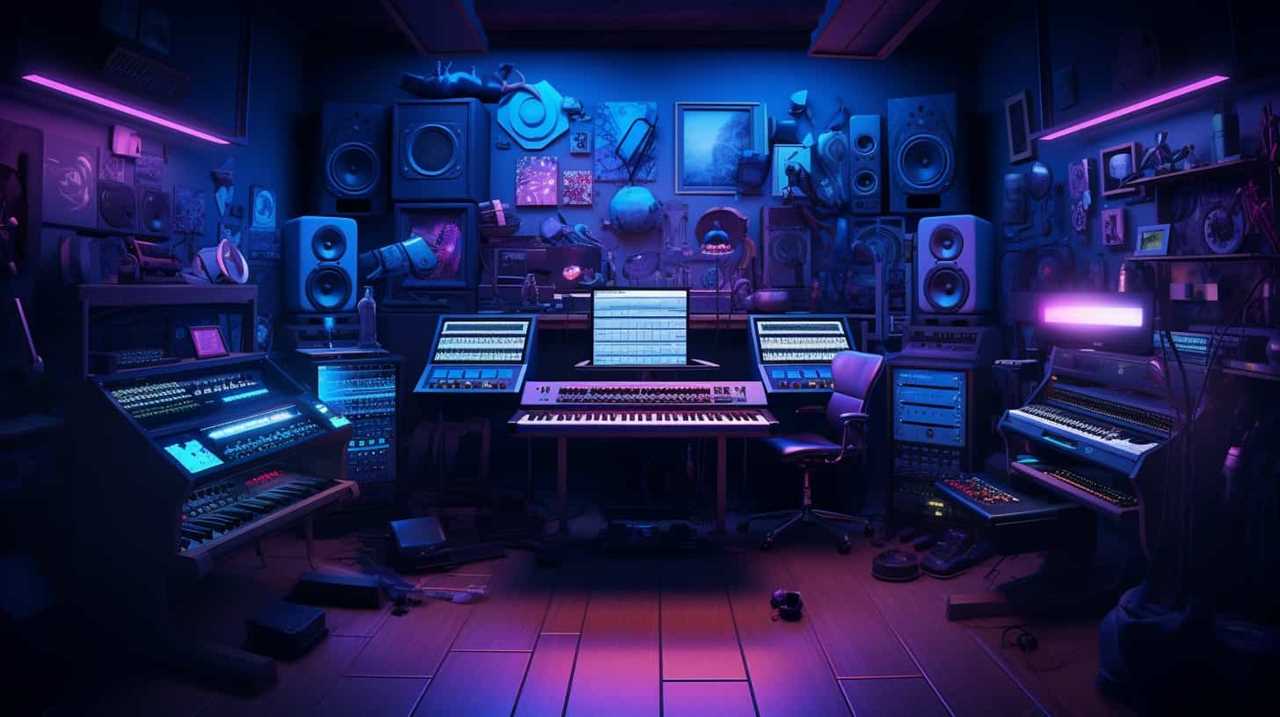
Enter the enigmatic world of dark ambient music, where we craft haunting sonic landscapes that carry you to otherworldly realms.
With our imagination as our guide, we conjure haunting audio landscapes that defy convention and challenge the boundaries of sound.
Through the alchemy of brainstorming, field recordings, and digital manipulation, we layer sounds with precision and intention.
Join us on this sonic journey, as we delve into the depths of mood creation and incorporate chilling elements that will leave you mesmerized.
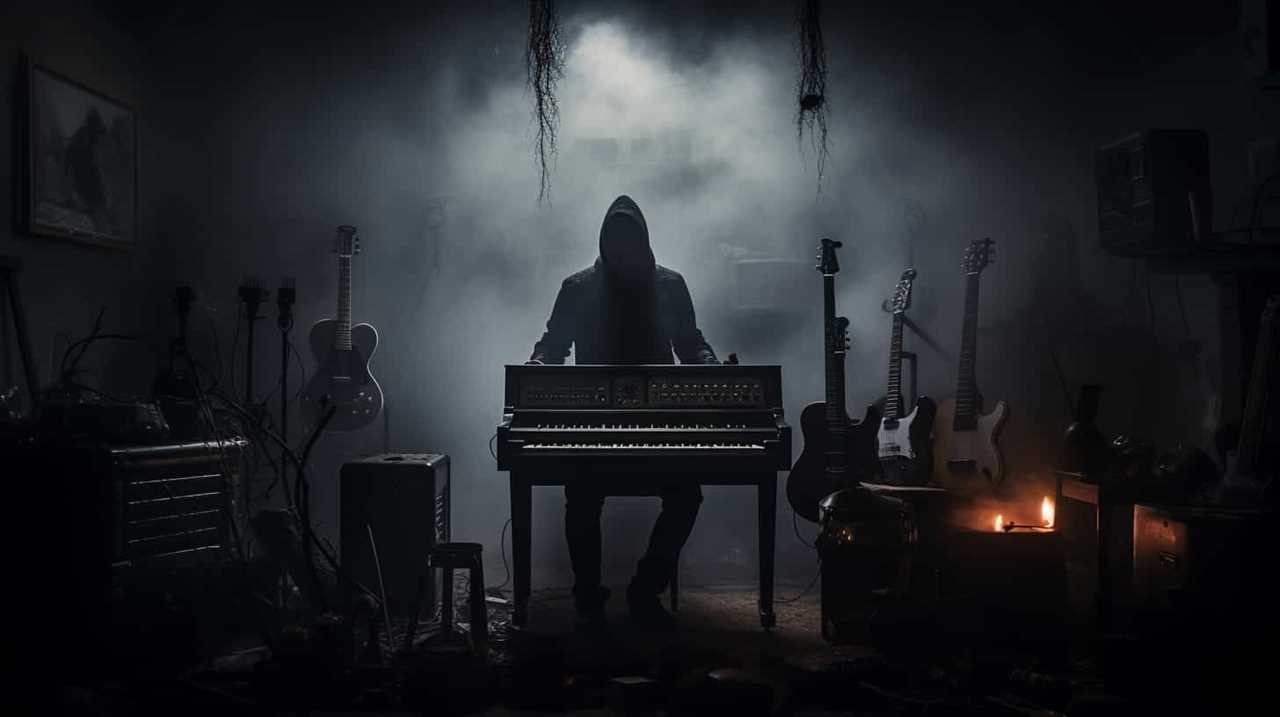
Key Takeaways
- Delve into exploring sonic textures and experiment with dissonance and harmony to create a rich tapestry of sound.
- Utilize field recordings to enhance atmospheric quality and add layers of realism and depth to the music.
- Manipulate sounds digitally using sound manipulation software to shape and transform them, opening up a world of sonic possibilities.
- Layer audio tracks to create a sense of depth and texture, incorporating a variety of atmospheric sounds and experimenting with unconventional instrumentation.
Brainstorming Sound Ideas
What are some ways we can brainstorm sound ideas to create haunting audio landscapes for our dark ambient music?
One approach is to delve into the realm of exploring sonic textures. By experimenting with dissonance and harmony, we can create a rich tapestry of sound that evokes a sense of unease and mystery.
We can manipulate the timbre of instruments, incorporate field recordings, and utilize unconventional sound sources to push the boundaries of our compositions.
The possibilities are endless, and the key is to let our imaginations run wild in this sonic exploration.
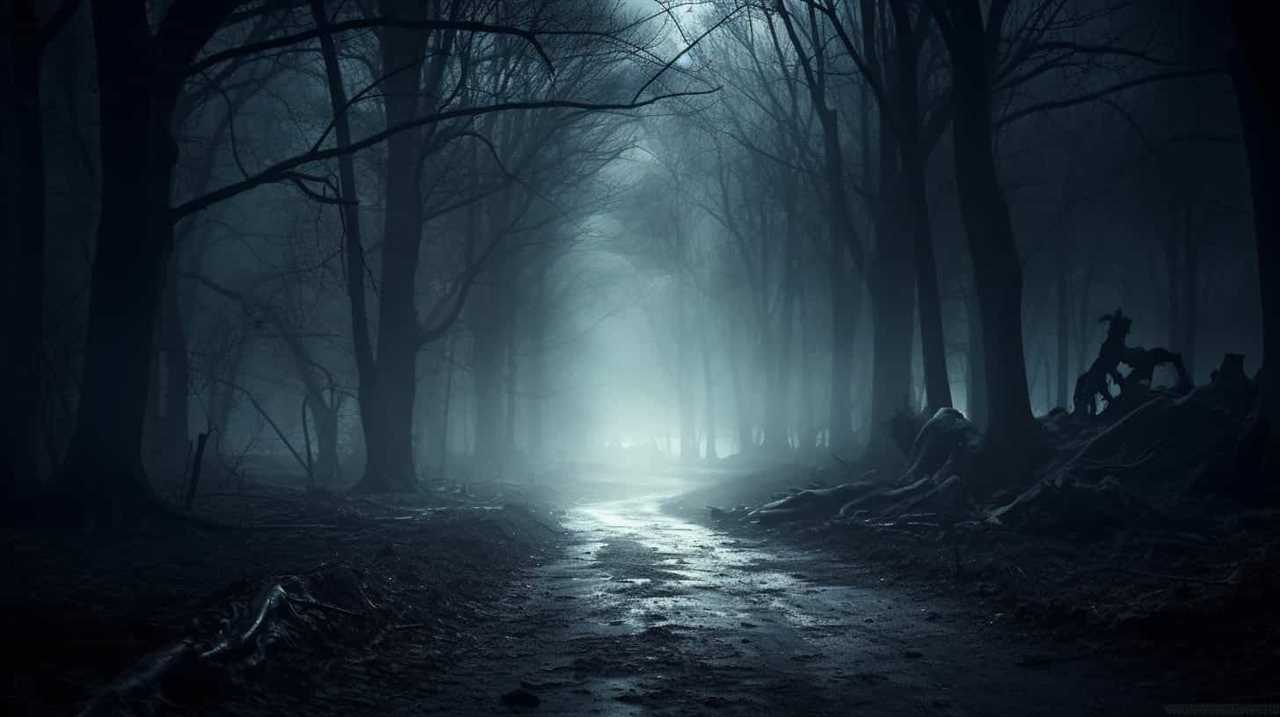
Utilizing Field Recordings
We can enhance the atmospheric quality of our dark ambient music by incorporating field recordings and manipulating them to create haunting audio landscapes.
Utilizing field recordings allows us to capture environments and bring them into our compositions, adding layers of realism and depth.
By blending these soundscapes and textures with our music, we can create immersive sonic experiences that transport listeners to new worlds.
Additionally, field recordings can serve as a foundation for sound effects creation and sound manipulation, providing endless possibilities for experimentation and innovation.
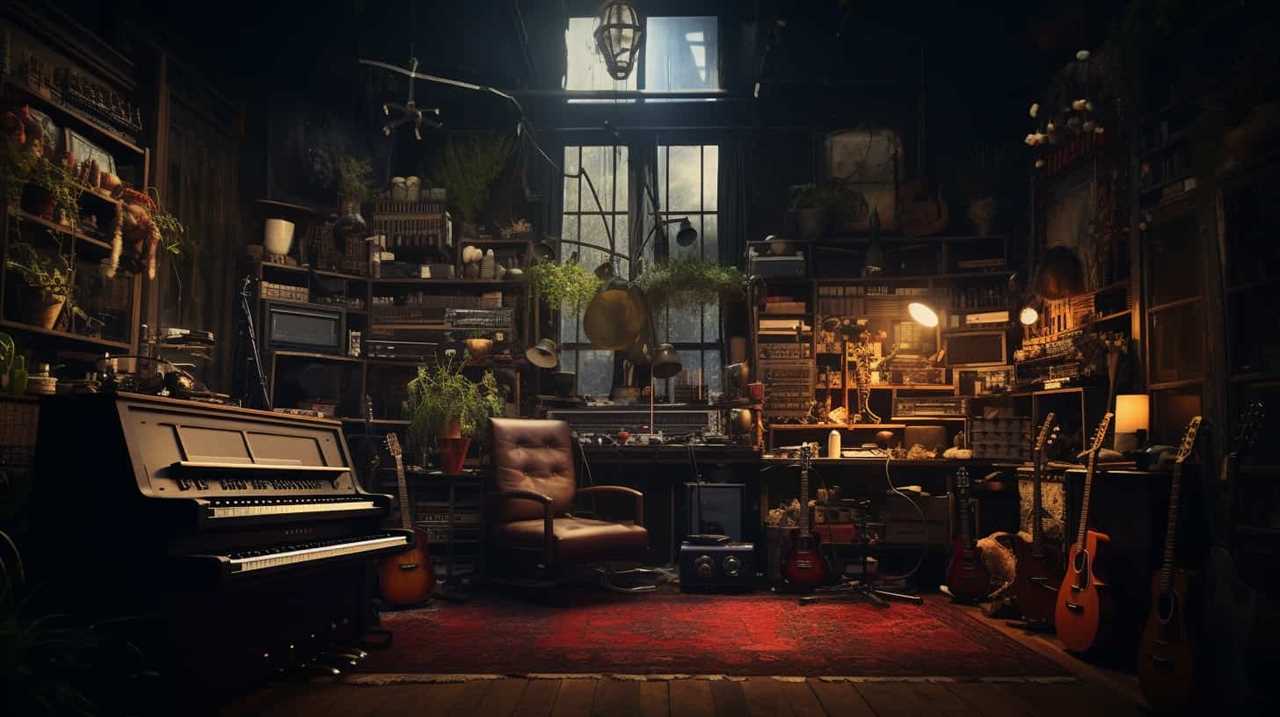
Manipulating Sounds Digitally
As we delve into the realm of manipulating sounds digitally, we can explore the vast array of tools and techniques available to craft eerie and immersive audio experiences.
Sound manipulation software, with its innovative features and capabilities, allows us to shape and transform sounds in ways previously unimaginable. From time-stretching and pitch-shifting to granular synthesis and spectral editing, these sound editing techniques open up a world of sonic possibilities.
Now, let’s delve into the art of layering audio tracks to further enhance our dark ambient compositions.
Layering Audio Tracks
Our goal in layering audio tracks is to create a sense of depth and texture by combining multiple sound elements into a cohesive and haunting sonic tapestry. To evoke emotion in our audience, we employ the following techniques:
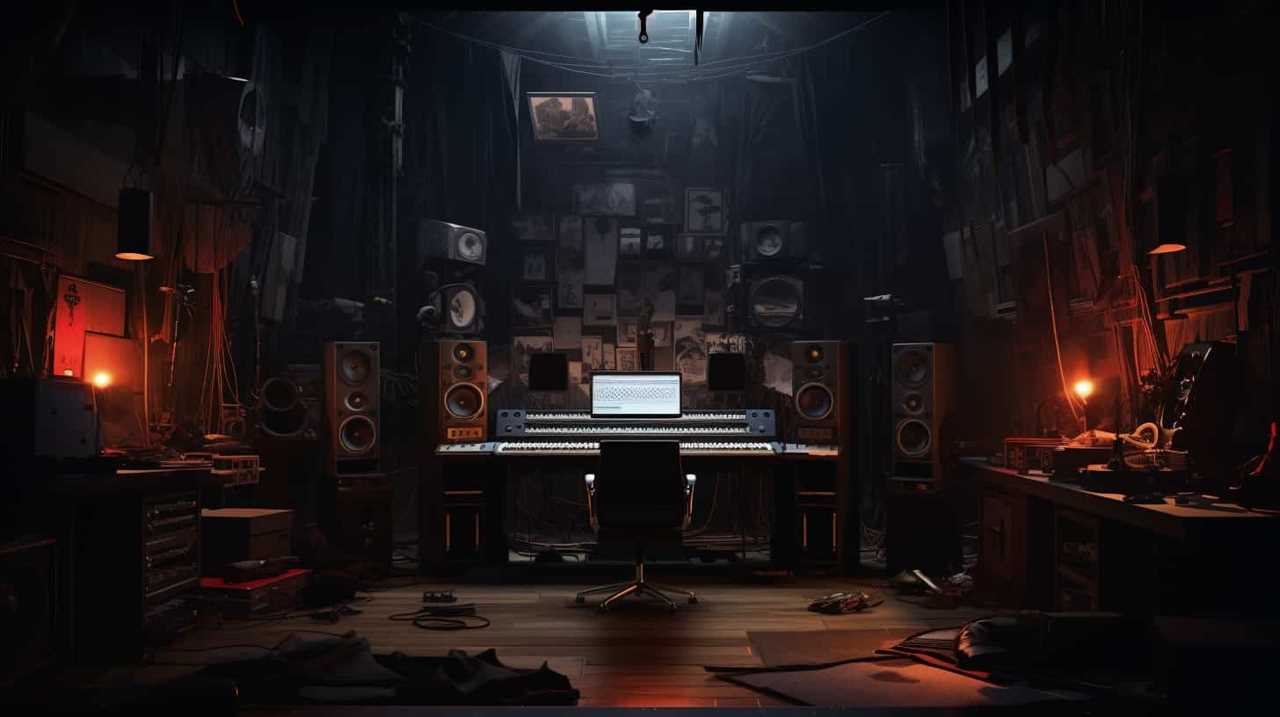
-
Exploring soundscapes: By incorporating a variety of atmospheric sounds, we transport listeners to eerie and otherworldly environments.
-
Creating tension: We use dissonant chords, unsettling melodies, and subtle rhythmic patterns to build suspense and unease.
-
Experimenting with unconventional instrumentation: By introducing unconventional instruments and manipulating their sounds, we push the boundaries of traditional music and create unique sonic experiences.
Focusing on Mood Creation
As we delve into the realm of mood creation, we find ourselves immersed in the art of evoking eerie atmospheres and manipulating emotional responses.
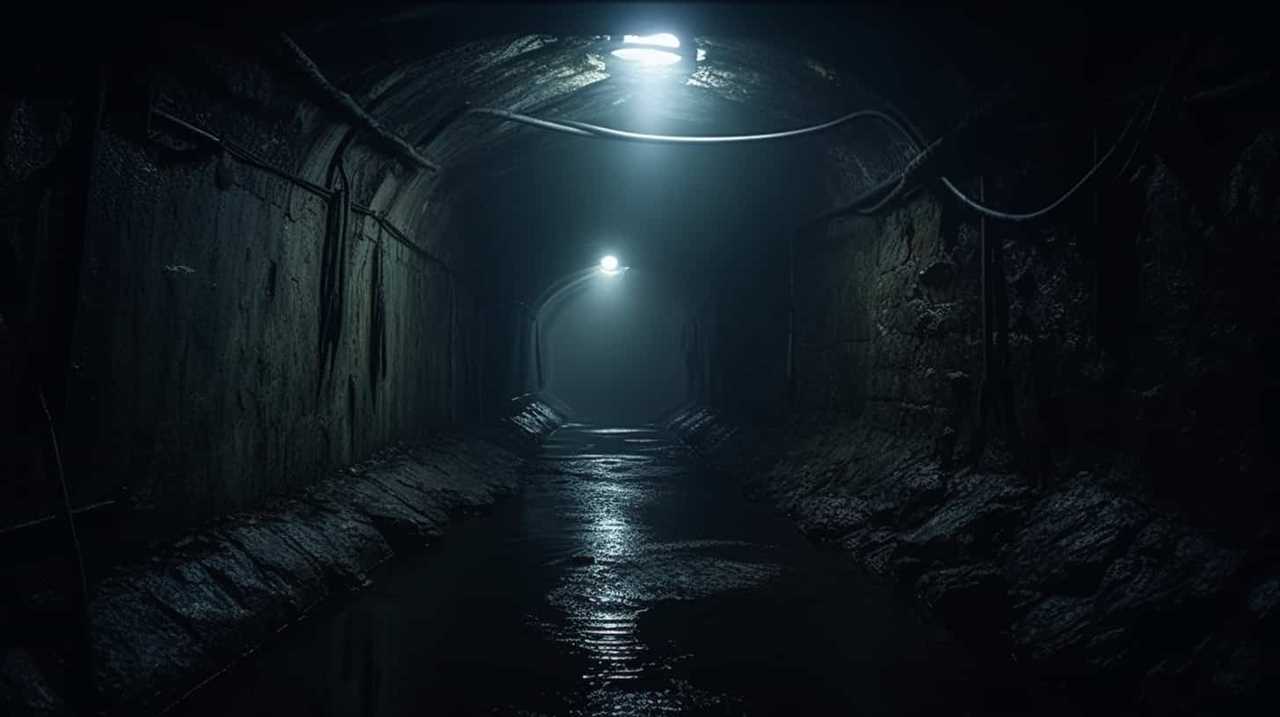
Through the careful selection of soundscapes, we can transport listeners to otherworldly dimensions, where the line between reality and imagination blurs.
Evoking Eerie Atmospheres
We use various techniques to craft chilling atmospheres that immerse listeners in a haunting sonic experience. To evoke emotion in our audience, we employ the following techniques:
-
Unleashing the otherworldly sounds of unconventional instruments, like the ethereal vibrations of a theremin or the mournful wails of a bowed saw.
-
Experimenting with spatial effects to create a sense of unease, such as using panning techniques to make sounds move around the listener or adding reverberation to create a haunting, cavernous effect.
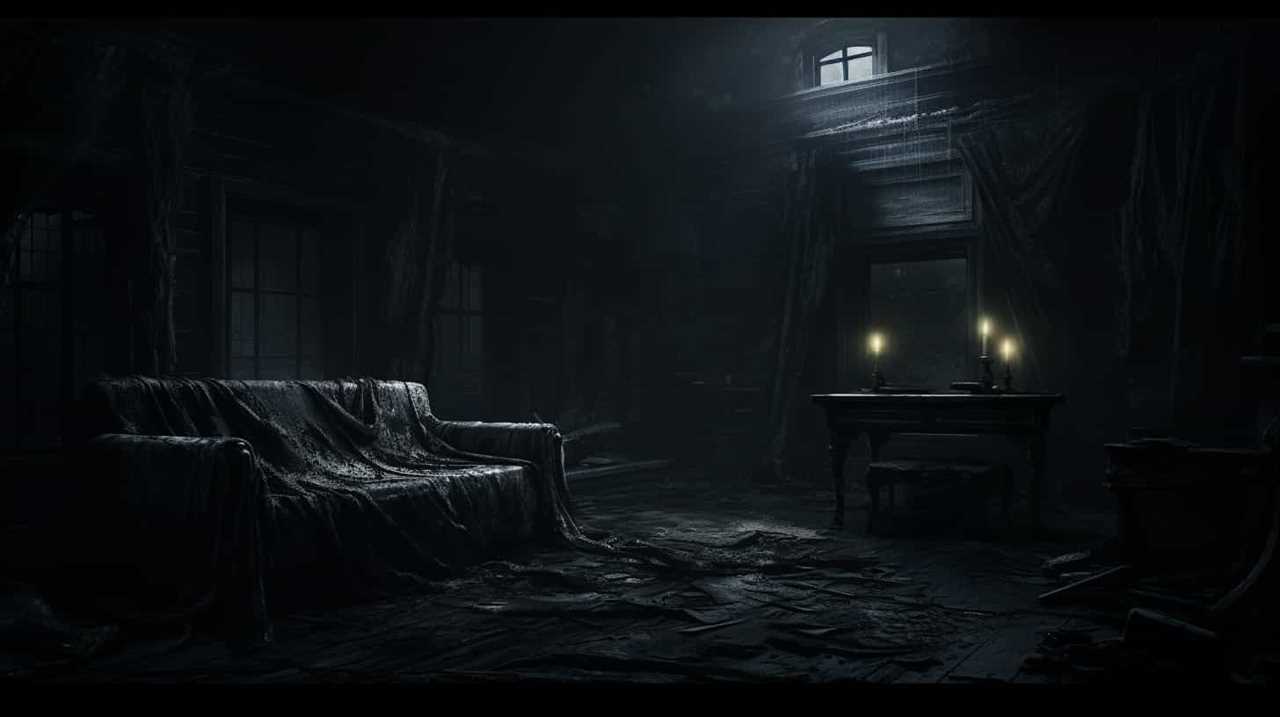
-
Layering dissonant melodies and unsettling harmonies to create an eerie and unsettling mood that lingers long after the music stops.
Manipulating Emotional Responses
To effectively manipulate emotional responses and create a specific mood, we can utilize various techniques in dark ambient music. By carefully crafting the sonic elements, we can evoke a psychological impact on the listener, drawing them into a world of haunting and introspection.
Sound symbolism plays a crucial role in this process, as certain sounds can symbolize emotions or concepts, allowing us to communicate on a deeper level and elicit profound emotional reactions.
Through experimentation and innovation, we can craft immersive soundscapes that resonate with the listener’s soul.
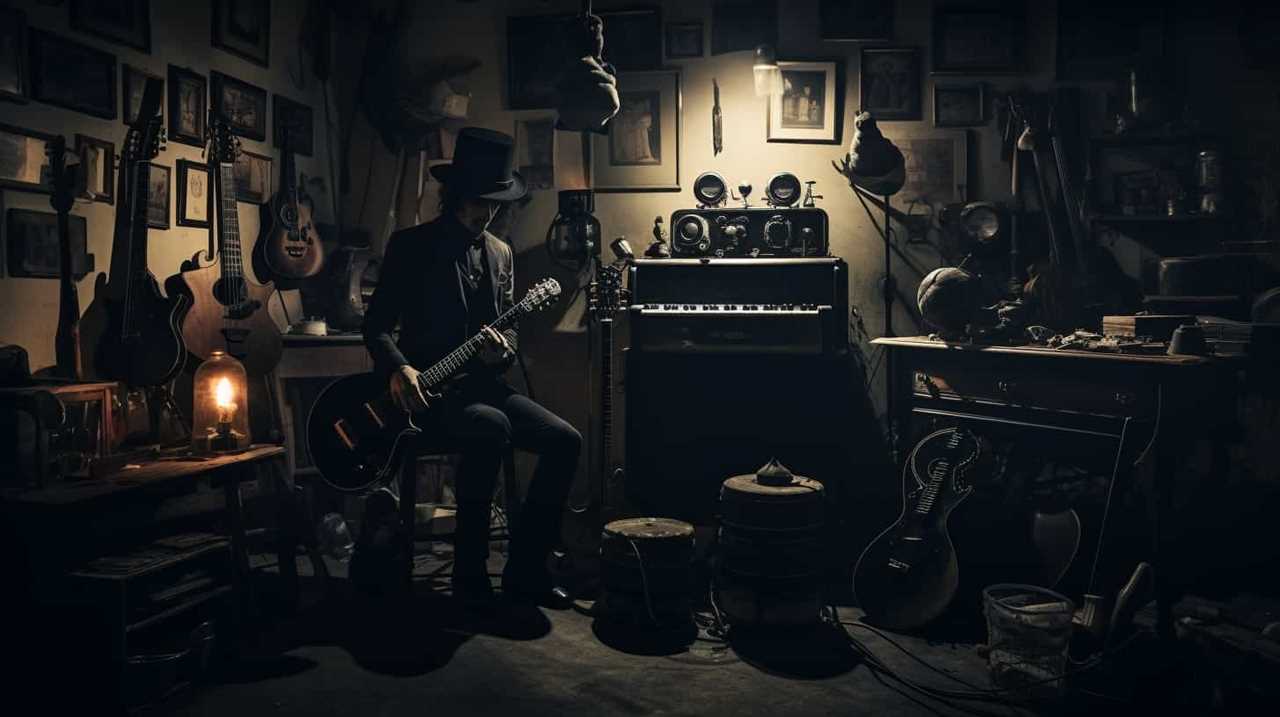
Incorporating Horror Elements
As we continue our exploration into the creation of dark ambient music, we now turn our attention to the spine-chilling realm of incorporating horror elements.
In order to evoke an eerie atmosphere, we delve into eerie sound design techniques, manipulating frequencies and textures to send shivers down the listener’s spine.
Building suspenseful atmospheres becomes our mission, as we experiment with dissonant chords, eerie drones, and unsettling rhythms.
And to truly immerse our audience in a world of terror, we embrace the power of chilling instrumentation, utilizing haunting melodies and ghostly voices to elicit a sense of unease.
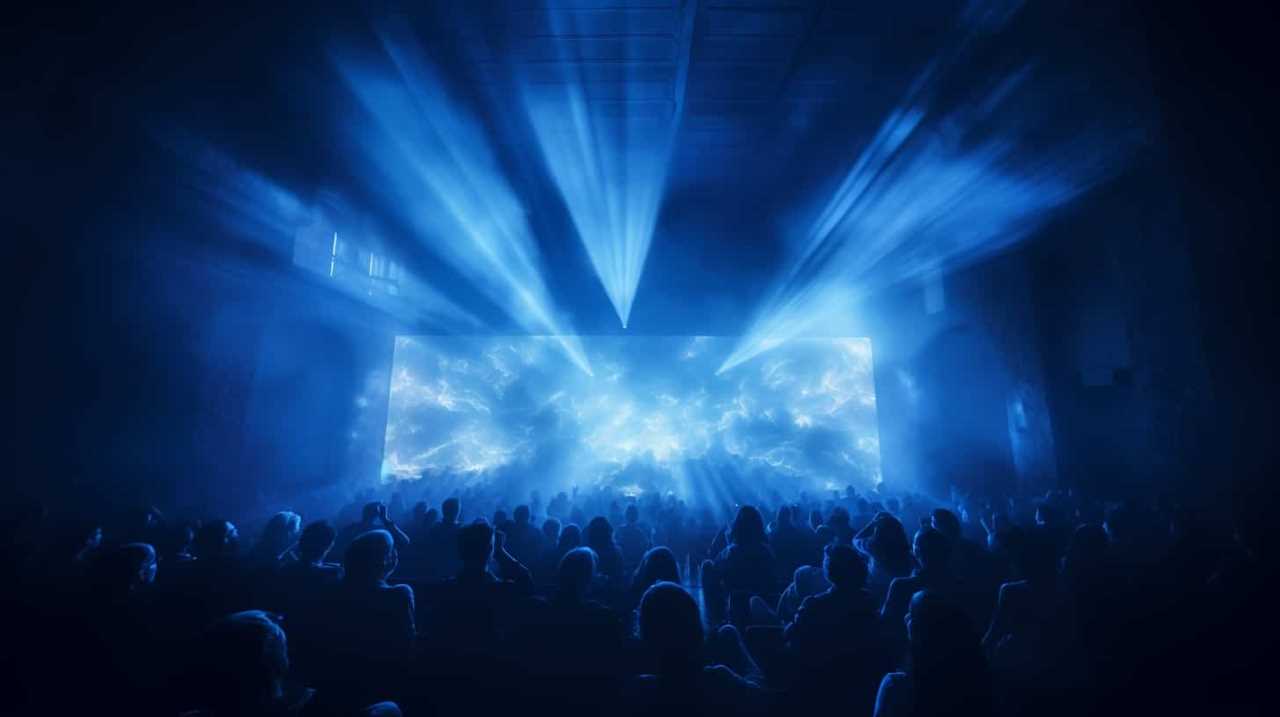
Eerie Sound Design Techniques
Our goal is to incorporate a few chilling sound design techniques into our dark ambient music, creating an eerie atmosphere that will send shivers down the listener’s spine. To achieve this, we employ a range of innovative methods that tap into the psychological effects of fear and create immersive experiences.
Here are three techniques we use to evoke a sense of unease and suspense:
-
Layering dissonant tones and unsettling frequencies to create an unsettling sonic landscape.
-
Experimenting with unconventional instruments and found sounds to add a sense of mystery and otherworldliness.
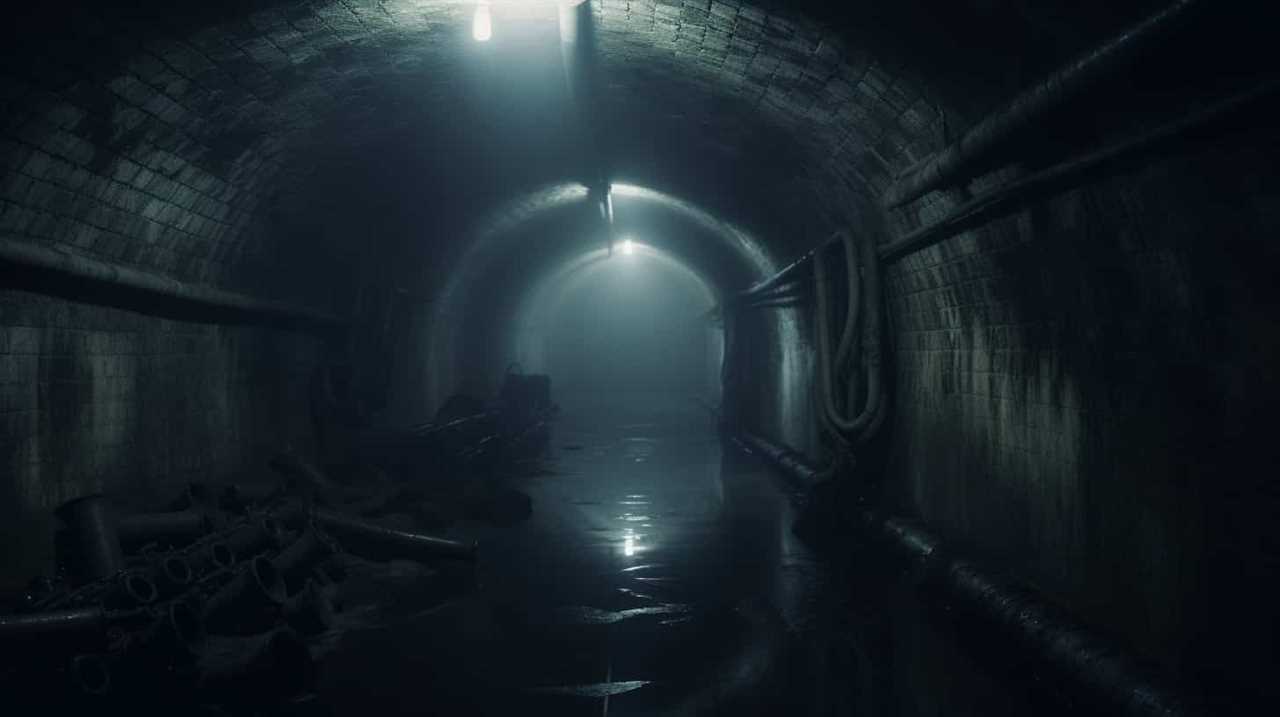
-
Utilizing strategic silence and sudden bursts of sound to startle and unnerve the listener.
Building Suspenseful Atmospheres
We combine eerie melodies with haunting sound effects to build suspenseful atmospheres in our dark ambient music. Creating tension is a crucial element in our compositions.
We experiment with unconventional instruments and techniques, pushing the boundaries of sound to evoke a sense of unease and anticipation.
Utilizing silence is equally important, as it allows the listener to anticipate what comes next, heightening the suspense.
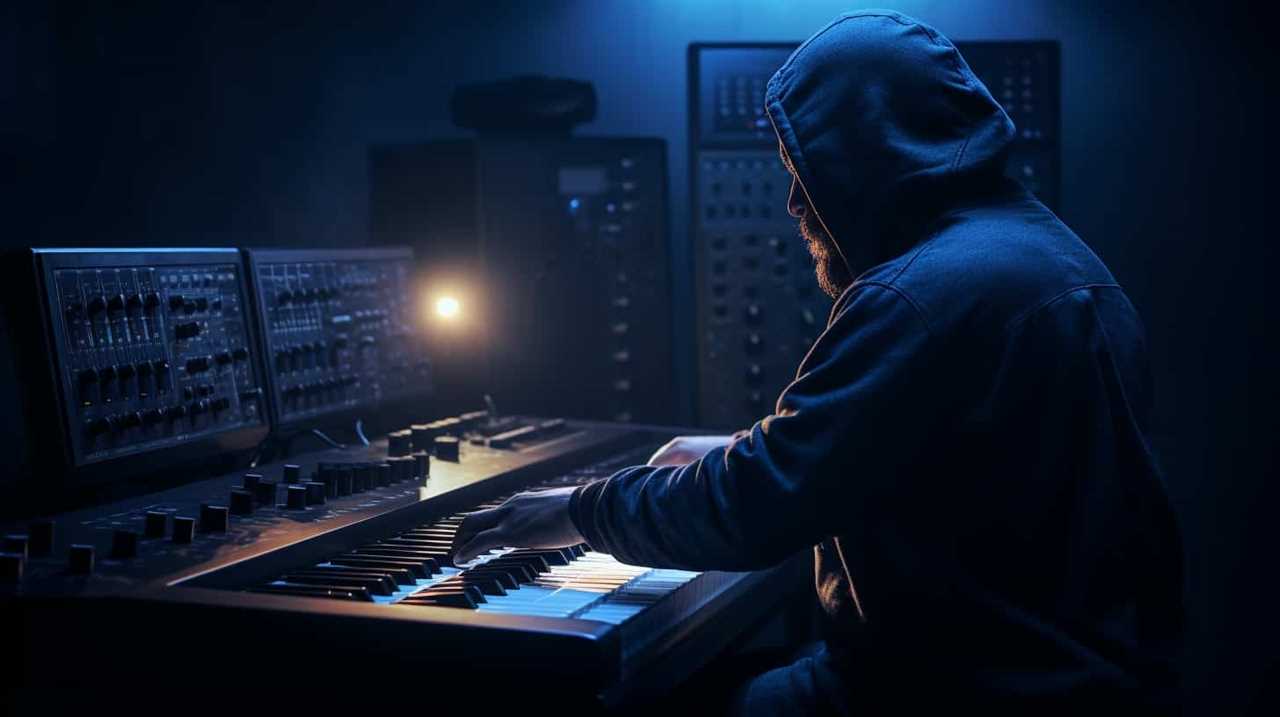
Our goal is to craft immersive, innovative soundscapes that captivate and disturb the senses.
Utilizing Chilling Instrumentation
During the composition process, we often experiment with chilling instrumentation and incorporate horror elements to create an unsettling and haunting atmosphere in our dark ambient music.
To achieve this, we explore synthesizers to generate eerie and otherworldly sounds that send shivers down the spine.
We also experiment with effects like distortion, reverb, and delay to add depth and texture to the music, creating an immersive and macabre sonic experience.
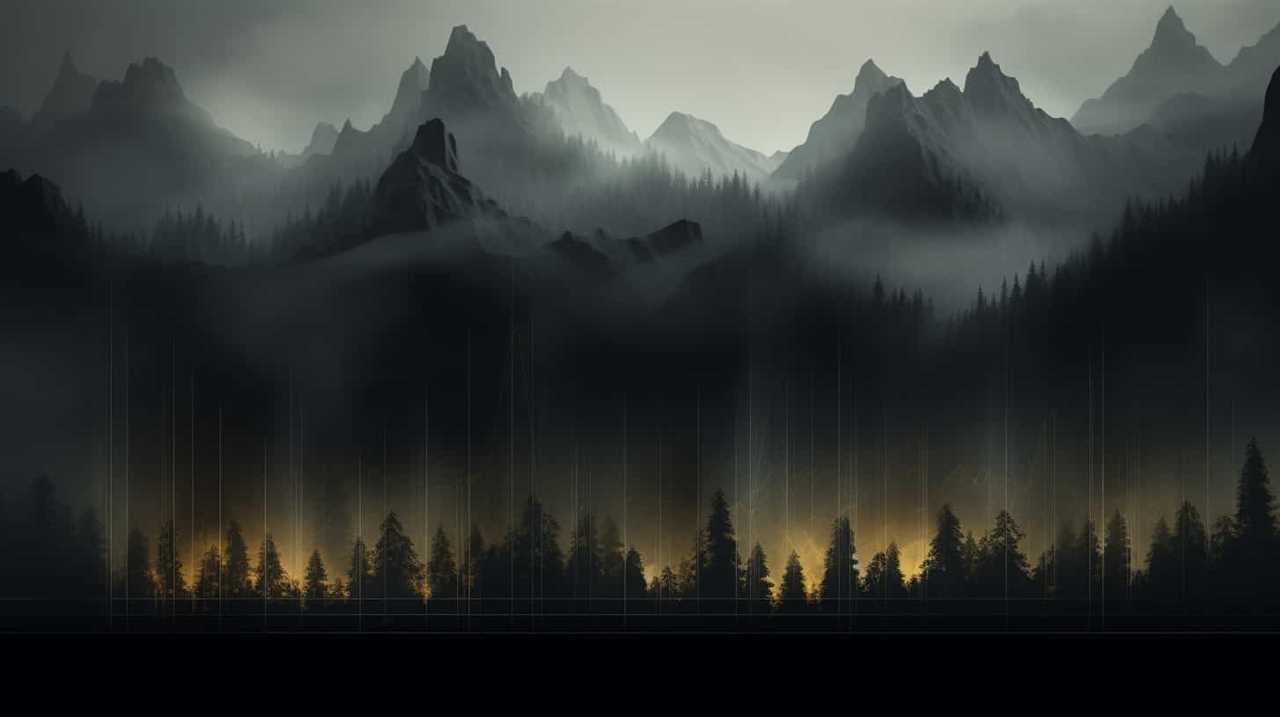
Frequently Asked Questions
What Are Some Effective Techniques for Creating a Sense of Unease or Suspense in Dark Ambient Music?
When it comes to creating a sense of unease or suspense in dark ambient music, we’ve found that there are a few effective techniques.
One way is by playing with tempo and rhythm, creating tension through subtle changes and unexpected pauses.
We also like to experiment with dissonant harmonies and textures, layering eerie sounds to create an unsettling atmosphere.
These techniques help us craft haunting audio landscapes that push the boundaries of traditional music and immerse our listeners in a truly atmospheric experience.
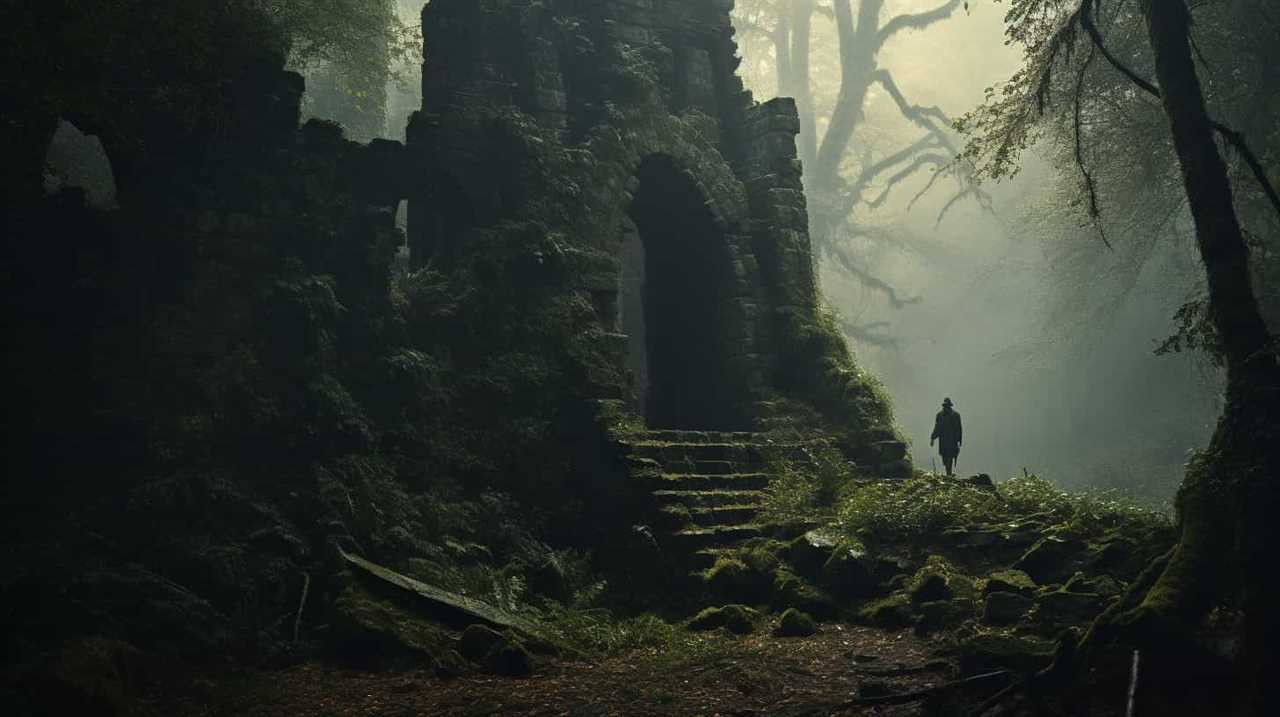
How Can I Incorporate Unconventional or Experimental Sounds Into My Dark Ambient Compositions?
When it comes to creating atmospheric textures in our dark ambient compositions, we love to incorporate unconventional and experimental sounds. By blending found sounds with eerie synths and haunting melodies, we can craft truly unique and unsettling audio landscapes.
We explore the depths of sound manipulation, pushing boundaries and experimenting with unconventional recording techniques. This allows us to create a sense of unease and suspense that’s truly innovative and captivating for our audience.
Are There Any Specific Field Recording Locations or Environments That Work Particularly Well for Capturing Eerie or Haunting Sounds?
When capturing eerie or haunting sounds, specific field recording locations and environments can greatly enhance the atmosphere of our dark ambient compositions.
By immersing ourselves in abandoned buildings, dense forests, or desolate landscapes, we can uncover unique and unsettling sonic textures.
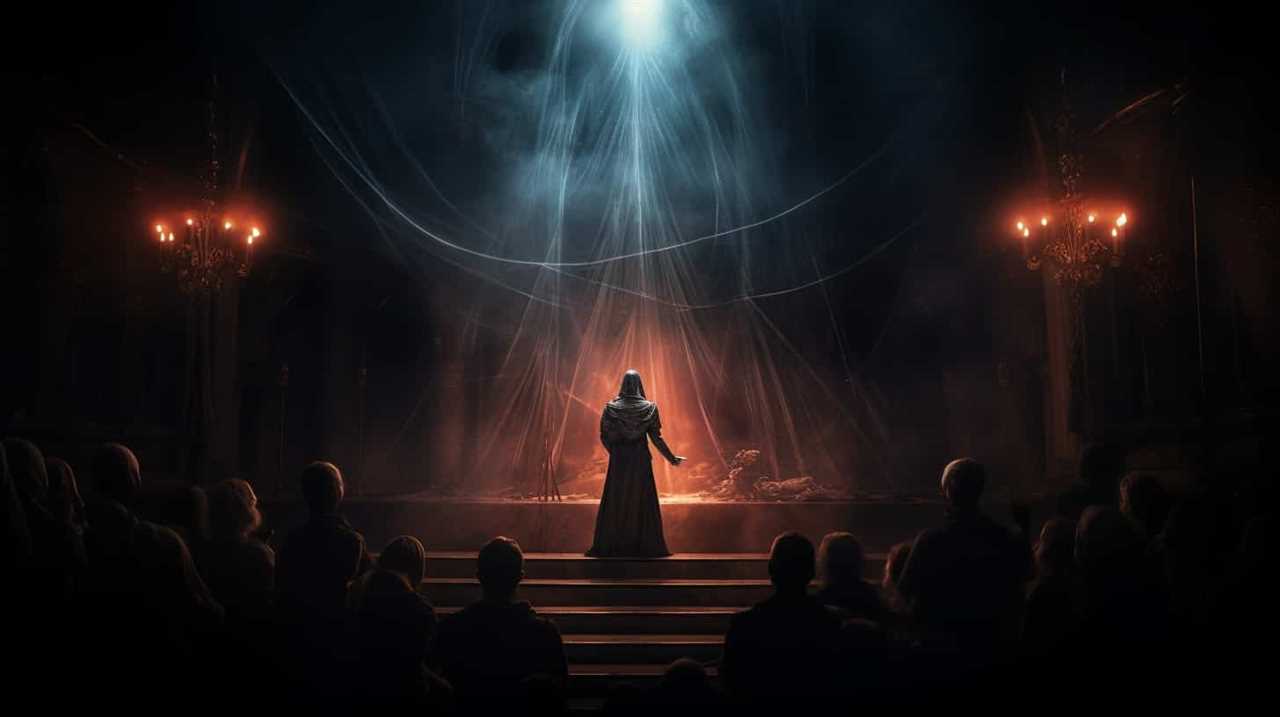
Additionally, incorporating found objects into our music adds an extra layer of experimentation and creativity.
What Are Some Recommended Software or Plugins for Manipulating and Distorting Audio to Achieve a Haunting Effect in Dark Ambient Music?
When it comes to manipulating audio in dark ambient music, there are some recommended software and plugins that can help achieve a haunting effect. We explore how to use effects processors to create chilling audio effects and recommend hardware and equipment that can enhance the overall experience.
Experimenting with these tools allows us to push the boundaries of sound and create unique, atmospheric landscapes that captivate our audience’s imagination.
Let your creativity flow and dive into the world of dark ambient music.
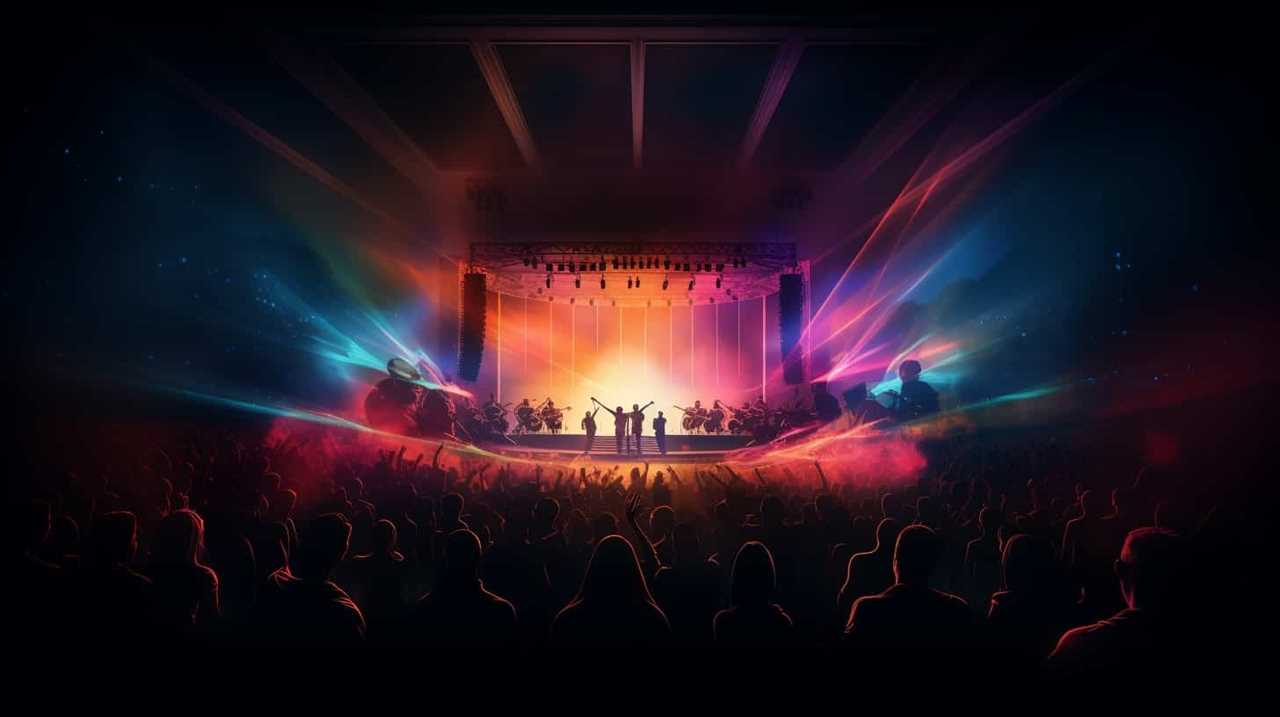
Can You Provide Any Tips for Effectively Layering Multiple Audio Tracks to Create a Dense and Atmospheric Sound in Dark Ambient Music?
When layering multiple audio tracks to create a dense and atmospheric sound in dark ambient music, we find that the key is to experiment with different layering techniques.
By combining various elements, such as drones, field recordings, and manipulated sounds, we can create tension and release within our compositions.
We strive to push the boundaries of traditional music-making, exploring unconventional methods to achieve unique and haunting audio landscapes.
Through this experimental approach, we aim to captivate our audience with innovative and immersive sonic experiences.
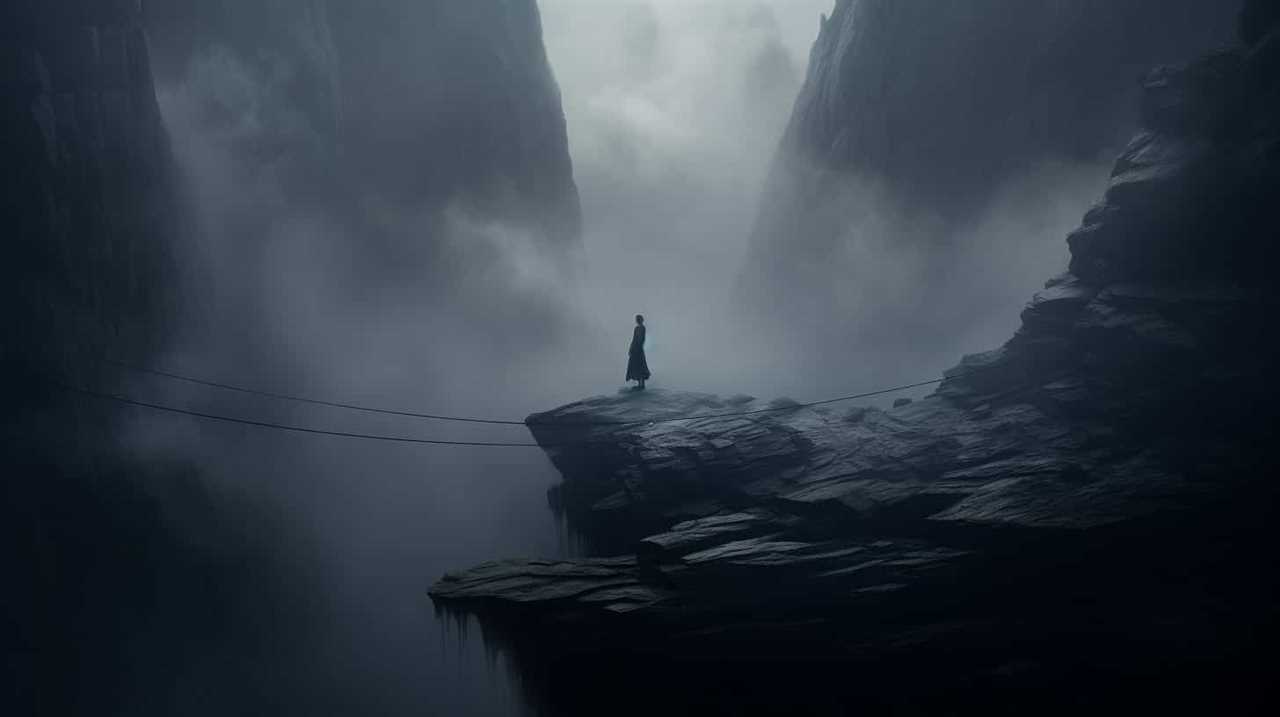
Conclusion
As we delve deeper into the world of dark ambient music, we discover that it’s a realm of endless possibilities and eerie beauty.
By combining field recordings, digital manipulation, and layering techniques, haunting audio landscapes are brought to life, captivating listeners with their atmospheric and experimental nature.
Imagine walking through an abandoned asylum, the faint echoes of distant footsteps and the haunting whispers of forgotten souls filling the air.
This is the power of dark ambient music, where the boundaries of sound are pushed to their limits, drawing us into a realm of spine-chilling enchantment.
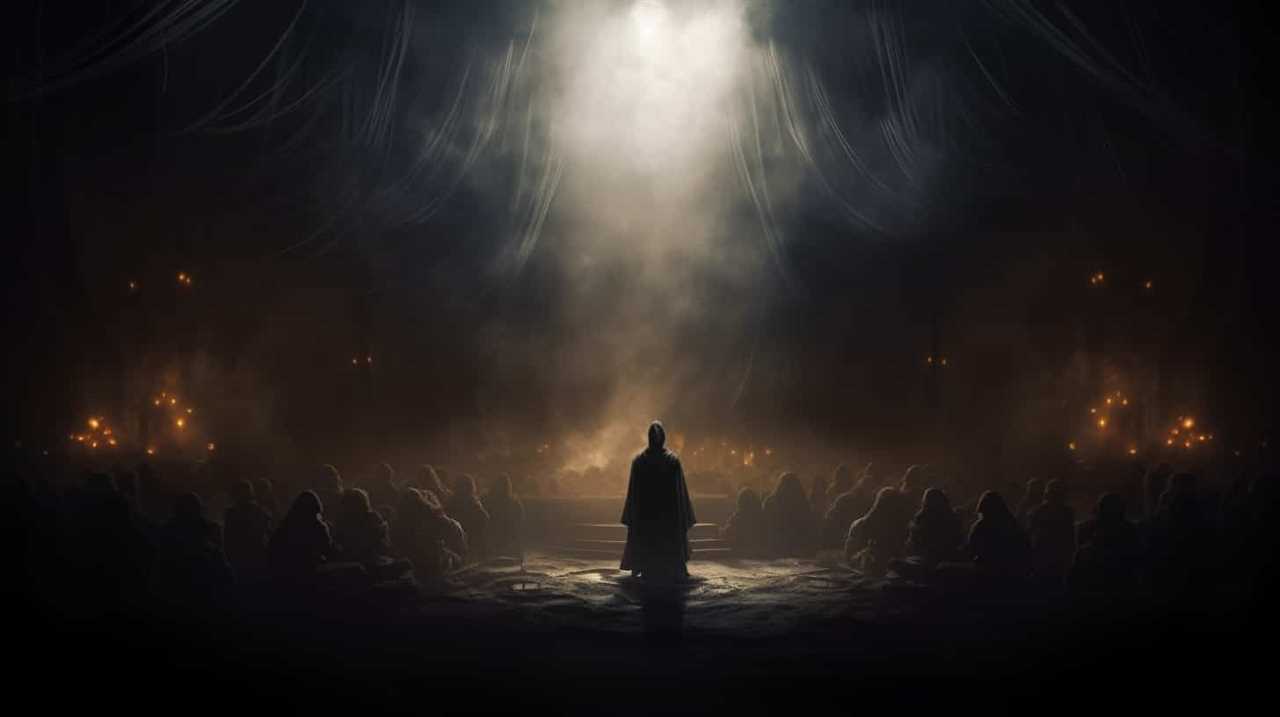
Ambient
Dive Deeper Into the Abyss: Incorporating Field Recordings Into Dark Ambient Music
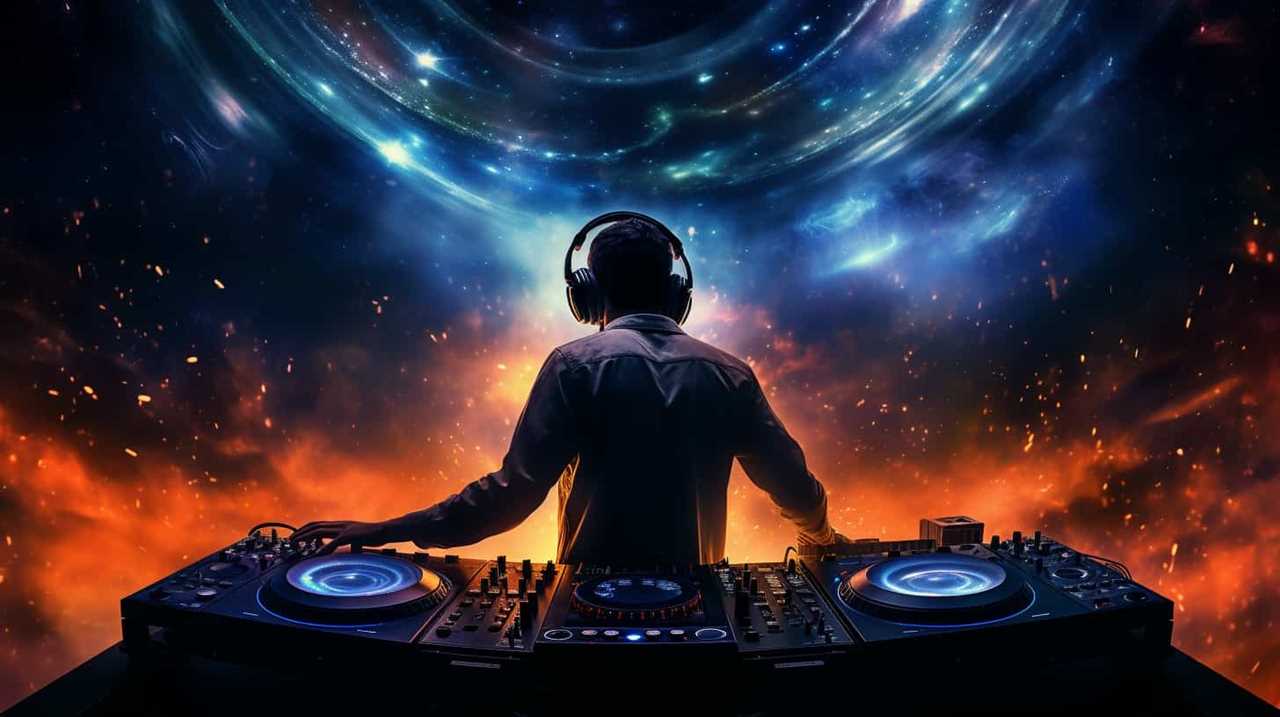
We delve deep into the sonorous abyss, venturing into the enigmatic domain of dark ambient music.
Join us as we dive deeper into the abyss, uncovering the secrets of incorporating field recordings into this innovative genre.
From scouting intriguing locations to manipulating and layering organic sounds, we reveal the techniques that add texture and depth to the atmospheric experience.
Prepare to be captivated by the unique blend of musical elements and the polished result that awaits in this sonic journey.
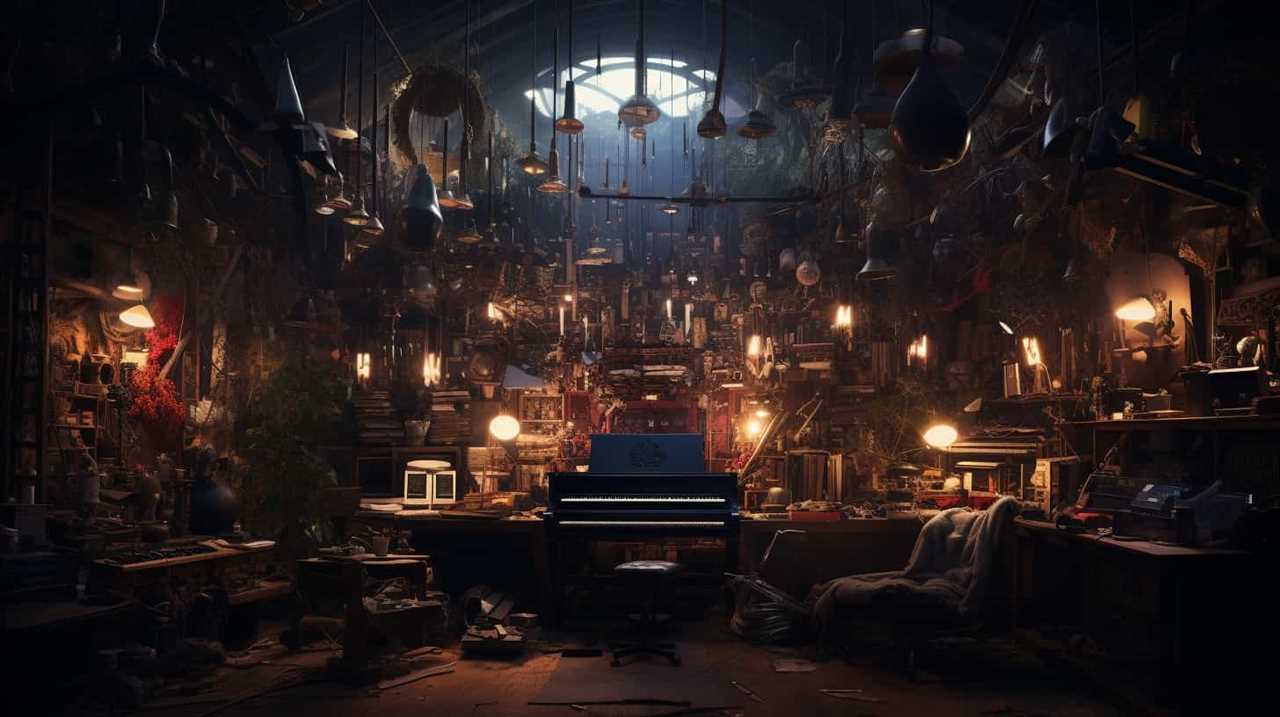
Key Takeaways
- Abandoned structures and natural elements contribute to the eerie and authentic sonic landscape of dark ambient music.
- Blending natural and synthetic sounds enhances the depth and mood of compositions.
- Organic recordings evoke emotional responses and enhance immersion in the music.
- Creative sound manipulation techniques, such as layering and granular synthesis, create unique textures and atmospheric drones.
Scouting Intriguing Locations for Field Recordings
We love exploring and discovering fascinating places for capturing field recordings. One of the most intriguing locations we’ve come across are abandoned structures. These forgotten buildings hold a certain mystique that adds an eerie and atmospheric quality to our recordings.
The dilapidated walls, creaking floors, and haunting echoes create a unique sonic landscape that can’t be replicated. Additionally, we find great pleasure in capturing the natural elements that surround these structures, such as the wind rustling through trees or the sound of raindrops on broken windows. These organic sounds bring a raw and authentic quality to our recordings, providing a depth and richness that’s unparalleled.
Recording Organic Sounds to Capture the Atmosphere
Recording organic sounds is a crucial aspect of capturing the atmosphere in dark ambient music. By incorporating these natural elements, such as the rustling of leaves or the chirping of birds, into our sonic landscapes, we enhance the authenticity and immersion of our compositions.
Furthermore, through creative sound manipulation techniques, we can transform these organic recordings into eerie, haunting textures that further contribute to the dark and mysterious nature of the music.
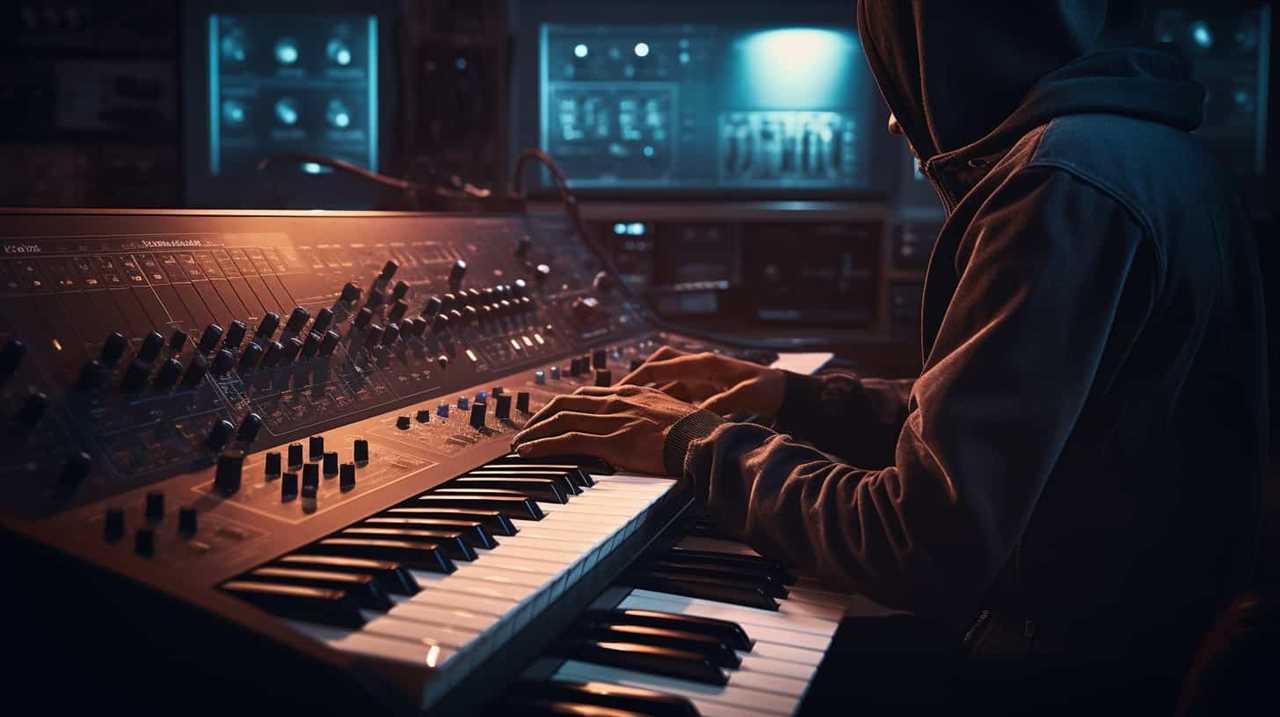
Enhancing Sonic Landscapes
As we delve into enhancing sonic landscapes through the recording of organic sounds, we can capture the essence and atmosphere of the environment. By exploring soundscapes and blending natural and synthetic sounds, we create a rich and immersive sonic experience for the listener.
Recording organic sounds allows us to bring a sense of authenticity and depth to our compositions, elevating the overall mood and texture of the music. This innovative approach adds a unique and captivating element to dark ambient music.
Authenticity and Immersion
One of the key elements in creating an immersive experience in dark ambient music is capturing the atmosphere through the recording of organic sounds. By incorporating found sounds into our compositions, we can explore listener perception and enhance the authenticity of the music.
These recordings add a layer of depth and realism, transporting the listener to different environments and evoking emotional responses. The incorporation of organic sounds allows for a more immersive and captivating experience, pushing the boundaries of innovation in dark ambient music.
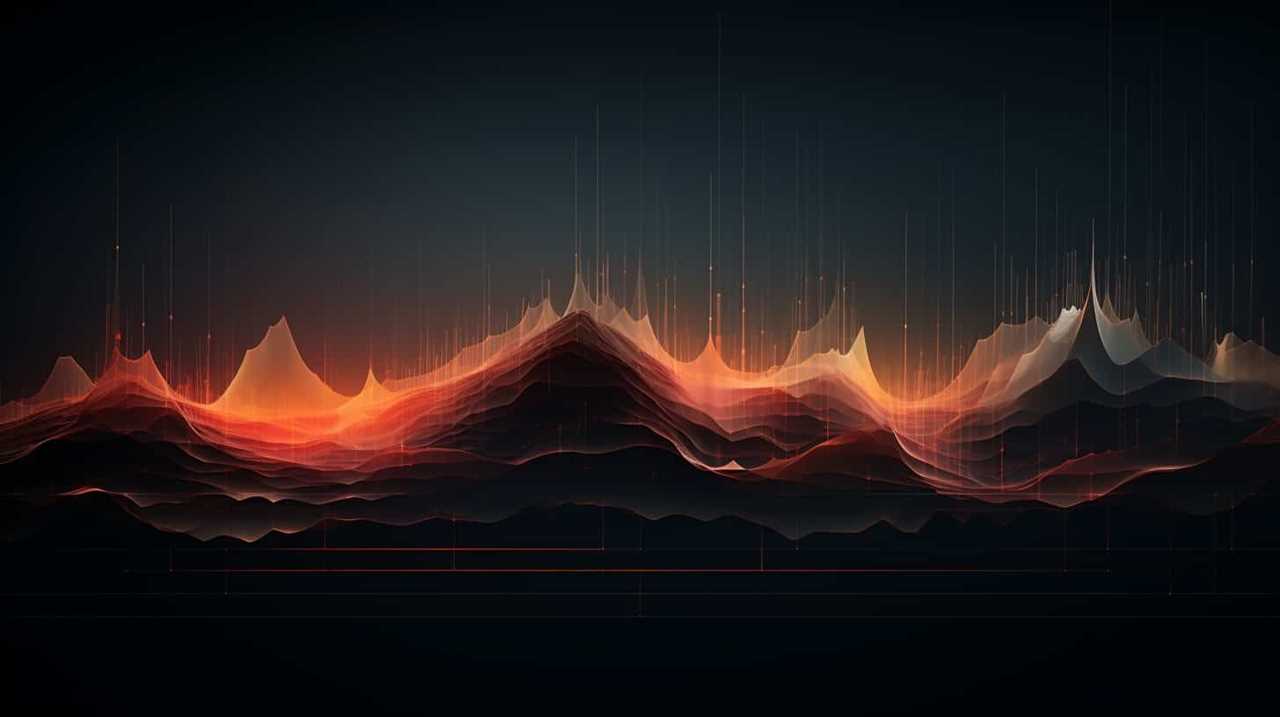
Creative Sound Manipulation
We can enhance the atmospheric quality of our dark ambient music by creatively manipulating organic sounds to capture a broader range of emotions and intensify the listener’s experience. Here are five sound manipulation techniques that can be used to incorporate found sounds into our compositions:
- Layering and blending different organic sounds to create unique textures
- Applying effects and filters to alter the timbre and mood of the recordings
- Manipulating the pitch and tempo of the sounds to create tension and suspense
- Using granular synthesis to transform small fragments of found sounds into atmospheric drones
- Experimenting with spatialization techniques to create a sense of depth and immersion
By employing these techniques, we can harness the power of organic sounds and elevate our dark ambient music to new heights.
Now, let’s delve into the next section and explore the possibilities of experimenting with ambient noise for dark ambient music.
Experimenting With Ambient Noise for Dark Ambient Music
When it comes to dark ambient music, experimenting with ambient noise can yield numerous benefits.
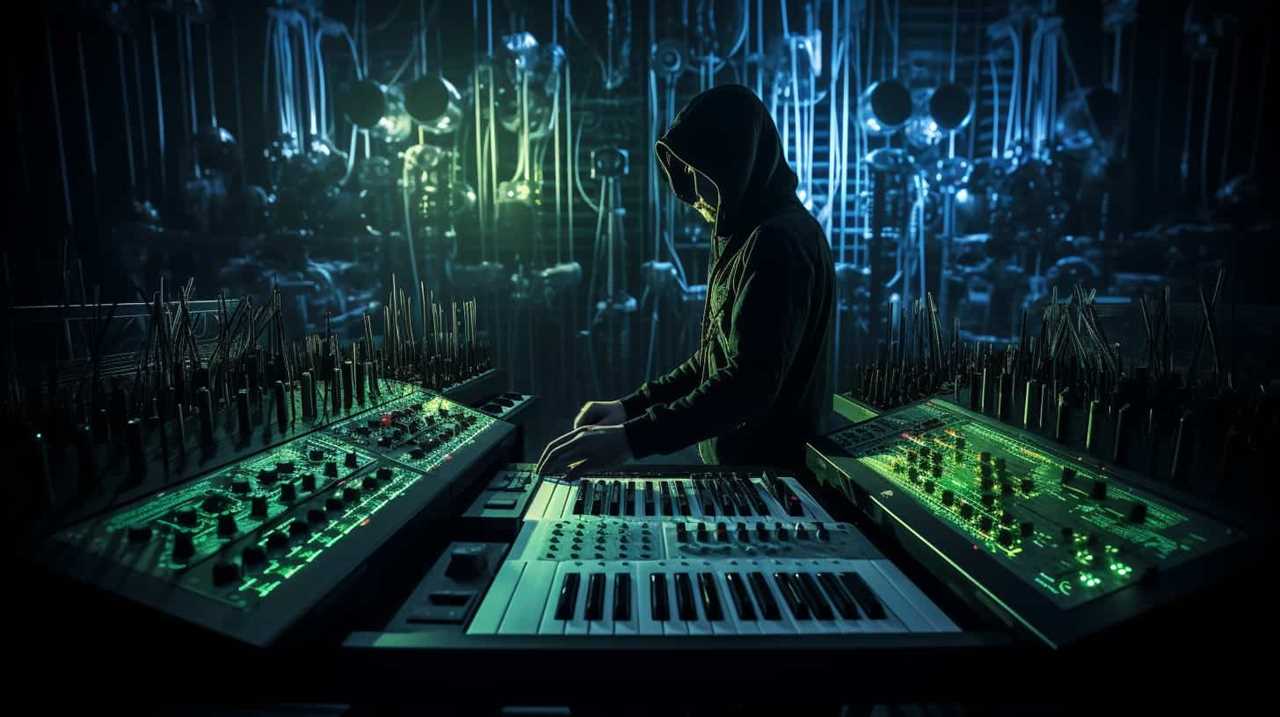
By incorporating ambient noise into our compositions, we can create a more immersive and atmospheric experience for our listeners.
Techniques such as capturing field recordings, manipulating soundscapes, and layering different elements can enhance the overall mood and texture of the music, making it more evocative and captivating.
Benefits of Incorporating
As musicians, we can greatly benefit from incorporating ambient noise into our dark ambient music, as it adds depth and realism to our compositions. Here are some reasons why experimenting with ambient noise can enhance our sonic explorations and emotional impact:
- Creates a sense of place and atmosphere
- Adds texture and layers to the music
- Evokes specific emotions and moods
- Enhances the storytelling aspect of the music
- Allows for unique and innovative sonic combinations
Now that we understand the benefits of incorporating ambient noise, let’s dive into the techniques for capturing these captivating sounds.
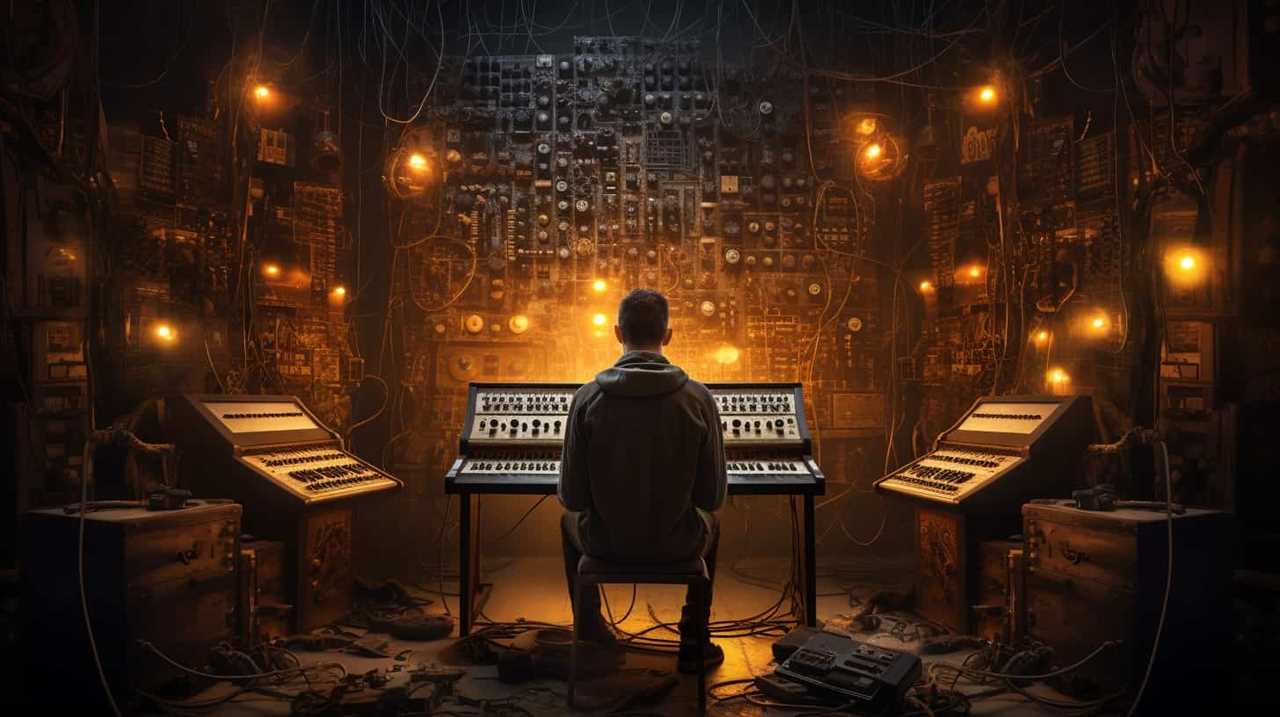
Techniques for Capturing
There are three essential techniques for capturing and experimenting with ambient noise for our dark ambient music.
Firstly, we must invest in high-quality capturing equipment, such as portable recorders and microphones, to ensure the fidelity of our recordings.
Secondly, we can employ various editing techniques, like layering and time stretching, to manipulate the captured sounds and create unique sonic textures.
Lastly, we should explore unconventional methods, such as contact microphones or hydrophones, to capture hidden sounds and add an extra dimension to our compositions.
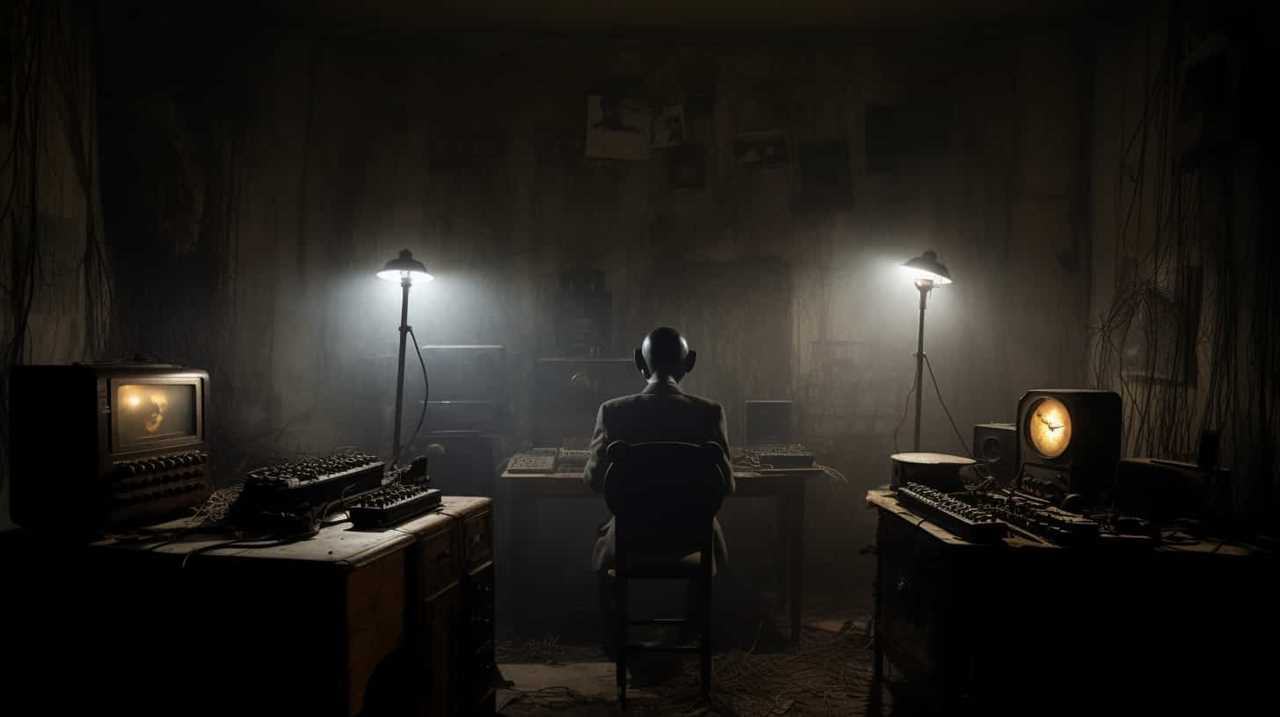
Enhancing Atmospheric Elements
To enhance the atmospheric elements in our dark ambient music, we experiment with ambient noise to create a haunting and immersive sonic experience. Here are five ways we explore eerie environments and manipulate ambient sounds:
- Layering different recordings to build tension and depth
- Applying effects like reverb and distortion to create an otherworldly atmosphere
- Manipulating the pitch and speed of recordings for an unsettling effect
- Incorporating unconventional sources of ambient noise, such as machinery or nature sounds
- Experimenting with spatialization techniques to create a sense of movement and disorientation.
Manipulating Field Recordings to Add Texture and Depth
How can we manipulate field recordings to add texture and depth to our dark ambient music?
By sculpting frequencies and blending textures, we can create a multi-dimensional sonic experience that captivates our audience.
Through careful manipulation of EQ, filters, and effects, we can shape the timbre of the field recordings, enhancing their inherent qualities and integrating them seamlessly into our compositions.
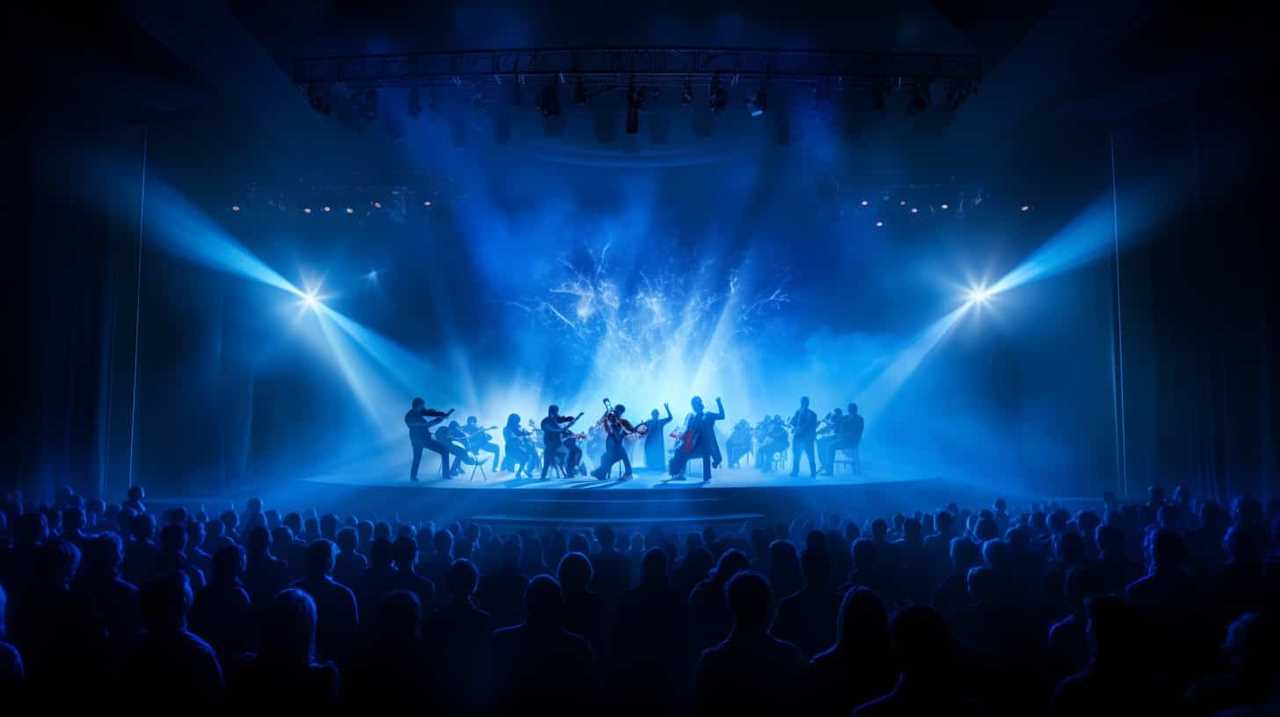
This innovative approach allows us to push the boundaries of dark ambient music, creating immersive and evocative soundscapes.
Layering Field Recordings With Musical Elements for a Unique Blend
When it comes to creating dark ambient music, the layering of field recordings with musical elements is crucial in enhancing the atmospheric depth and creating immersive soundscapes.
By intertwining the organic sounds of the field recordings with the synthesized or acoustic musical elements, a unique blend is achieved that adds richness and complexity to the overall composition.
This technique allows for a seamless fusion of real-world environments and musical textures, resulting in a captivating and evocative sonic experience for the listener.
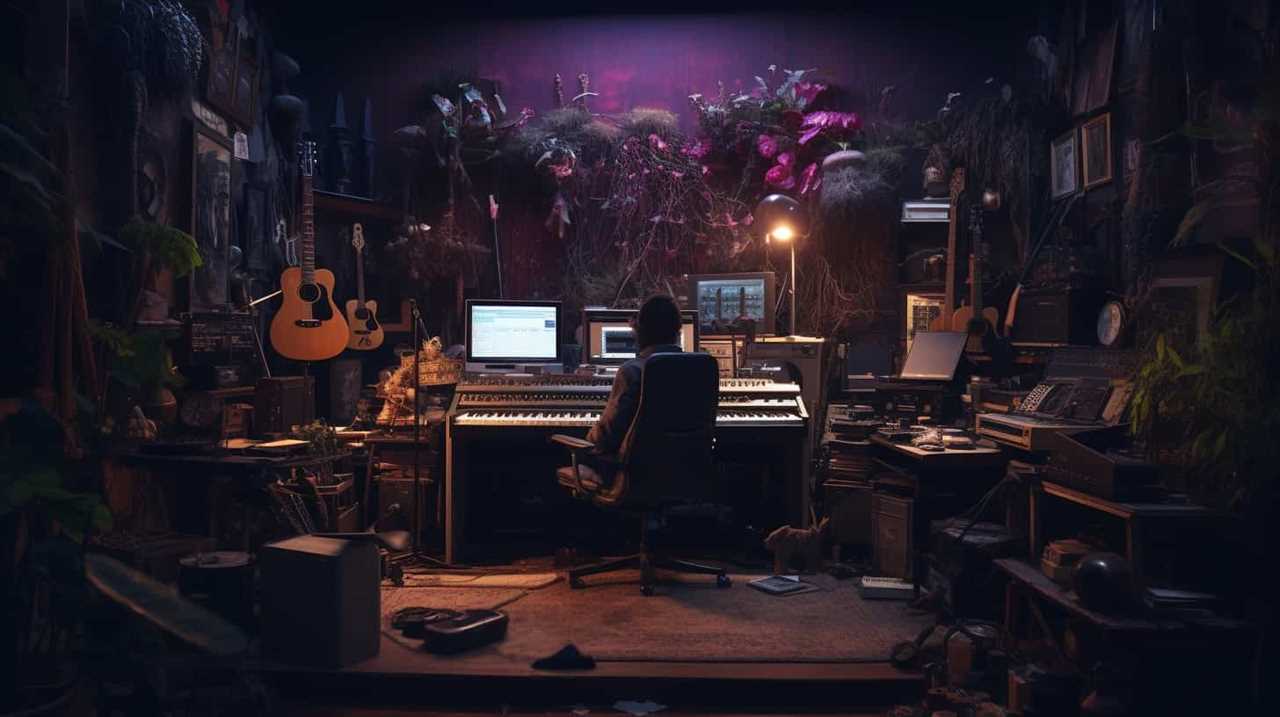
Enhancing Atmospheric Depth
We love to experiment with different combinations of field recordings and musical elements to create a unique blend that enhances the atmospheric depth of our dark ambient music. By exploring unconventional sounds and creating a haunting ambiance, we strive to create an immersive experience for our listeners.
To achieve this, we incorporate the following techniques:
- Layering ethereal vocals with eerie field recordings
- Blending distorted industrial sounds with melancholic melodies
- Intertwining natural sounds with haunting synthesizers
- Mixing rhythmic elements with dissonant textures
- Combining atmospheric drones with subtle percussions
With these techniques, we aim to push the boundaries of traditional dark ambient music and create a truly immersive sonic landscape.
Now let’s dive even deeper into the process of creating immersive soundscapes.
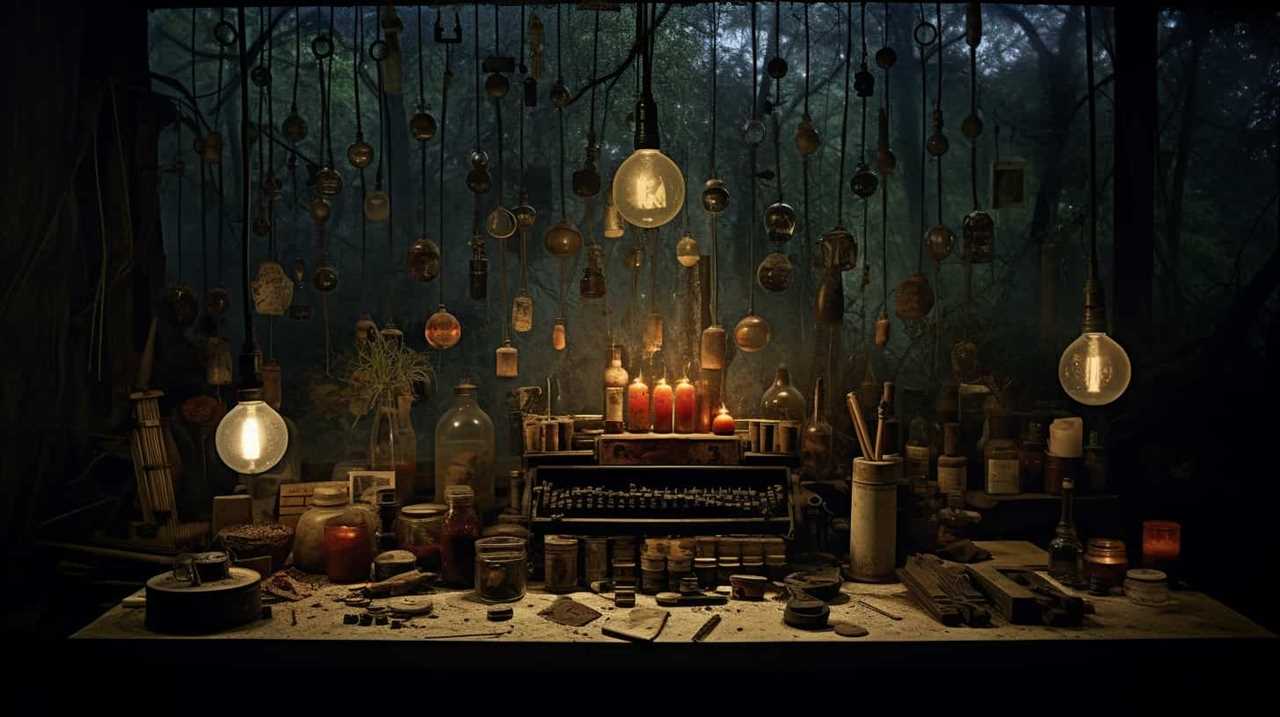
Creating Immersive Soundscapes
To achieve a truly immersive experience in our dark ambient music, we layer field recordings with musical elements, creating a unique blend that transports listeners to otherworldly realms. By combining the raw sounds of nature and everyday life with haunting melodies and atmospheric textures, we are able to craft soundscapes that immerse listeners in a world of their own. This fusion of field recordings and musical elements evokes a wide range of emotions, from tranquility to unease, making for a truly captivating and innovative listening experience.
| Field Recordings | Musical Elements | Result |
|---|---|---|
| Rainfall | Drones | Serene ambiance |
| Street noises | Synth pads | Urban dystopia |
| Wind blowing | Distorted guitars | Eerie melancholy |
| Birdsong | Subtle percussion | Natural mysticism |
Utilizing Pitch-Shifting Techniques to Create Haunting Effects
We can use pitch-shifting techniques to manipulate sound and create haunting effects in our dark ambient music. Here are five ways to do it:
- Experiment with extreme pitch shifts to distort and transform sounds.
- Combine pitch shifting with other effects like delay or modulation for added depth.
- Use pitch shifting to create dissonance and tension in your compositions.
- Explore different pitch-shifting algorithms to achieve unique and otherworldly sounds.
- Layer multiple pitch-shifted sounds to create complex and eerie atmospheres.
By harnessing the power of pitch-shifting, we can push the boundaries of experimental music and immerse listeners in a haunting sonic experience.
Now, let’s delve into the next section and explore how adding reverb effects can enhance the spaciousness of the sound.
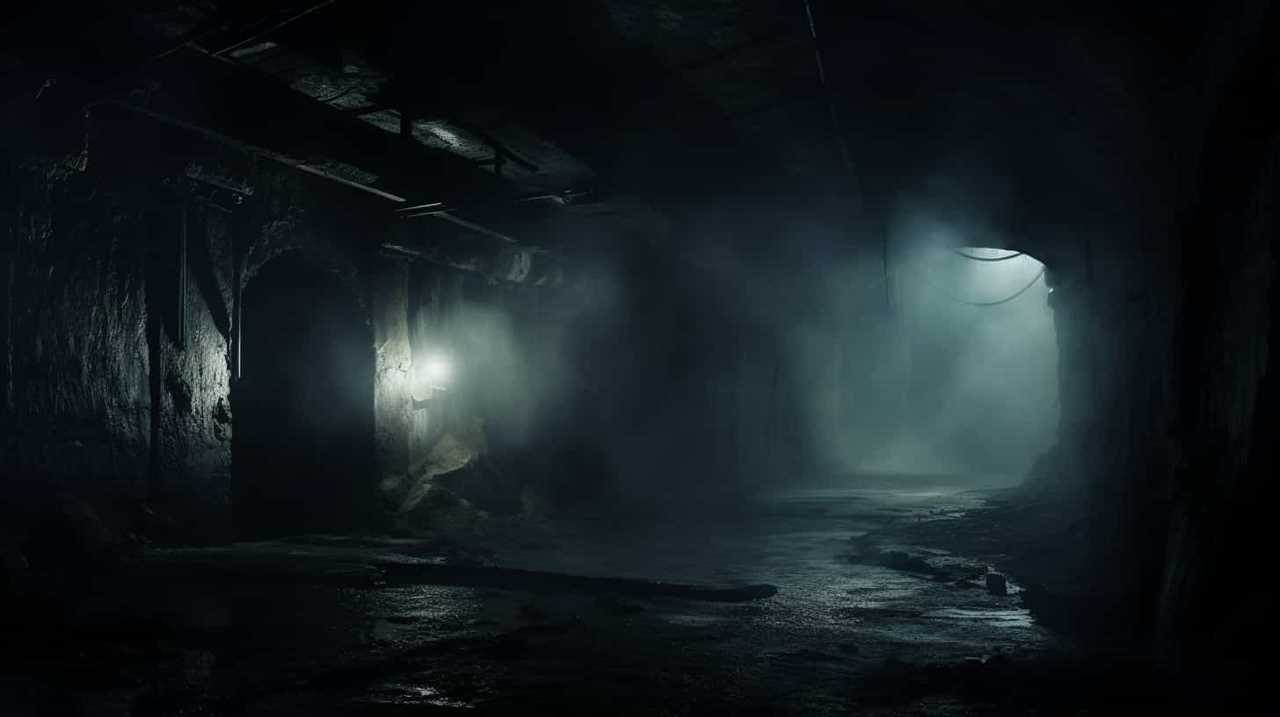
Adding Reverb Effects to Enhance the Spaciousness of the Sound
Our aim is to use reverb effects to enhance the spaciousness of the sound and create haunting atmospheres.
By incorporating field recordings, we can evoke a sense of unease and tension.
Reverb techniques play a crucial role in achieving this.
By applying a generous amount of reverb to the field recordings, we can create a sense of depth and immersion.
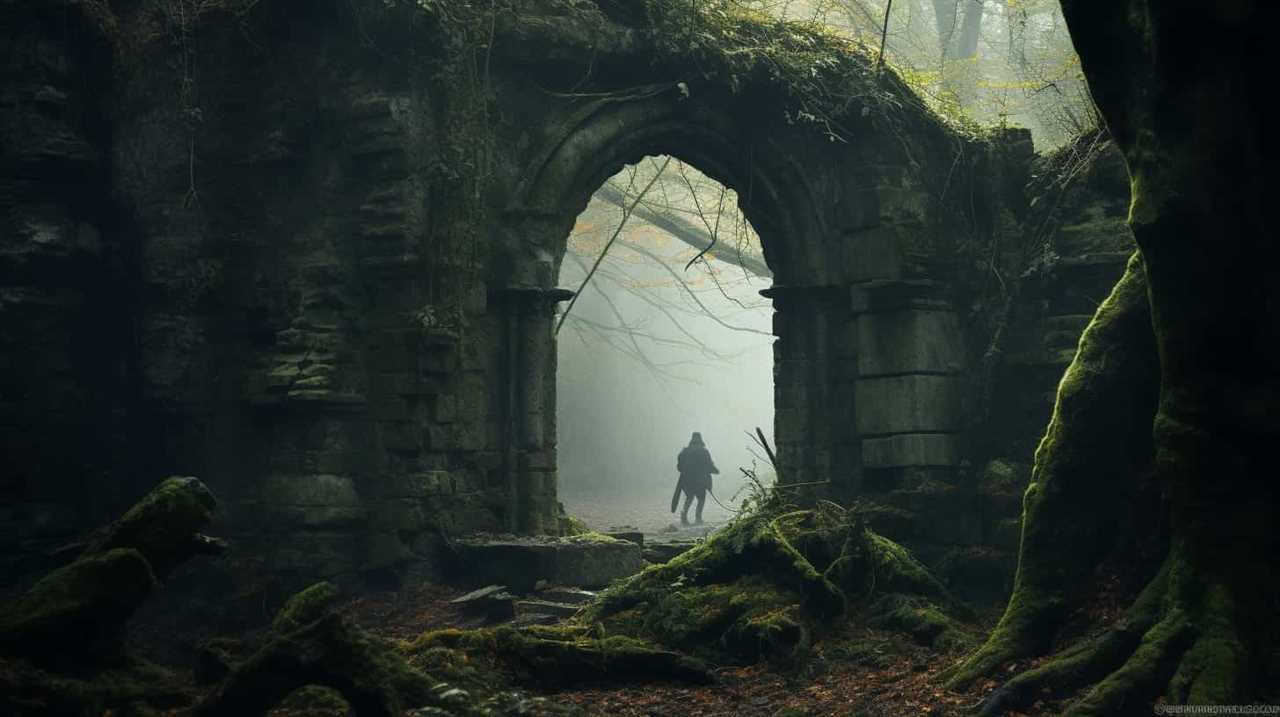
This enhances the overall atmosphere, making the music more captivating and unsettling for the listeners.
Balancing Volume Levels for a Seamless Audio Experience
By adjusting the levels of different elements in the mix, we can ensure a seamless audio experience for the listeners. Balancing volume levels is crucial in creating immersive dark ambient music. Here are some volume balancing techniques for a seamless listening experience:
- Use automation to adjust the volume levels of different elements dynamically.
- Pay attention to the dynamics of field recordings and blend them with synthesized sounds.
- Avoid sudden volume changes that can disrupt the listener’s immersion.
- Use compression and limiting to control the dynamic range and prevent clipping.
- Regularly monitor and adjust the volume levels throughout the mixing process.
Ensuring Cohesiveness in Sound Design for a Unified Atmosphere
To achieve a unified atmosphere, it’s important to carefully select and integrate sound elements, while also applying cohesive sound design techniques.
In dark ambient music, sculpting frequencies is crucial to create a cohesive sonic landscape. By manipulating the different frequency ranges, we can shape the mood and intensity of the music.
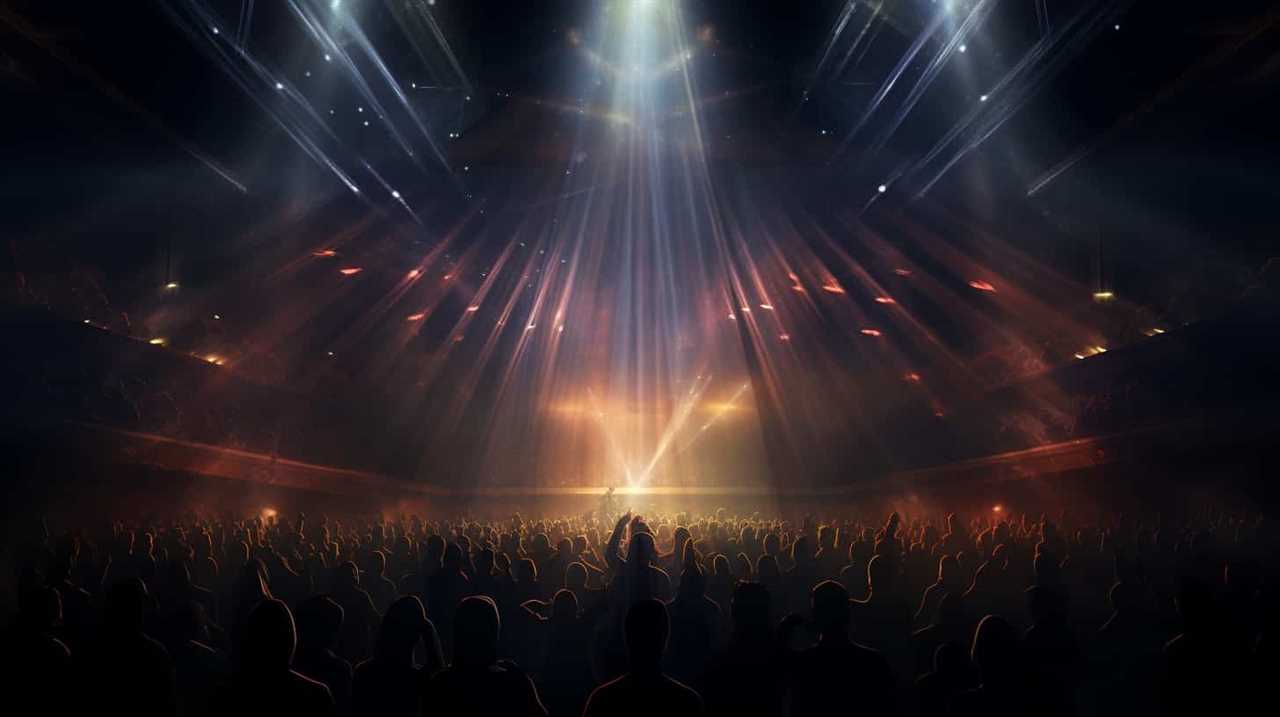
Additionally, incorporating found sounds adds depth and texture to the composition, enhancing the overall atmosphere.
Now, let’s delve into the next step of finalizing the audio mix for a polished and atmospheric result.
Finalizing the Audio Mix for a Polished and Atmospheric Result
As we frequently experiment with different levels and effects, we can achieve a polished and atmospheric result by fine-tuning the audio mix. To help you enjoy this process and create innovative dark ambient music, consider the following techniques:
- Exploring EQ techniques to enhance the desired frequencies and create a balanced mix.
- Utilizing sound libraries to add unique and captivating elements to your composition.
- Experimenting with panning and spatial effects to create depth and immersion.
- Applying subtle reverb and delay to add a sense of space and atmosphere.
- Using automation to create dynamic changes and enhance the overall mood of the track.
Frequently Asked Questions
What Are Some Examples of Intriguing Locations for Field Recordings?
When it comes to intriguing locations for field recordings, there are a few that immediately come to mind. Underwater caves, with their eerie and mysterious ambiance, offer a unique opportunity to capture the sounds of the deep.

Abandoned factories, on the other hand, provide a haunting backdrop of industrial decay. These locations not only add depth and texture to dark ambient music, but also evoke a sense of exploration and discovery.
Incorporating field recordings from these settings can truly push the boundaries of sonic innovation.
How Can I Capture the Atmosphere of a Location Through Organic Sounds?
To capture the atmosphere of a location through organic sounds, we focus on capturing emotions and enhancing storytelling. By carefully selecting and recording the natural sounds of a location, we can transport listeners to that specific place and evoke the desired emotions.
The sounds should be authentic and true to the location, allowing the listener to feel fully immersed. This approach adds a unique and innovative dimension to dark ambient music, creating a powerful and captivating listening experience.
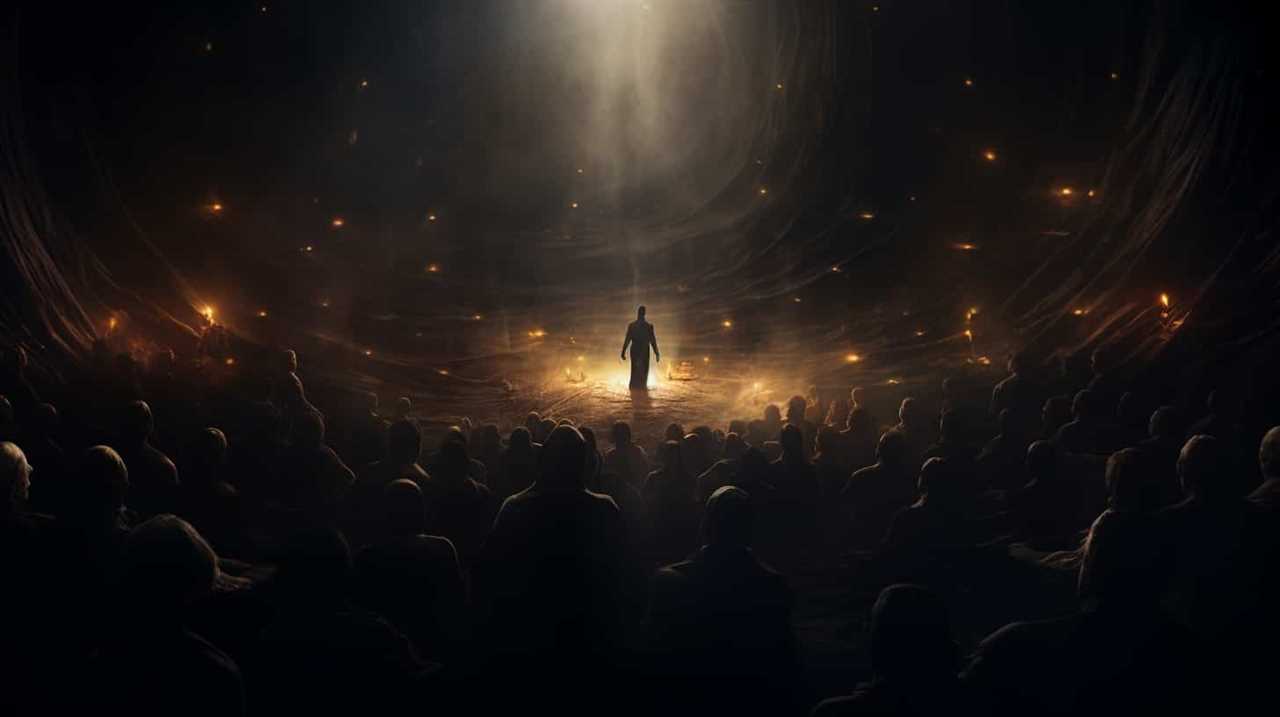
What Are Some Techniques for Manipulating Field Recordings to Add Texture and Depth?
When it comes to manipulating field recordings to add texture and depth, there are several creative techniques we can explore.
One method is time-stretching, which allows us to stretch or compress the duration of a recording, altering its tone and mood.
We can also experiment with pitch-shifting, transforming the pitch of the sounds to create a sense of otherworldliness.
Additionally, layering multiple recordings can enhance the ambiance and create a richer sonic landscape.

These techniques offer endless possibilities for creating innovative and immersive field recordings.
How Can I Effectively Balance Volume Levels for a Seamless Audio Experience?
When it comes to balancing volume levels for a seamless audio experience, we’ve found a few tips that can help.
Firstly, consider the dynamic range of your field recordings and adjust accordingly.
Secondly, use automation to smooth out any sudden volume changes.
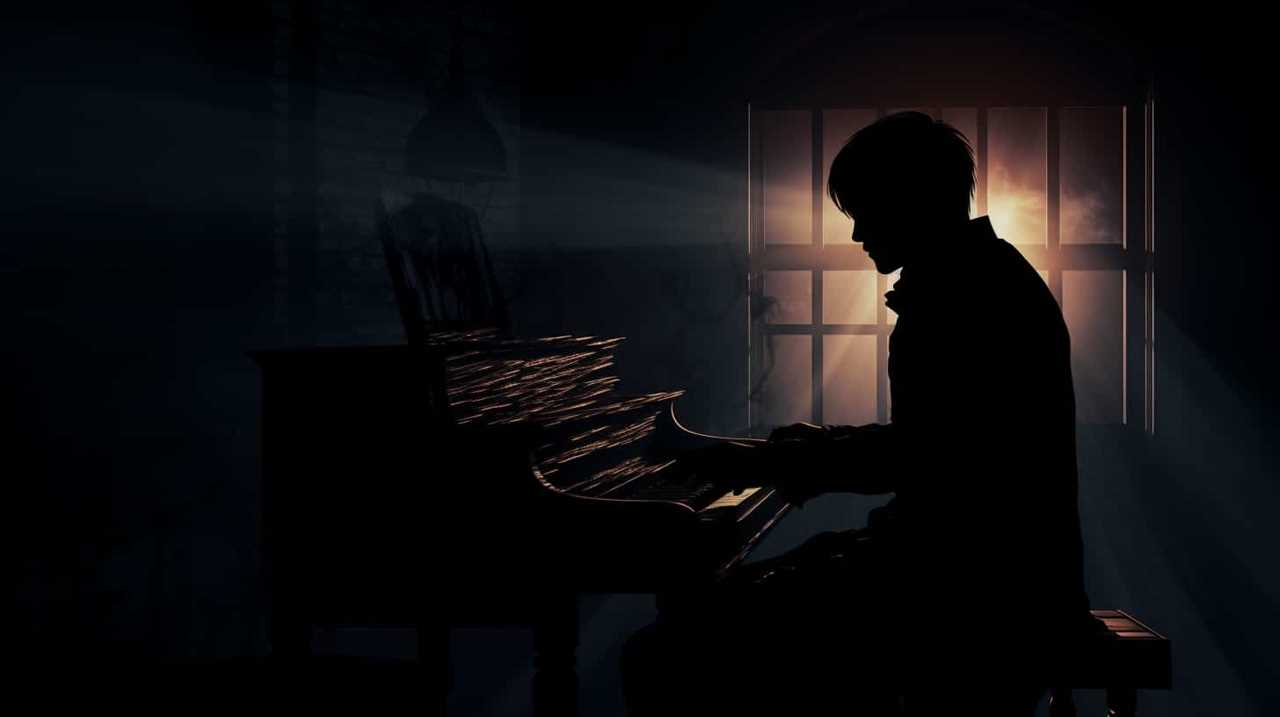
Lastly, experiment with panning and spatial effects to create a sense of depth in your sonic narrative.
What Are Some Tips for Finalizing the Audio Mix to Achieve a Polished and Atmospheric Result?
When finalizing the audio mix to achieve a polished and atmospheric result, there are techniques we can use to enhance the atmosphere. One way is by adding reverb and delay to field recordings, which can create a sense of depth and immersion.
It’s important to incorporate these field recordings into a dark ambient music track without overpowering the other elements. This can be done by carefully balancing the volume levels and using EQ to blend the different elements together seamlessly.
Conclusion
Incorporating field recordings into dark ambient music is like diving deeper into the abyss, immersing oneself in a rich and atmospheric world. By scouting intriguing locations, capturing organic sounds, and manipulating field recordings, artists can create a unique blend of ambient noise and musical elements.
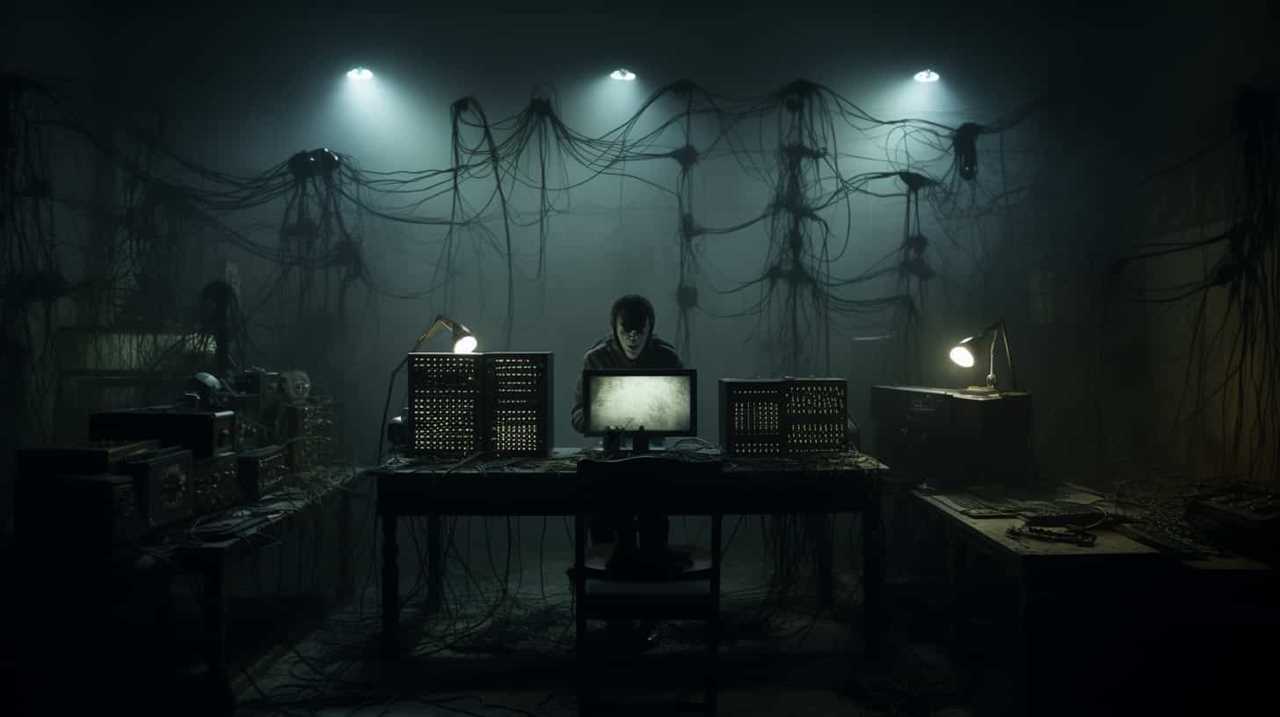
Adding reverb effects and balancing volume levels enhances the spaciousness and cohesion of the sound. The final result is a polished and atmospheric audio mix that captivates listeners and transports them to another realm.
Ambient
Mastering the Art of Dark Ambient Sound Creation

We’ve found that the production of dark ambient sounds is becoming increasingly popular in the music scene, experiencing a remarkable surge in interest of 30% over the last year.
In this article, we will guide you through the process of mastering this innovative art form. From brainstorming music ideas to manipulating synth patches, we will provide you with the technical knowledge and precise techniques needed to create captivating dark ambient soundscapes.
Get ready to push the boundaries of musical innovation and enhance your atmospheric depth like never before.
Key Takeaways
- Experiment with sonic textures and ambient layers to create captivating soundscapes
- Consider unique timbres and atmospheric qualities of instruments when choosing instruments for dark ambient music
- Choose the right music scale to influence the mood and atmosphere of the dark ambient music
- Utilize field recordings and unconventional instruments to enhance the eerie atmosphere of the dark ambient soundscapes
Brainstorming Music Ideas
We’ll start our brainstorming session by exploring different ways to create captivating soundscapes.
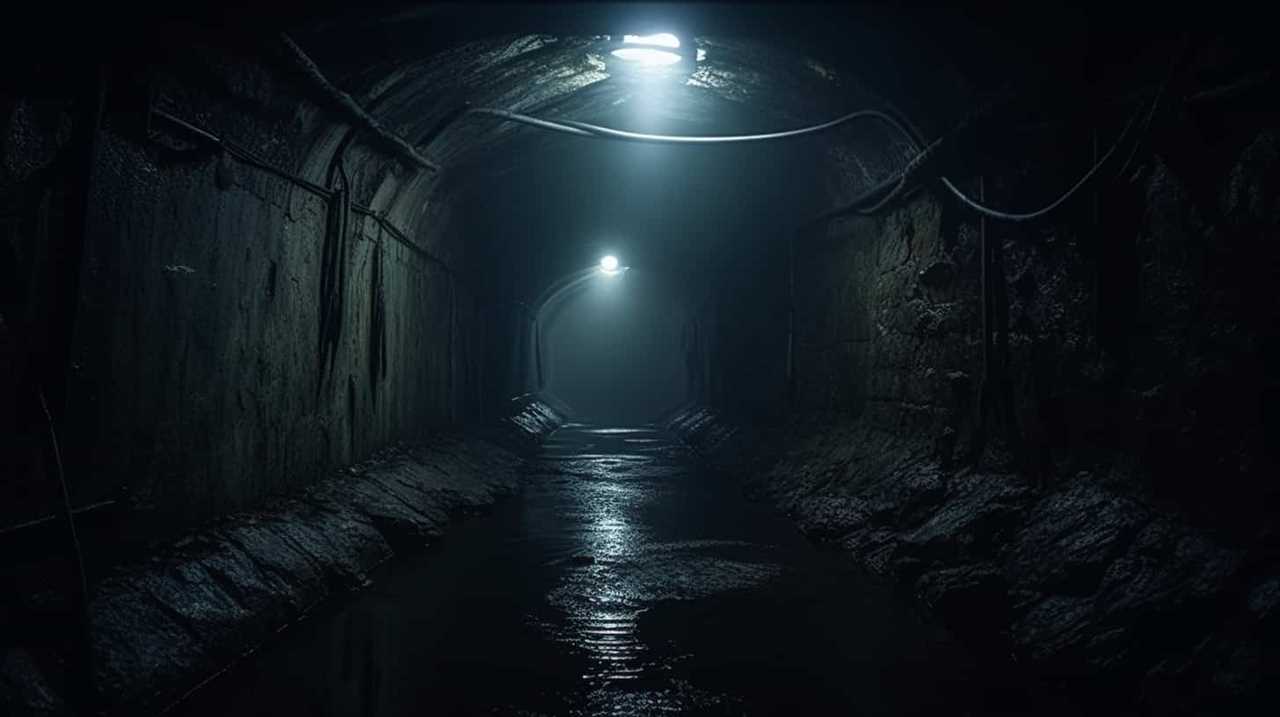
When it comes to dark ambient sound creation, exploring sonic textures and experimenting with ambient layers are essential.
To create an innovative and immersive experience, we can manipulate various elements such as frequency, timbre, and spatialization.
Choosing Musical Instruments
When selecting musical instruments for dark ambient sound creation, we should consider the unique timbres and atmospheric qualities they can contribute to our compositions. Exploring unconventional instruments allows for experimentation with effects, resulting in innovative and immersive soundscapes. To aid in this process, the following table showcases a range of instruments commonly used in dark ambient music, along with their distinctive characteristics and potential for creating atmospheric textures.
| Instrument | Timbre | Atmospheric Qualities |
|---|---|---|
| Synthesizer | Deep, ethereal | Creates otherworldly and haunting tones |
| Electric Guitar | Distorted, resonant | Adds layers of darkness and tension |
| Field Recordings | Natural, eerie | Captures real-world sounds to evoke specific moods |
| Tibetan Singing Bowl | Resonant, meditative | Produces calming and mysterious vibrations |
Deciding on the Music Scale
When creating dark ambient music, one of the key decisions we must make is choosing the right music scale. The scale we select will greatly influence the overall mood and atmosphere of our composition.
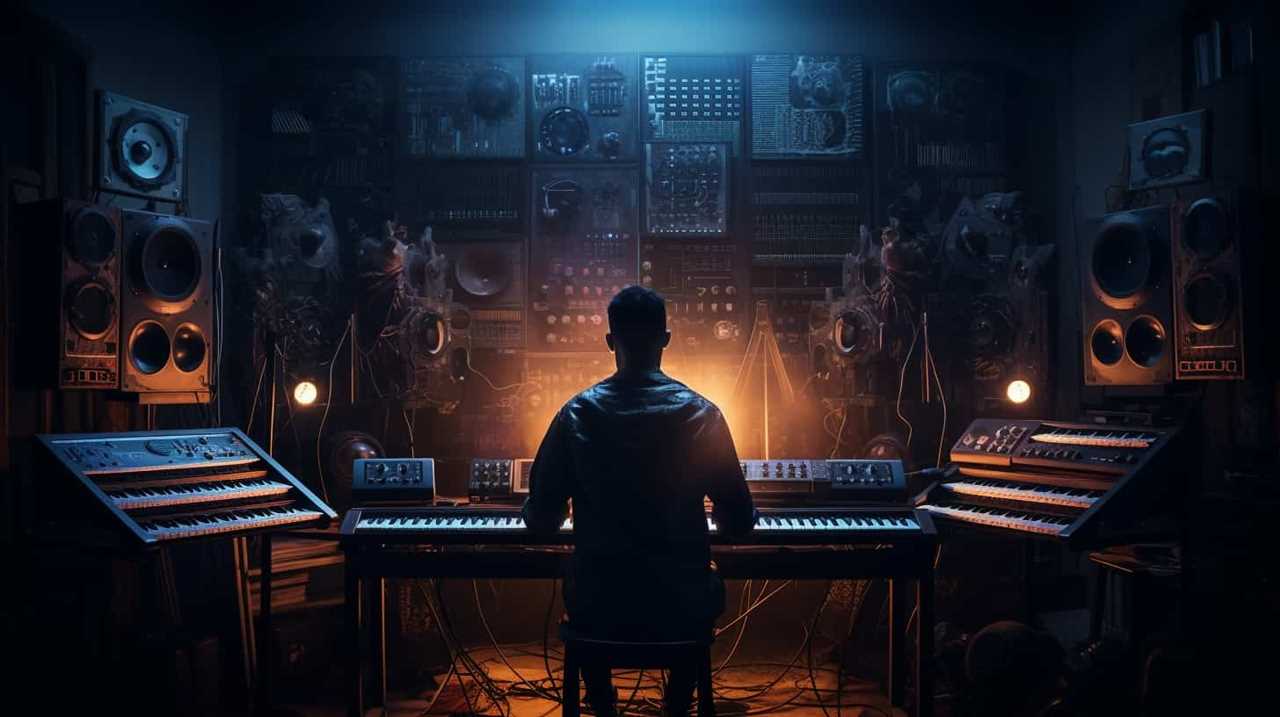
Choosing the Right Scale
The key to creating a dark ambient sound lies in choosing the right scale for our music. Here are four ways to achieve this:
-
Experimenting with dissonant harmonies: By using intervals that create tension and unease, we can evoke a sense of darkness in our compositions.
-
Incorporating unconventional scales: Stepping away from traditional major and minor scales allows for unique and eerie tonalities that enhance the dark ambiance.
-
Exploring modes and exotic scales: Modes like Phrygian or scales like the Hungarian minor can add an exotic and mysterious flair to our compositions.
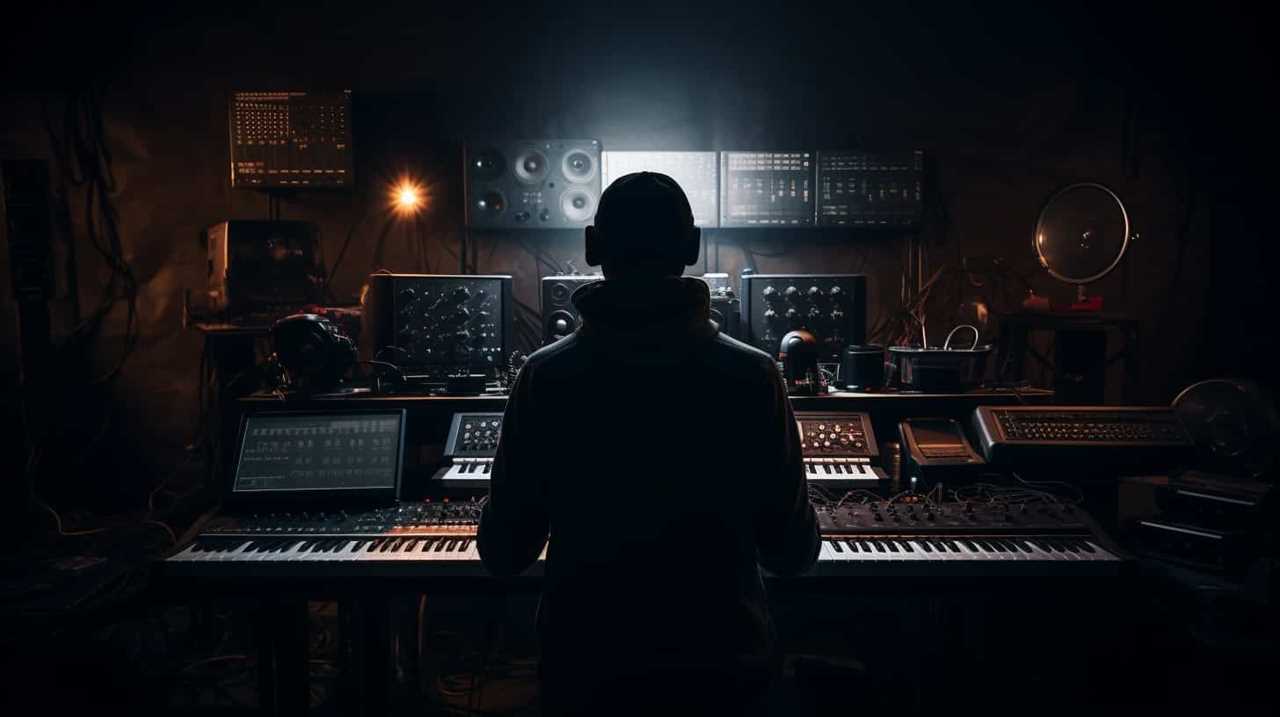
-
Combining scales and modes: By blending different scales or modes, we can create complex and unsettling musical landscapes that capture the essence of dark ambient sound.
Creating Eerie Atmospheres
To create eerie atmospheres in our dark ambient sound, we must carefully decide on the music scale.
Utilizing field recordings allows us to capture and incorporate natural sounds that evoke a sense of unease and mystery. These recordings can include rustling leaves, distant whispers, or echoing footsteps.
Additionally, incorporating unconventional instruments such as theremin or glass harmonica adds a haunting and otherworldly quality to the music, further enhancing the eerie atmosphere.
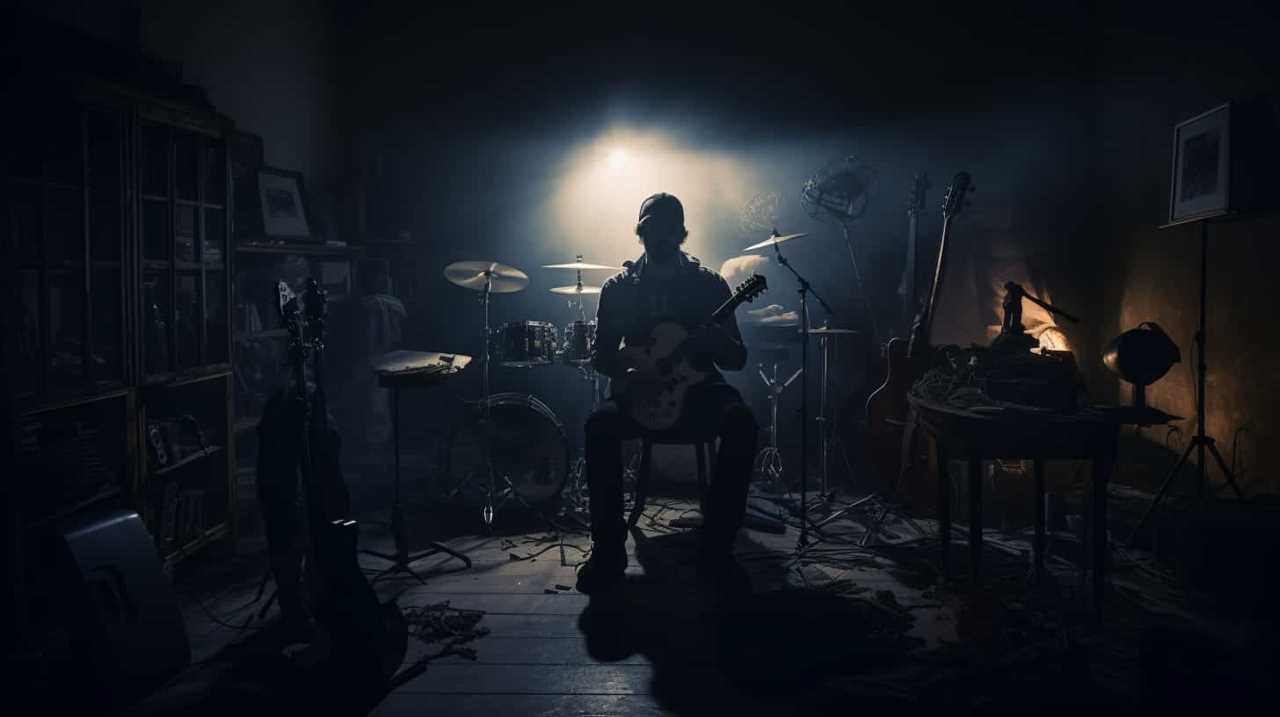
Enhancing Dark Moods
As dark ambient sound creators, we can enhance dark moods by experimenting with different music scales and by combining them with various sound effects and textures. Here are four ways to achieve this:
-
Exploring psychological effects: Incorporate scales that evoke feelings of unease, such as the Phrygian or Locrian scales, to tap into the listener’s subconscious fears.
-
Utilizing dissonant chords: Dissonance creates tension and adds an unsettling quality to the music. Experiment with clusters of dissonant chords to intensify the dark atmosphere.
-
Using minor scales: Minor scales are often associated with sadness and darkness. Utilize different types of minor scales, such as natural, harmonic, or melodic, to create an eerie and haunting mood.
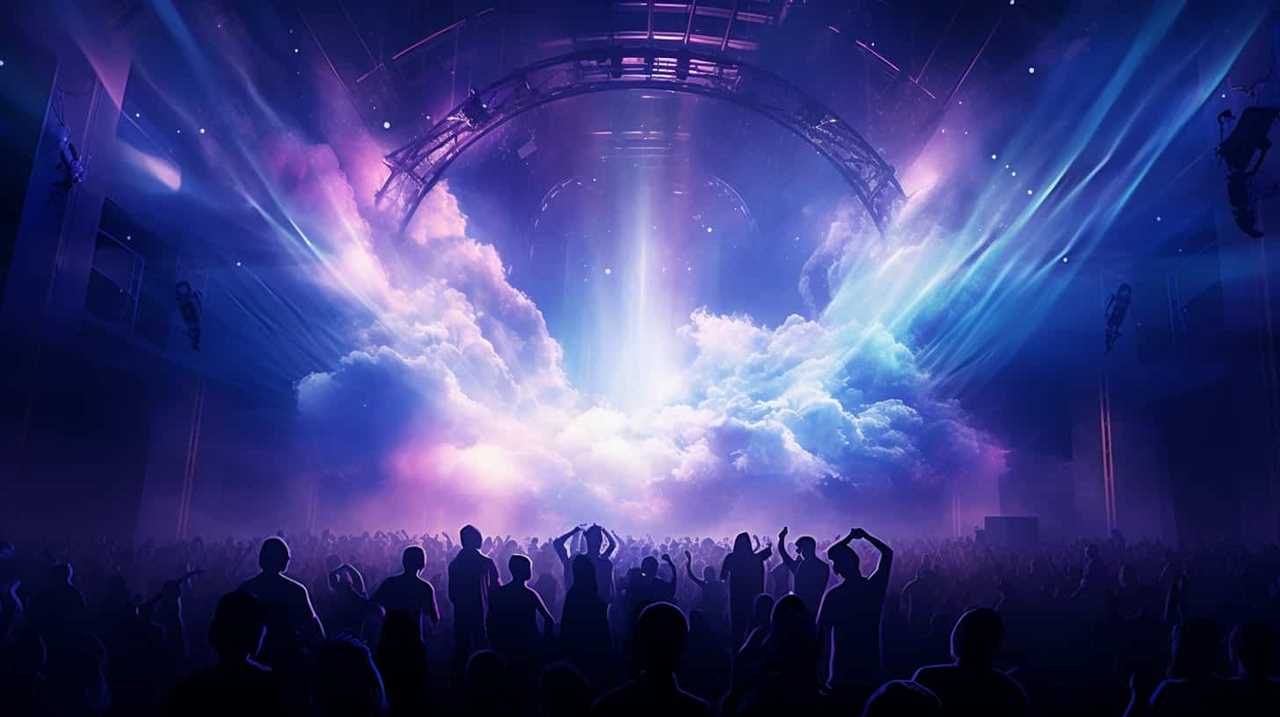
-
Experimenting with microtonal scales: Microtonal scales allow for the exploration of intervals smaller than traditional Western scales. This can result in unique and unsettling sounds that enhance the dark ambience.
Creating a Sound Palette
We can begin by exploring various sounds that can be incorporated into our dark ambient sound palette. Dark ambient music relies heavily on creating a unique sonic texture that evokes a sense of darkness and unease.
Experimenting with field recordings can provide a rich source of raw material, capturing sounds from nature, urban environments, or even industrial settings. These recordings can be manipulated and transformed to create eerie atmospheres and haunting soundscapes, adding depth and complexity to our compositions.
Manipulating Synth Patches
Let’s now turn our attention to the subtopic of manipulating synth patches in the context of dark ambient sound creation.
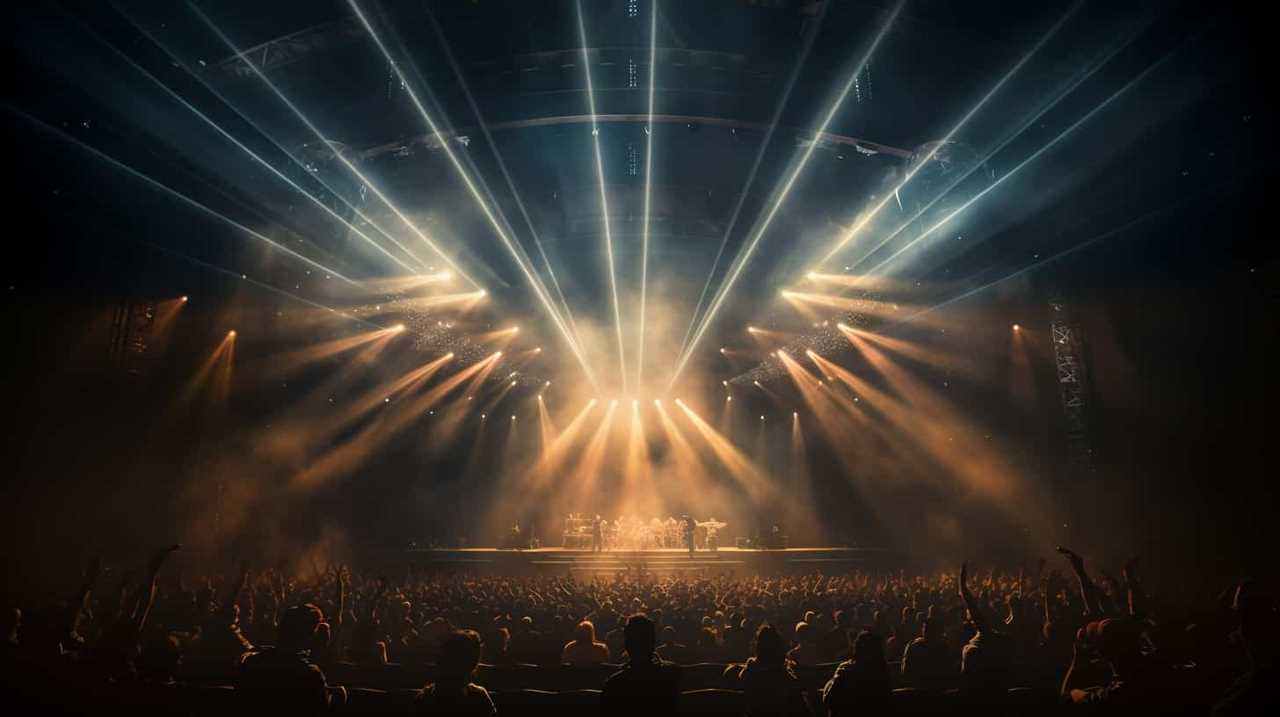
This involves creating eerie soundscapes by tweaking and modifying the various parameters of synthesizer patches.
Creating Eerie Soundscapes
To create eerie soundscapes, we can manipulate synth patches using various techniques. Here are four ways to achieve haunting and atmospheric sounds:
-
Experimenting with effects: By applying reverb, delay, or distortion effects to synth patches, we can create otherworldly textures and add depth to our soundscapes.
-
Layering techniques: Combining multiple synth patches with different timbres and textures allows us to create complex and evolving sonic landscapes that evoke a sense of unease.
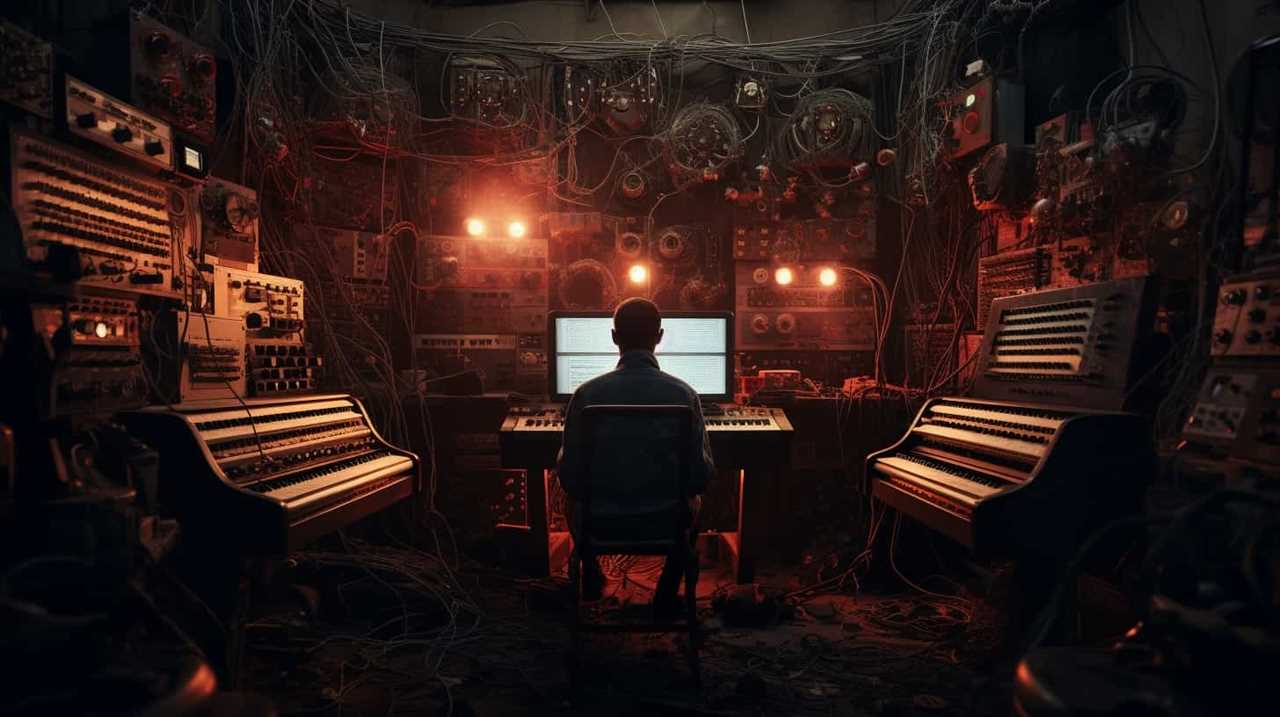
-
Modulation and automation: By modulating parameters such as pitch, filter cutoff, or amplitude, we can introduce subtle or drastic changes over time, adding tension and unpredictability to our soundscapes.
-
Manipulating envelopes: Adjusting the attack, decay, sustain, and release parameters of synth patches can shape the sound and create eerie and unsettling sonic textures.
Modulating Atmospheric Textures
By regularly experimenting with different modulation techniques, we can effectively manipulate synth patches to create dynamic and evolving atmospheric textures in our dark ambient soundscapes.
Exploring tonal variations allows us to add depth and complexity to our compositions, while utilizing sound effects enhances the atmospheric quality of our sounds.
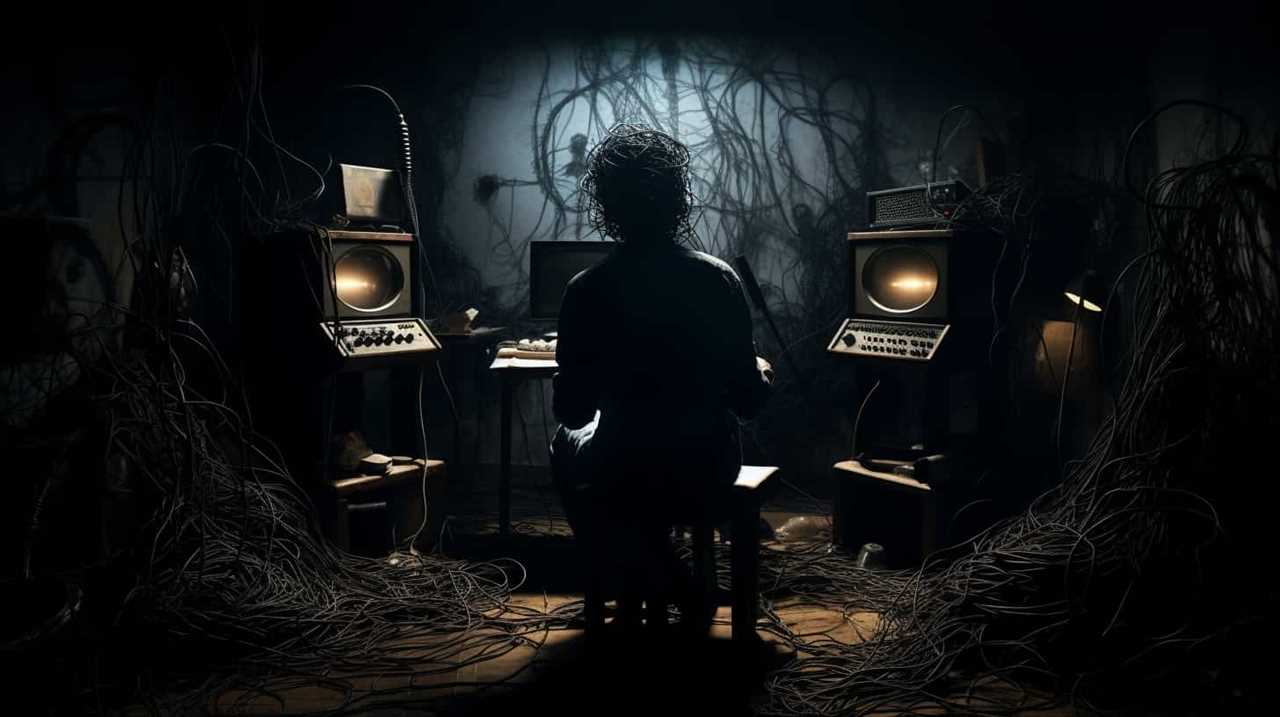
These techniques enable us to craft immersive and captivating sonic experiences that push the boundaries of traditional music production.
Now, let’s dive into the next section and explore the art of designing ambient sounds.
Designing Ambient Sounds
We often experiment with different techniques to create unique and immersive ambient sounds. When designing ambient sounds, we focus on creating captivating soundscapes that transport listeners to different worlds.
Here are four key steps to help you master the art of designing ambient sounds:
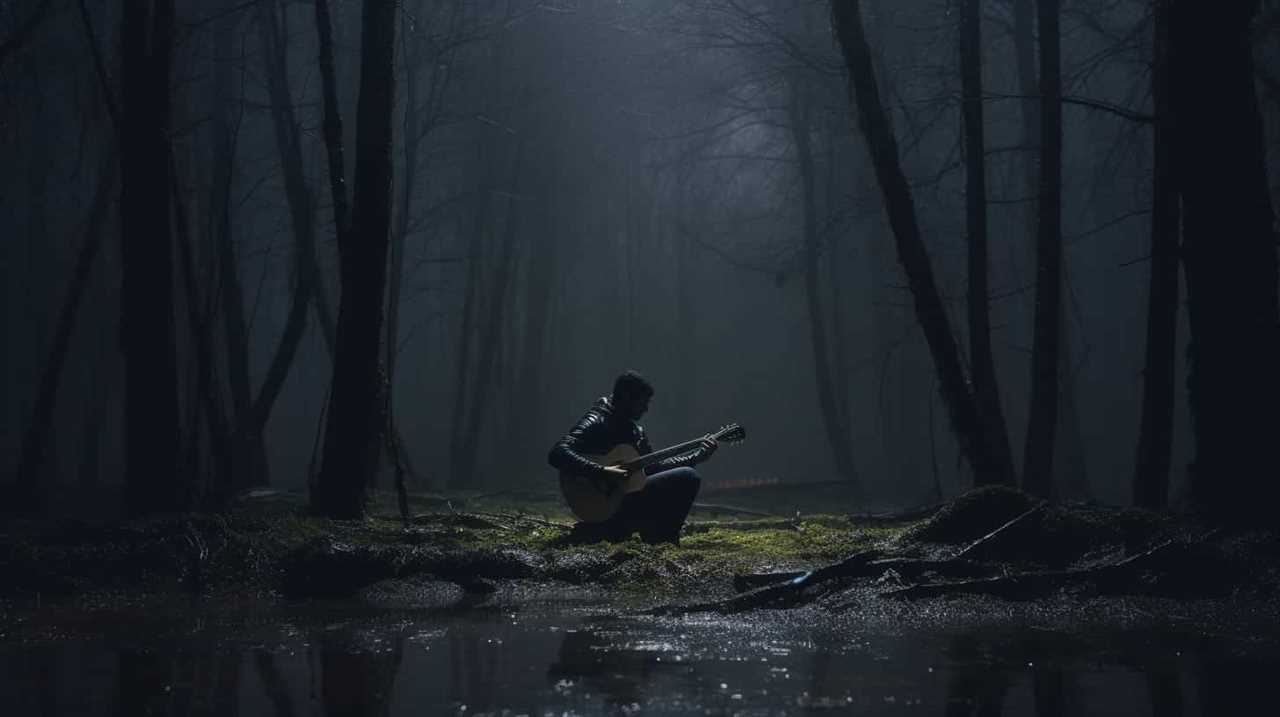
-
Brainstorming soundscapes: Start by envisioning the atmosphere and mood you want to create. Let your imagination run wild and explore various scenarios and environments.
-
Experimenting with effects: Try out different audio effects such as reverb, delay, and modulation to add depth and texture to your sounds. Play around with settings to find the perfect balance.
-
Layering sounds: Combine multiple sound elements to create complex and rich textures. Use different instruments, samples, and field recordings to build up your sonic landscape.
-
Fine-tuning and editing: Pay attention to detail and refine your sounds. Use EQ, compression, and other processing techniques to shape and polish your ambient sounds.
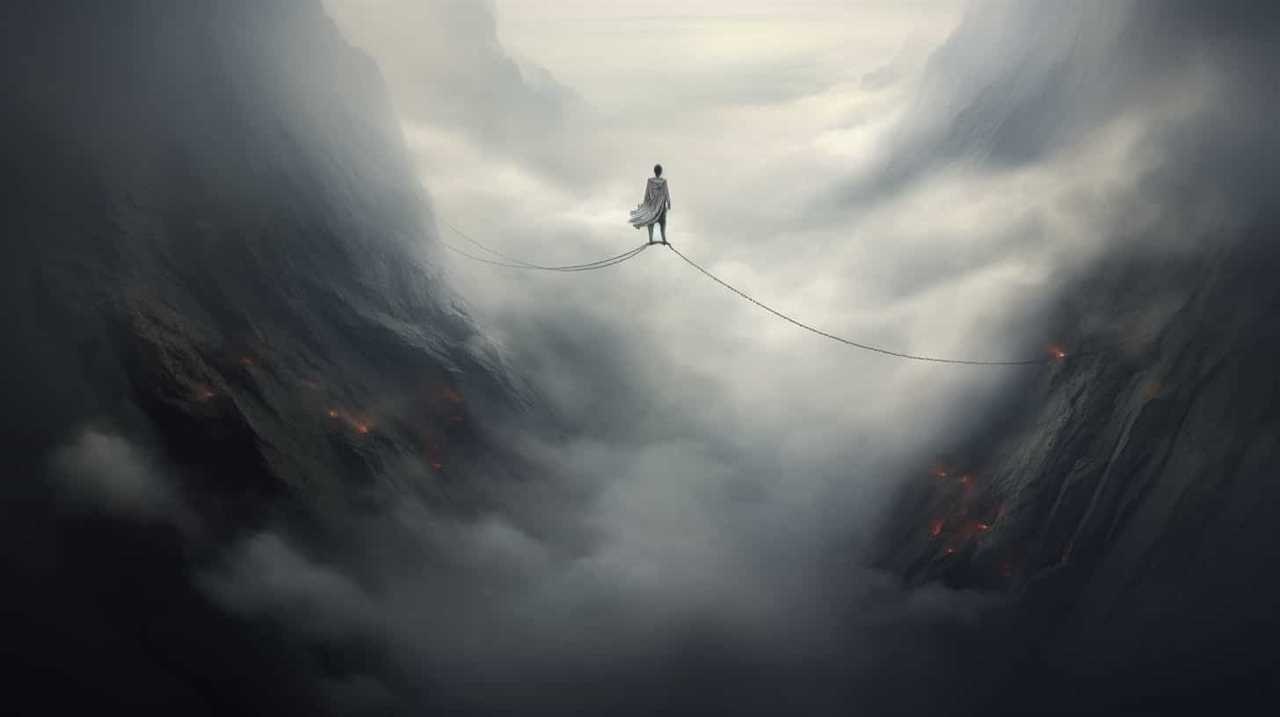
Adjusting the Pitch
When it comes to adjusting the pitch in dark ambient sound creation, there are various pitch modulation techniques that can be employed.
These techniques allow us to manipulate the pitch of different elements within the sound to create eerie and haunting atmospheres.
Pitch Modulation Techniques
To enhance the eerie atmosphere of dark ambient music, we can experiment with various pitch modulation techniques, such as using pitch-shifting effects or manipulating the pitch envelope. Here are four innovative ways to create haunting melodies through pitch modulation:
-
Pitch Bending Techniques: By smoothly bending the pitch of a sound up or down, we can create unsettling and otherworldly effects that add depth to the composition.
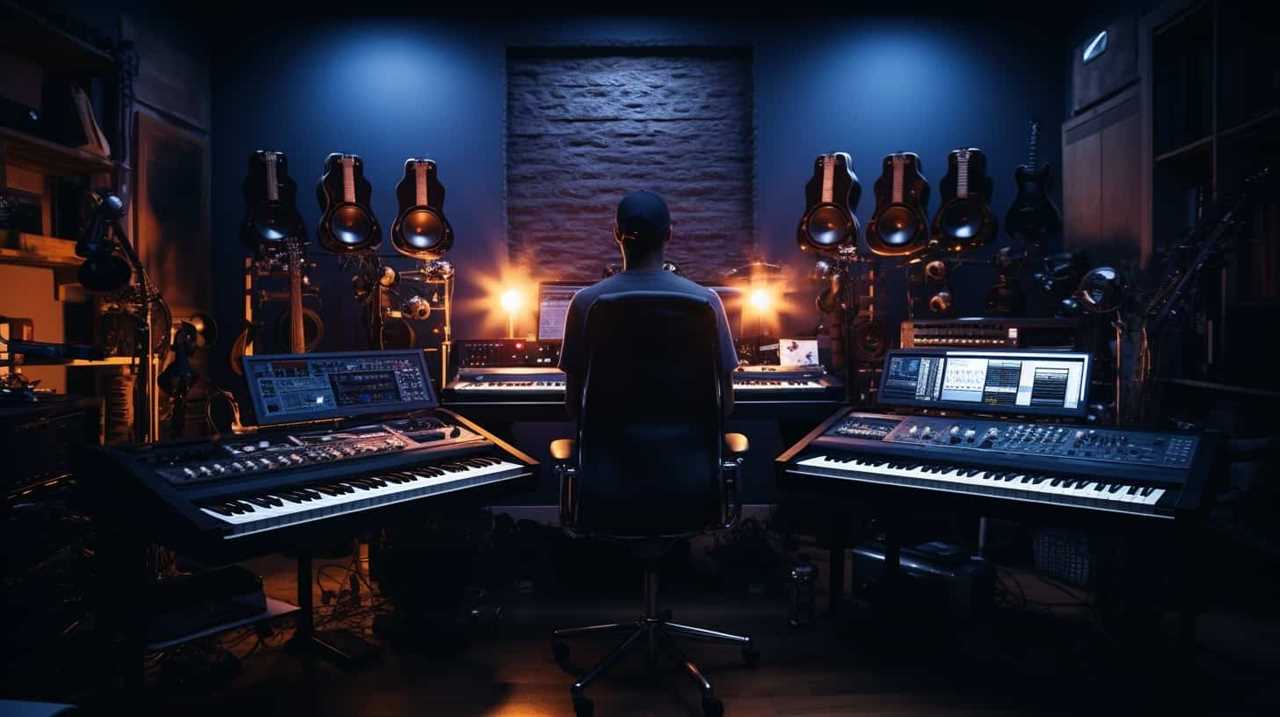
-
Glissando: This technique involves sliding from one note to another, creating a disorienting and ghostly sound.
-
Vibrato: By modulating the pitch rapidly, we can achieve a trembling effect that adds tension and unease to the music.
-
Pitch Modulation with LFO: Using a Low-Frequency Oscillator (LFO), we can automate the pitch modulation, generating pulsating and hypnotic melodies that evoke a sense of mystery and darkness.
Creating Eerie Atmospheres
One of the key techniques we can use to create eerie atmospheres in dark ambient music is adjusting the pitch to evoke a sense of unease and otherworldliness. By manipulating the frequency of sounds, we can explore sonic textures that push the boundaries of traditional music. Additionally, utilizing field recordings adds an organic and unsettling element to the composition. The table below showcases different pitch adjustments and their emotional impact on the audience:
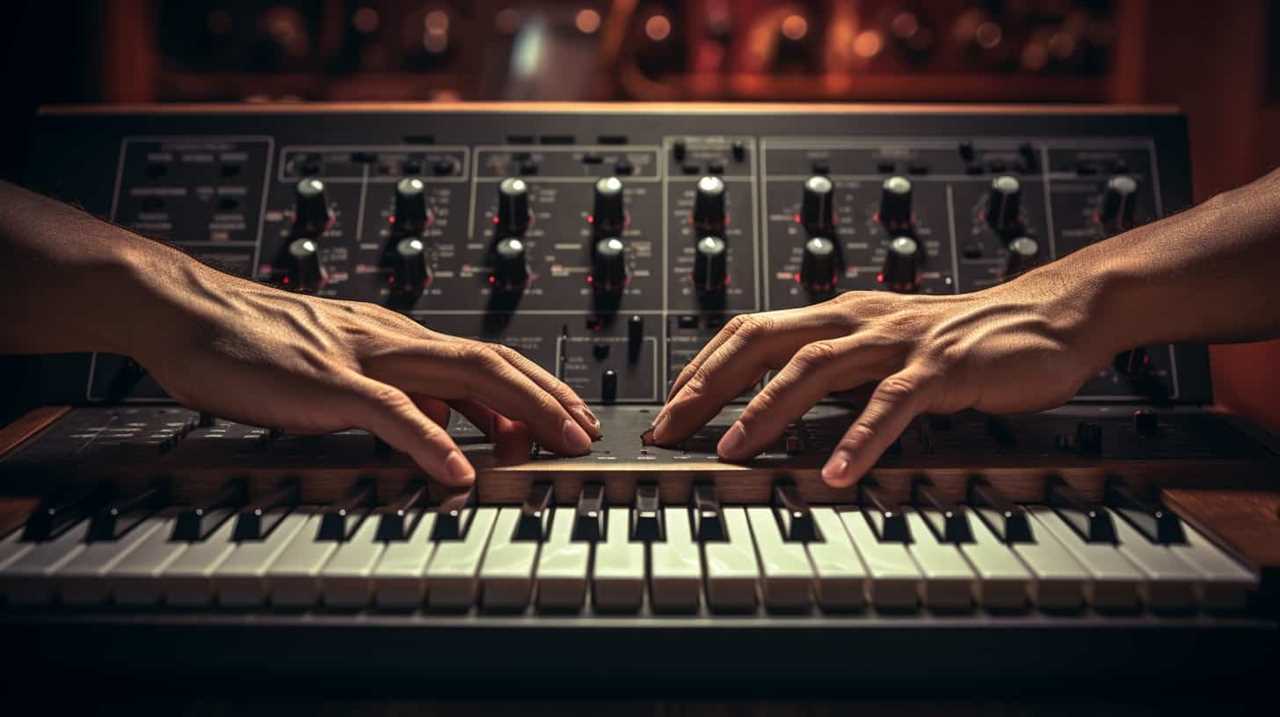
| Pitch Adjustment | Emotional Impact |
|---|---|
| High Pitch | Anxiety |
| Low Pitch | Dread |
| Gliding Pitch | Uncertainty |
| Dissonant Chords | Unease |
| Harmonic Chords | Mystery |
Experimenting with these pitch adjustments allows us to create eerie atmospheres that immerse the listener in a world beyond their imagination.
Working on Reverberations
As we delve into the process of creating dark ambient soundscapes, one crucial aspect we must focus on is experimenting with different reverberation techniques. Here are four innovative methods to enhance the atmospheric depth of your compositions:
-
Convolution Reverb: By capturing the sound of real spaces and applying them to your recordings, convolution reverb creates an authentic sense of environment.
-
Algorithmic Reverb: This versatile technique generates artificial reverberations using complex algorithms, allowing for precise control over decay time and diffusion.
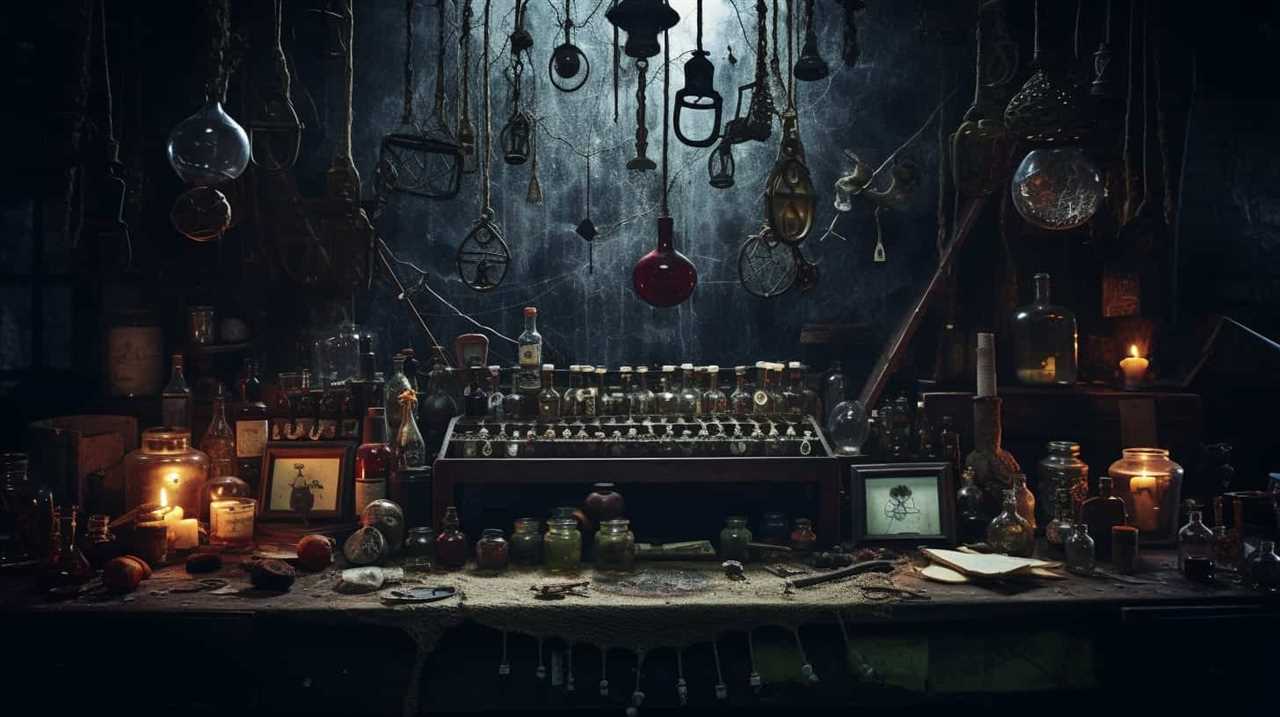
-
Spatial Effects: Experiment with panning, stereo imaging, and surround sound to create a three-dimensional sonic environment that immerses the listener.
-
Modulated Reverb: Add movement and texture to your ambient soundscapes by modulating the reverb parameters, such as modulation rate and depth, for an evolving and dynamic effect.
Balancing Sounds
We can achieve a cohesive and immersive dark ambient sound by carefully balancing the various elements within our compositions.
Balancing sounds involves brainstorming soundscapes that complement each other and experimenting with effects to create a unique sonic experience.
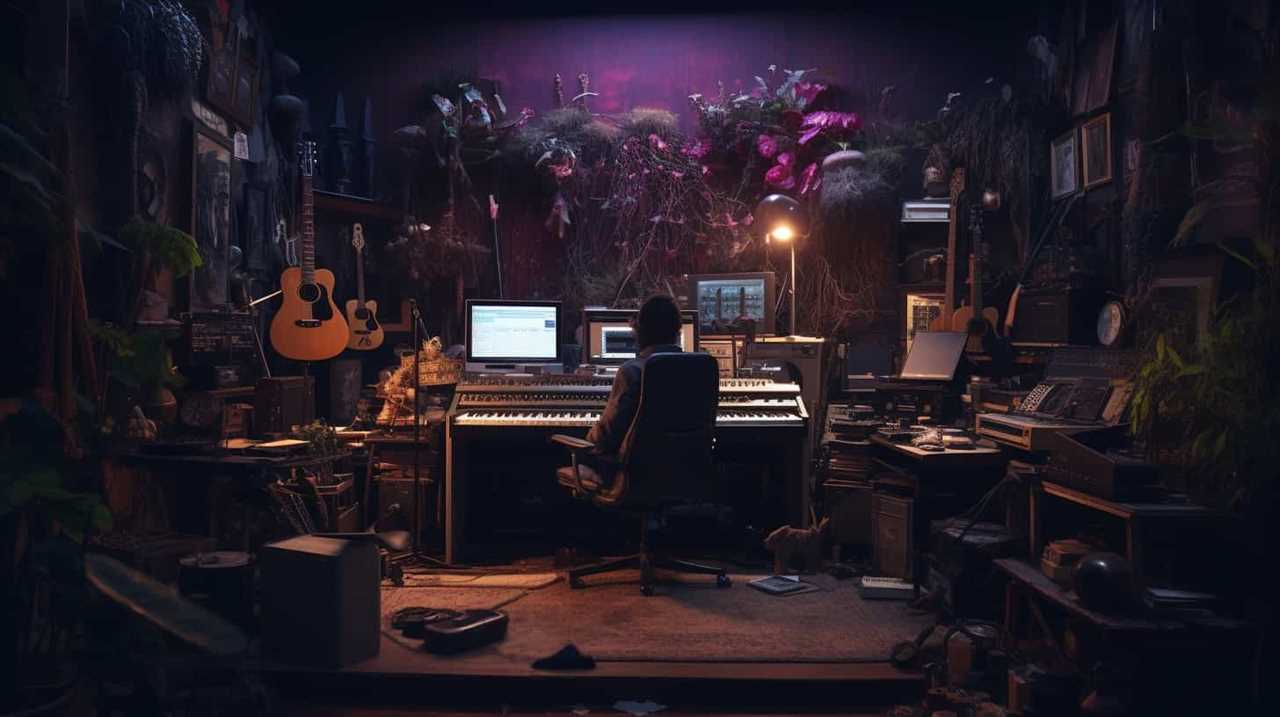
By adjusting the levels of different elements such as drones, field recordings, and atmospheric textures, we can create a harmonious blend that captures the listener’s attention.
This process requires careful attention to detail and a willingness to explore new techniques and ideas.
Mixing Techniques
To achieve a professional and polished dark ambient sound, we need to pay attention to the intricate details of our mixing techniques, ensuring that every element is precisely placed and balanced. Here are some essential mixing techniques to consider:
-
Brainstorming melodies: Experiment with different melodic ideas to find the perfect fit for your dark ambient composition. Use haunting and dissonant tones to create an eerie atmosphere.
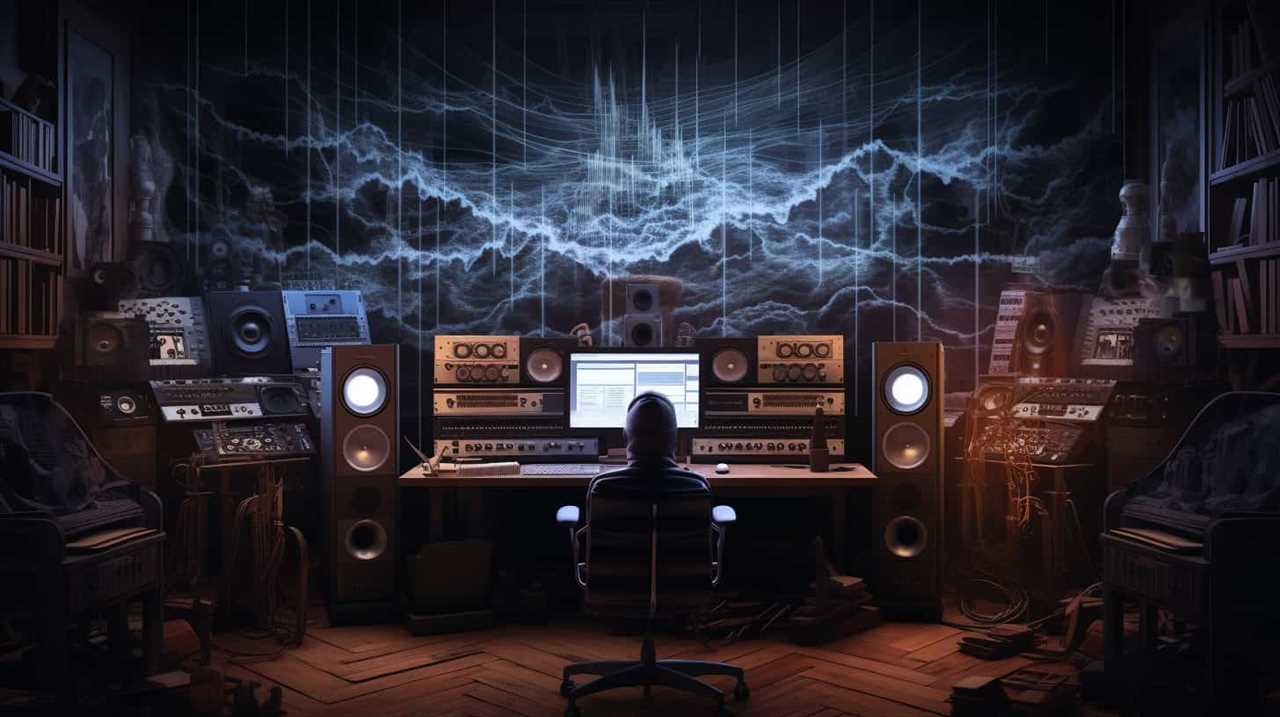
-
Layering techniques: Layer various sounds and textures to add depth and complexity to your track. Combine drones, field recordings, and synthesizers to create a rich sonic landscape.
-
Panning and spatial effects: Utilize panning and spatial effects to create a sense of movement and immersion. Place sounds at different points in the stereo field to enhance the spatial dimension of your mix.
-
Dynamic processing: Apply dynamic processing techniques such as compression and automation to control the dynamics of your mix. Ensure that each element is balanced and sits well within the overall sonic landscape.
Mastering Dark Ambient Sound
The process of mastering dark ambient sound involves refining and enhancing the overall quality and cohesiveness of our mix.
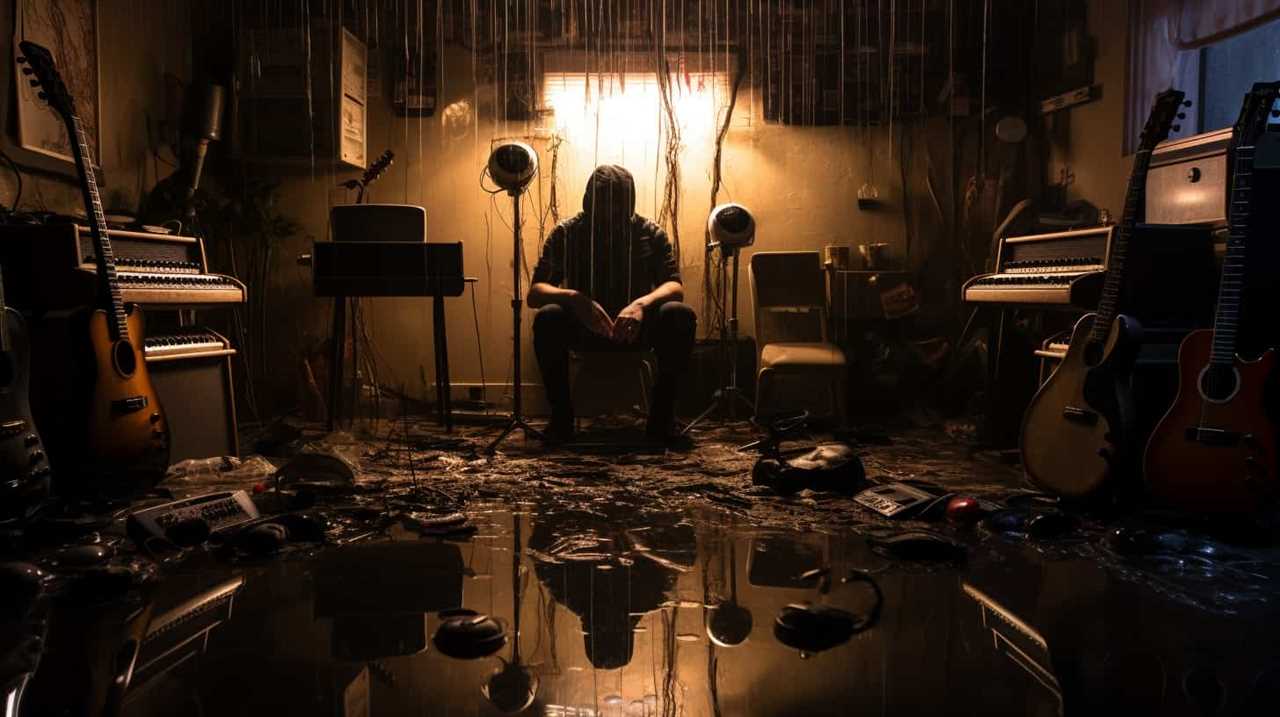
To achieve this, we employ innovative techniques such as brainstorming soundscapes and manipulating ambient textures.
Through careful consideration of levels, dynamics, and equalization, we ensure that each element of our composition contributes to the desired atmospheric effect.
Enhancing Atmospheric Depth
By experimenting with various reverberation techniques, we can effectively enhance the atmospheric depth of our dark ambient compositions. Here are four ways to achieve this:
-
Brainstorming Atmospheric Elements: Start by envisioning the mood and atmosphere you want to create. Consider the sounds of nature, industrial noises, or even ethereal vocal samples to add depth and texture to your composition.
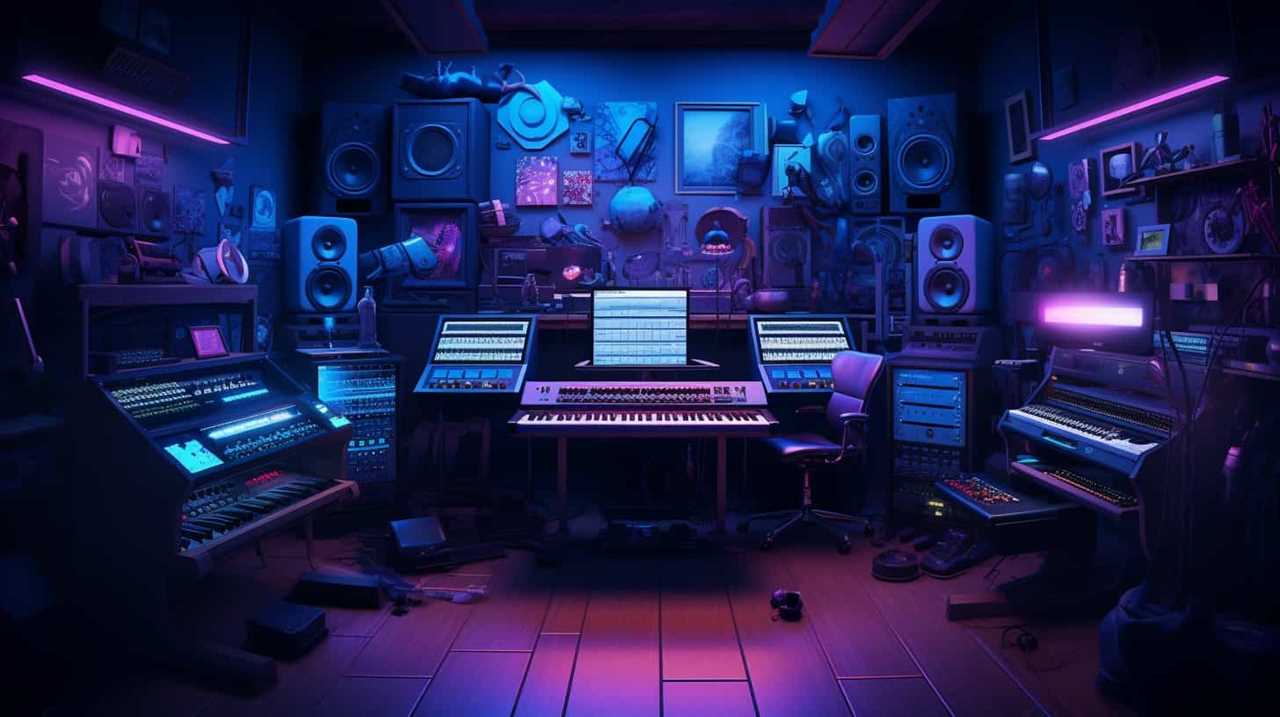
-
Experimenting with Effects: Try using delay, chorus, or flanger effects to create subtle echoes and spatial movement within your soundscapes. These effects can add a sense of distance and immersion to your tracks.
-
Utilizing Filters: Play around with low-pass and high-pass filters to shape the frequency range of your sounds. By selectively cutting or boosting certain frequencies, you can create a sense of depth and space within your compositions.
-
Layering and Panning: Experiment with layering different sounds and panning them across the stereo field. This technique can create a sense of depth and movement, as sounds appear to move from one ear to the other, further enhancing the atmospheric depth of your dark ambient compositions.
Polishing the Final Sound
After we have completed the composition and arrangement of our dark ambient track, it is important to focus on polishing the final sound to ensure a professional and immersive listening experience. This involves adjusting volume levels and applying audio effects to enhance the overall quality of the track. By carefully fine-tuning the different elements, we can create a balance that captivates the listener. Here is a table showcasing the steps involved in polishing the final sound:
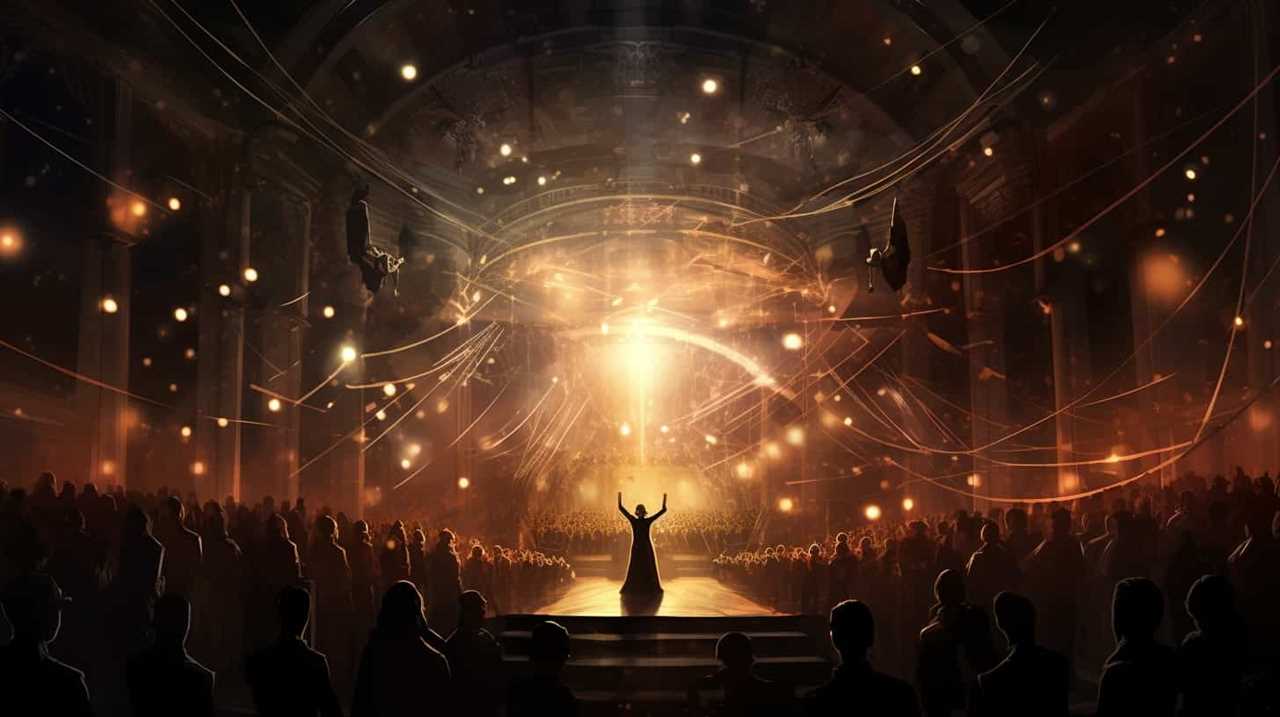
| Step | Description |
|---|---|
| Adjusting Volume Levels | Ensure each element is heard clearly |
| Applying Audio Effects | Enhance the mood and atmosphere of the track |
Frequently Asked Questions
How Can I Incorporate Field Recordings Into My Dark Ambient Music?
Incorporating field recordings into our dark ambient music can greatly enhance the atmospheric quality. By using layering techniques, we can seamlessly blend the natural sounds captured in field recordings with our synthesized sounds. This creates a unique and immersive sonic experience for our audience.
What Are Some Techniques for Creating Unique and Eerie Soundscapes in Dark Ambient Music?
When it comes to crafting dark ambient soundscapes, our team is all about pushing the boundaries and exploring the unconventional.
We delve into the realm of unique and eerie soundscapes by utilizing unconventional recording techniques and experimenting with unconventional instrumentation.
By thinking outside the box and incorporating these techniques, we’re able to create atmospheric compositions that captivate our audience and push the boundaries of what dark ambient music can be.
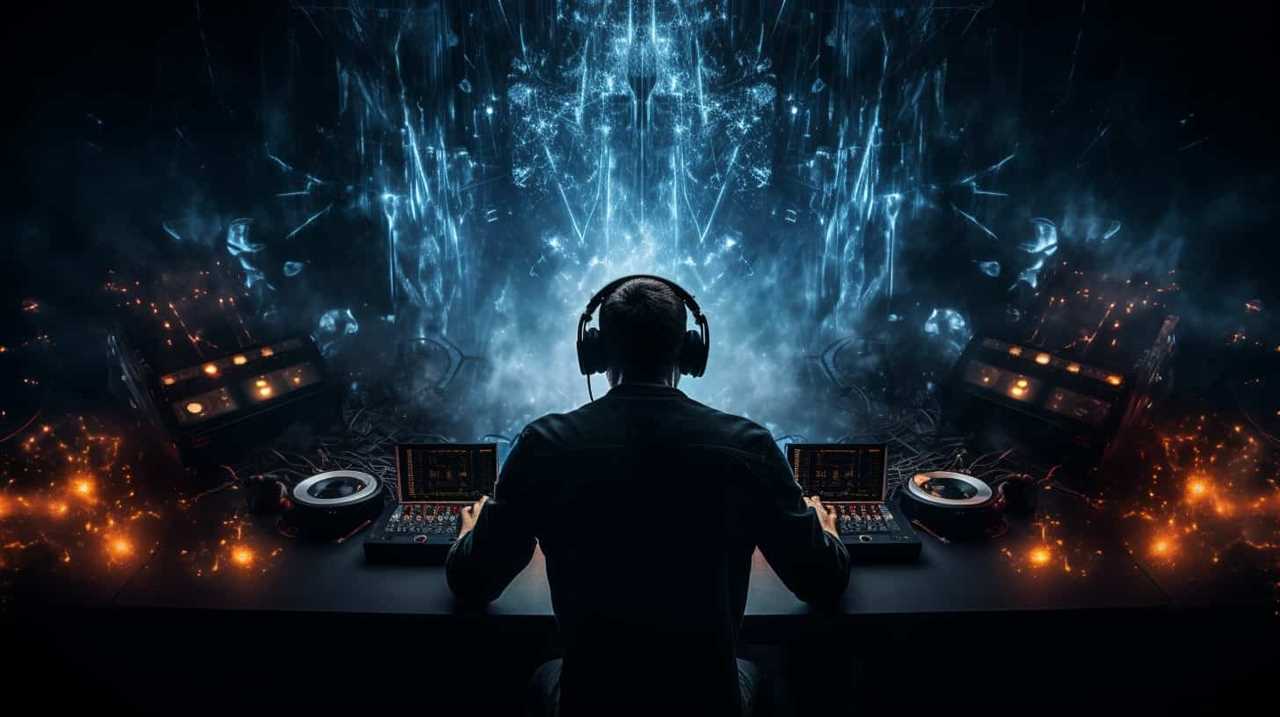
Get ready to immerse yourself in a world of haunting and otherworldly sounds.
How Can I Effectively Use Distortion and Other Effects to Add Depth and Texture to My Dark Ambient Tracks?
When it comes to creating depth and texture in our dark ambient tracks, we’ve found that effectively using distortion and other effects can make a significant impact.
By incorporating modulation effects, such as chorus or flanger, we can add movement and unpredictability to our soundscapes.
Additionally, exploring unconventional sound sources, like field recordings or manipulated samples, allows us to create unique and eerie atmospheres.
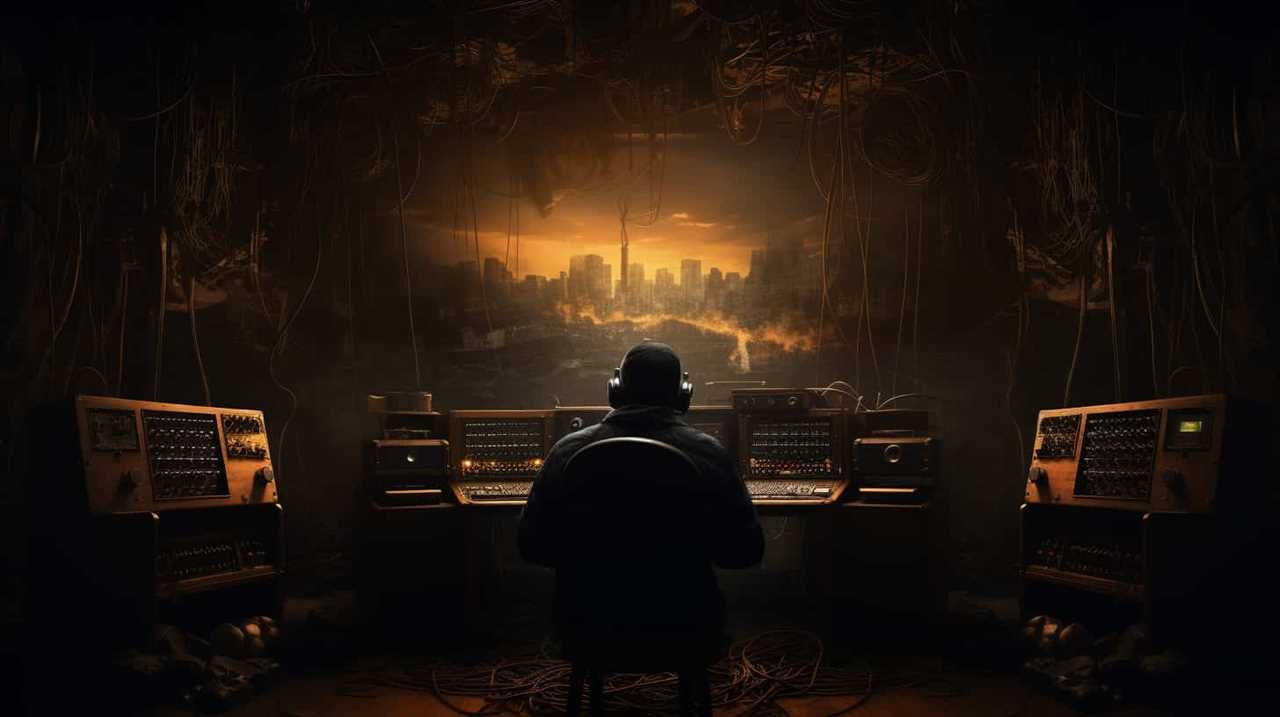
Experimenting with different combinations of effects and sources will help us achieve the desired depth and texture in our dark ambient compositions.
Are There Any Specific Techniques or Tools for Creating Haunting Melodies in Dark Ambient Music?
When it comes to creating haunting melodies in dark ambient music, we must first understand the importance of atmospheric tension.
By using dissonant notes and unconventional scales, we can evoke a sense of unease and suspense.
Additionally, exploring unconventional instrumentation such as field recordings, found objects, and manipulated samples can add unique textures to our melodies.
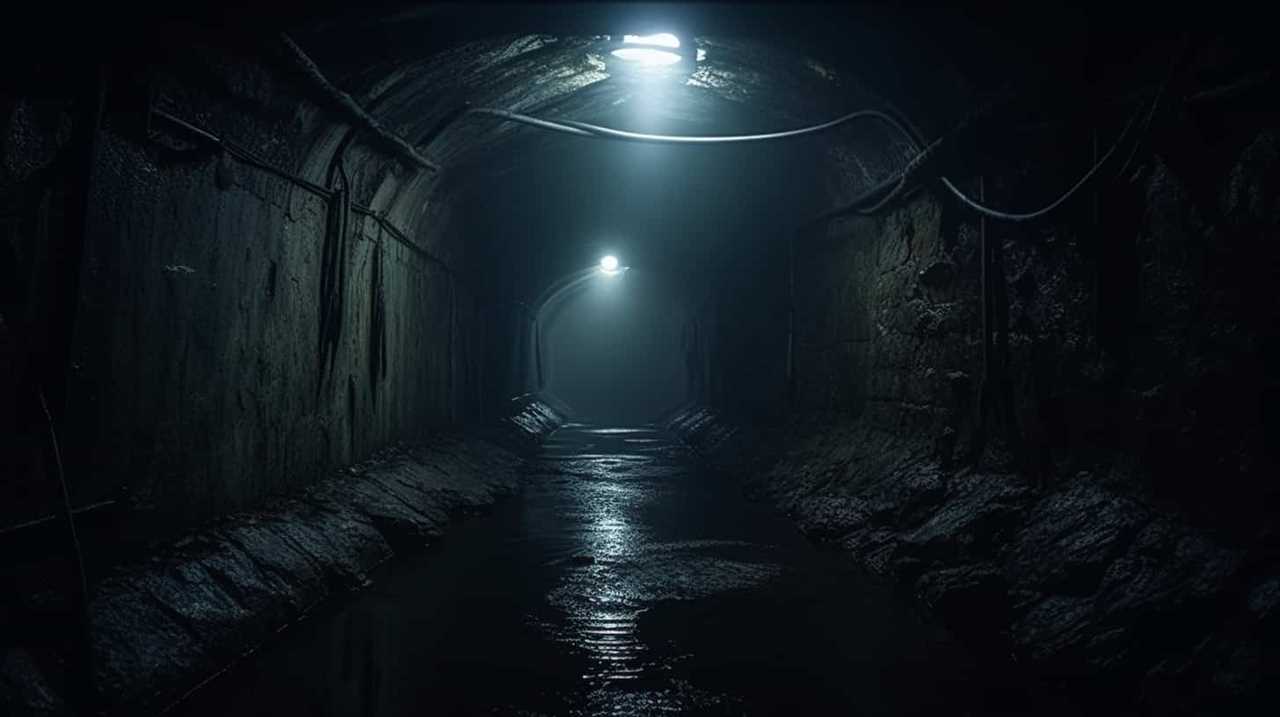
What Are Some Tips for Achieving a Cohesive and Immersive Listening Experience in a Dark Ambient Album?
To achieve a cohesive and immersive listening experience in dark ambient music, layering and blending sounds is of utmost importance. This technique allows for the creation of complex sonic textures that engage the listener on multiple levels.
Additionally, the strategic use of reverb and delay effects can help create a sense of space and depth in dark ambient tracks, further enhancing the immersive quality of the music.
These tips, when applied with precision and innovation, can elevate the overall sonic experience for the audience.
Conclusion
After mastering the art of dark ambient sound creation, our journey has led us to the pinnacle of atmospheric depth and sonic manipulation.
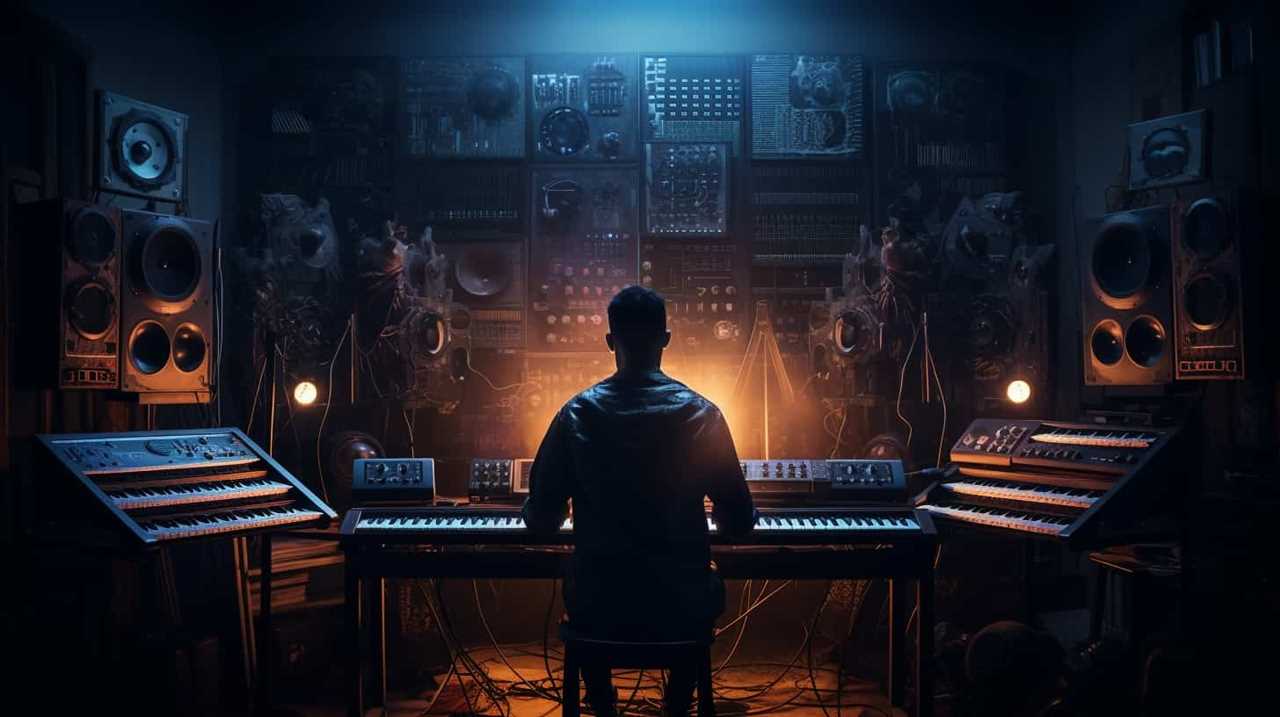
With meticulous attention to detail, we’ve crafted a sound palette that envelops the listener in an eerie and immersive experience.
Through the careful selection of instruments, manipulation of synth patches, and mastering techniques, we’ve achieved a final sound that’s polished and haunting.
Prepare to be captivated, as the dark ambient sound we’ve created will leave you yearning for more.
Ambient
Mastering the Art of Dark Ambient Synthesizer Music
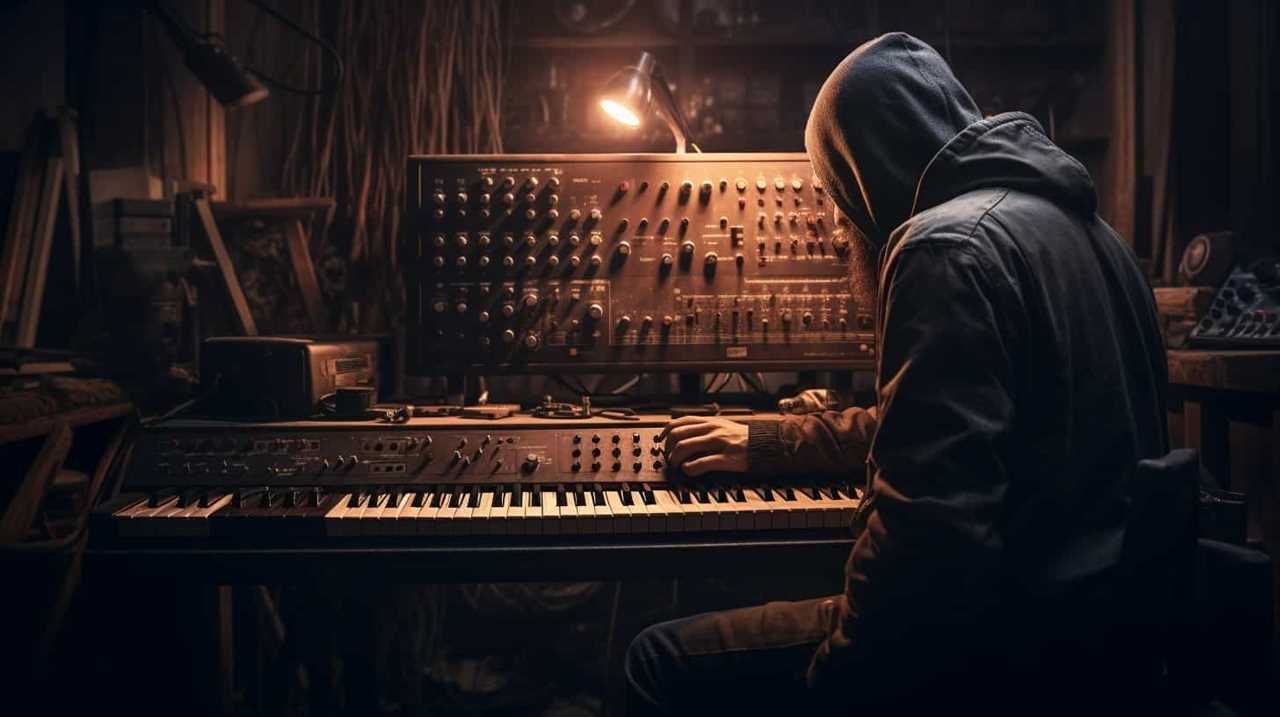
Welcome to our tutorial on becoming proficient in the craft of dark ambient synth music. Prepare yourself to explore a realm filled with ominous soundscapes and eerie tunes.
In this article, we will explore the techniques and tools necessary to create mesmerizing sonic atmospheres. From understanding synthesizer capabilities to manipulating waveforms, we will guide you through the process of crafting unique and innovative dark ambient compositions.
So, let’s embark on this sonic journey together and unlock the secrets of this captivating genre.
Key Takeaways
- Understanding the capabilities of synthesizers is crucial for crafting unique compositions.
- Manipulating waveforms, filters, and frequency manipulation techniques are essential for creating atmospheric textures.
- Techniques such as evolving tonal textures, pitch modulation, and creating eerie soundscapes are effective in dark ambient music.
- Attention to detail, experimentation with effects, and mastering techniques are important for creating an immersive and compelling dark ambient sonic experience.
Understanding Synthesizer Capabilities
We’ll start by exploring the three main capabilities of synthesizers that can enhance our dark ambient music.
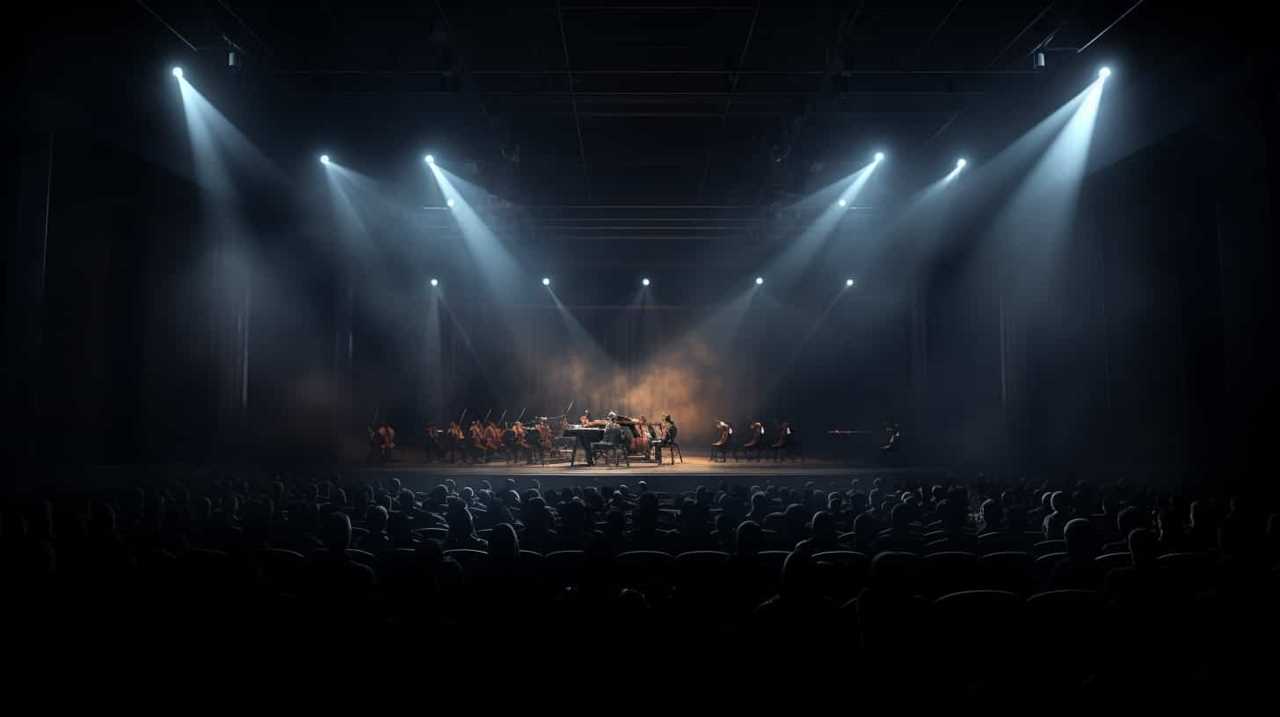
Synthesizers offer immense potential for manipulating synth parameters, allowing us to shape and mold our sounds to create the desired atmospheric drones. With the ability to control oscillators, filters, and modulation sources, we can achieve intricate textures and haunting tones that define the essence of dark ambient music.
Now that we understand the capabilities, let’s move on to choosing the right synth patches.
Choosing the Right Synth Patches
Our goal is to find synth patches that capture the eerie and ethereal qualities of dark ambient music. To achieve this, we must experiment with manipulating envelope and exploring the potential of LFOs.
Here are four key considerations when choosing the right synth patches:
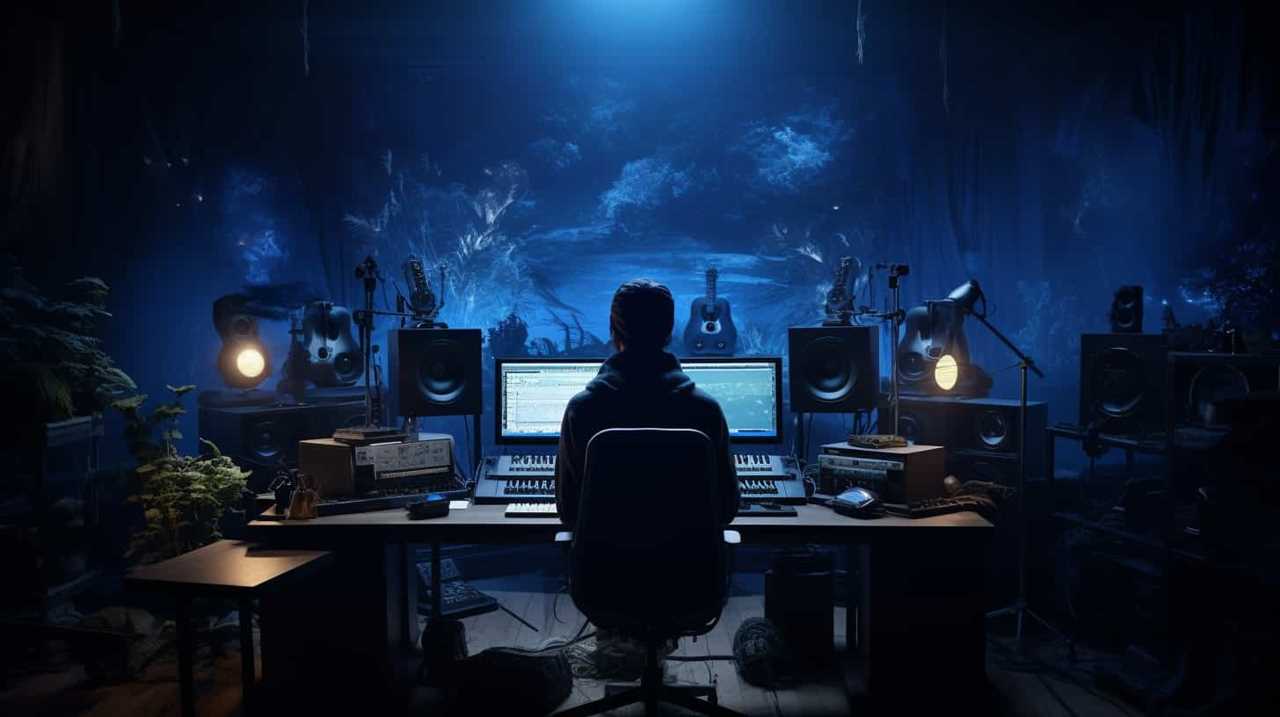
-
Evocative textures: Look for patches that offer rich and complex textures, allowing for deep sonic exploration.
-
Dynamic modulation: Seek patches that feature dynamic modulation possibilities, enabling expressive performance and variation.
-
Ethereal pads: Find patches that create atmospheric and otherworldly pad sounds, adding depth and dimension to your compositions.
-
Haunting melodies: Look for patches that offer haunting and melancholic melodies, evoking a sense of mystery and introspection.
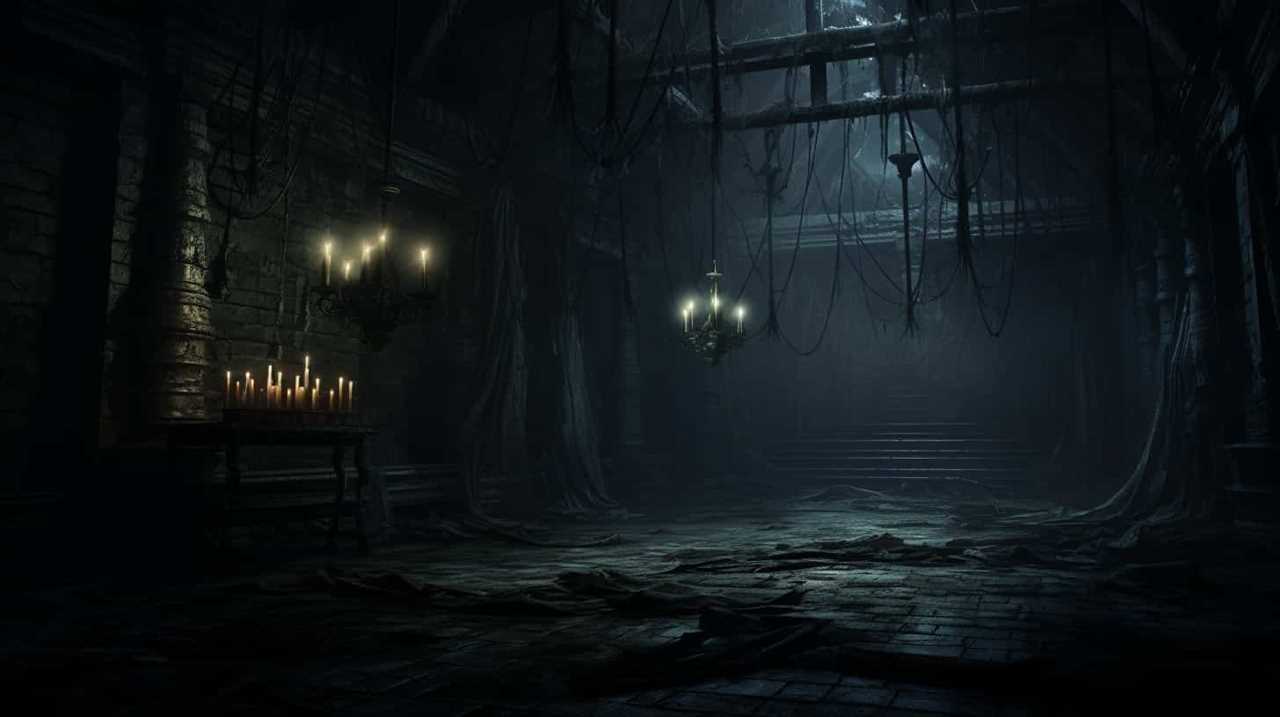
Manipulating Waveforms for Dark Ambient Sounds
To create dark ambient sounds, we can experiment with manipulating waveforms using various techniques and effects. One way to manipulate waveforms is by adjusting the envelopes, which control how the sound evolves over time. By manipulating the attack, decay, sustain, and release stages of the waveform envelope, we can create eerie and haunting sounds that are characteristic of dark ambient music. Additionally, utilizing effects processors such as reverb, delay, and distortion can further enhance the atmospheric and otherworldly qualities of the waveform.
| Manipulating Waveform Envelopes | Utilizing Effects Processors | Experimenting with Techniques |
|---|---|---|
| Adjust attack, decay, sustain, release | Add reverb, delay, distortion | Explore granular synthesis, sample manipulation |
| Create evolving and haunting sounds | Enhance atmospheric and otherworldly qualities | Layer sounds, modulate parameters |
| Experiment with different envelope shapes | Use filters, modulation effects | Explore feedback loops, spectral processing |
| Shape sound evolution over time | Create depth and space | Incorporate randomization, generative techniques |
| Enhance expressiveness and dynamics | Add texture and movement | Combine multiple techniques for unique textures |
Exploring Filter Cutoff Techniques
When it comes to exploring filter cutoff techniques in dark ambient synthesizer music, there are several points worth considering.
Firstly, creative filter modulation allows for the manipulation of the frequency spectrum, adding movement and depth to the sound.
Secondly, dynamic frequency manipulation enables the shaping of the sound in real-time, creating evolving tonal textures.
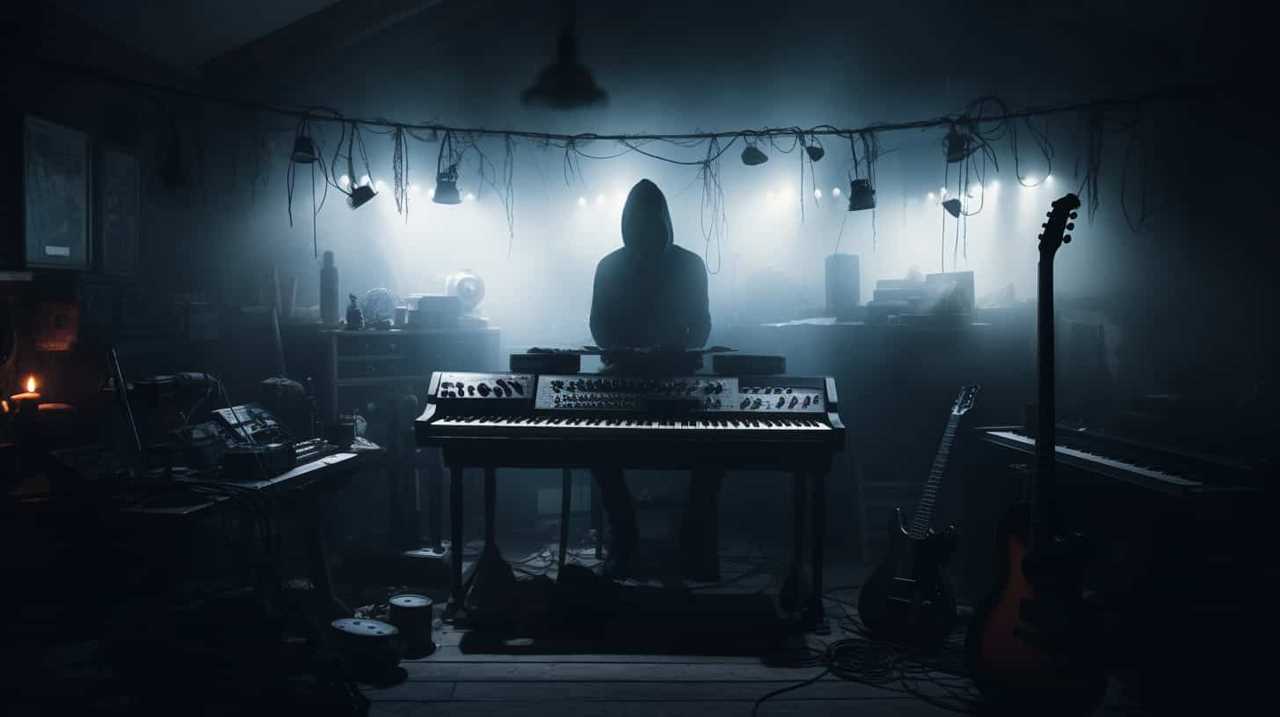
Lastly, experimenting with different filter cutoff settings can unveil new sonic possibilities, allowing for the creation of unique and atmospheric sounds in the dark ambient genre.
Creative Filter Modulation
We love experimenting with creative filter modulation techniques to explore different filter cutoff sounds in our dark ambient synthesizer music. Here are four ways we push the boundaries of filter modulation in pursuit of innovative and evocative sounds:
-
Resonance Modulation: By tweaking the resonance parameter, we create mesmerizing tones that resonate and evolve, adding depth and texture to our compositions.
-
LFO Modulation: We utilize low-frequency oscillators to dynamically modulate the filter cutoff, producing rhythmic and pulsating effects that enhance the mood of our music.
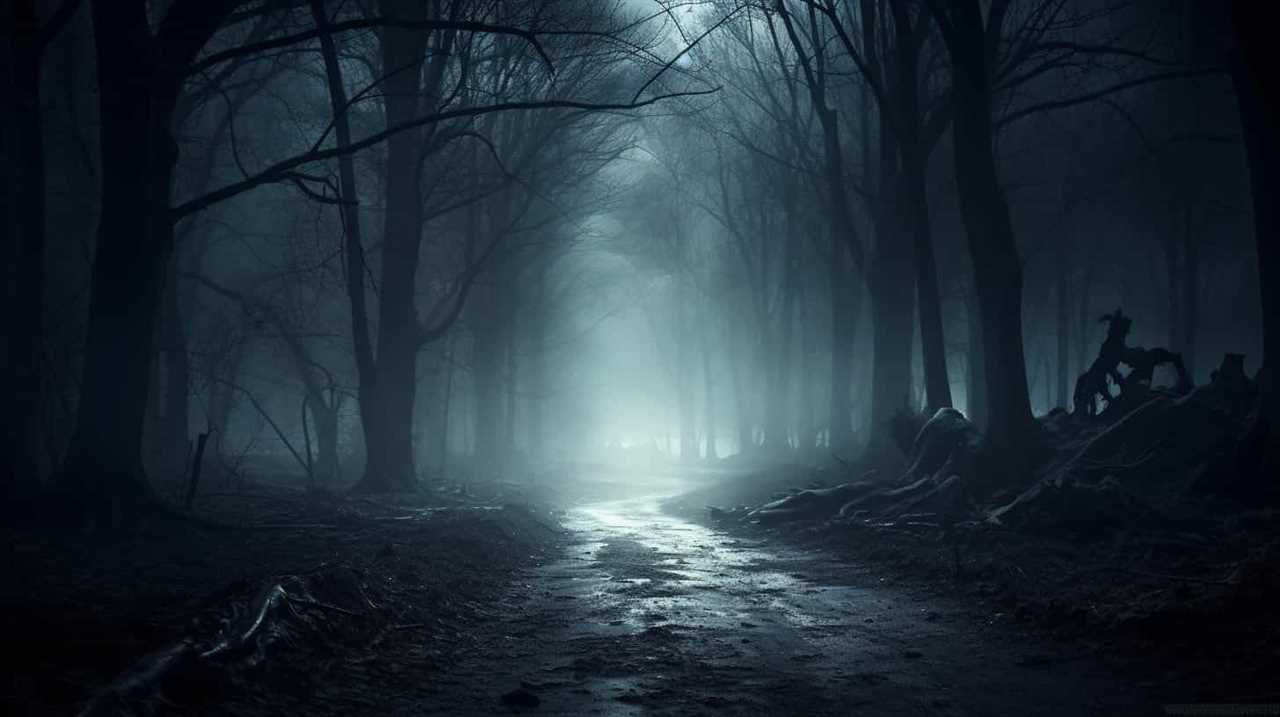
-
Envelope Modulation: Applying envelope modulation to the filter cutoff allows us to shape the sound over time, creating dramatic sweeps and dynamic movements.
-
Multi-Stage Modulation: We combine multiple modulation sources, such as LFOs and envelopes, to create complex and evolving filter cutoff patterns that continually surprise and captivate our listeners.
Through these innovative techniques, we unlock a world of expressive possibilities and push the boundaries of dark ambient synthesizer music.
Dynamic Frequency Manipulation
As we delve deeper into the realm of dynamic frequency manipulation, we discover the endless possibilities of exploring filter cutoff techniques in our dark ambient synthesizer music. Manipulating frequency ranges allows us to shape the sonic landscape and create unique textures that evoke a wide range of emotions. By incorporating ambient field recordings into our compositions, we can further enhance the atmospheric depth and immerse our audience in an otherworldly experience. It’s through these innovative techniques that we push the boundaries of dark ambient music and create truly captivating soundscapes.
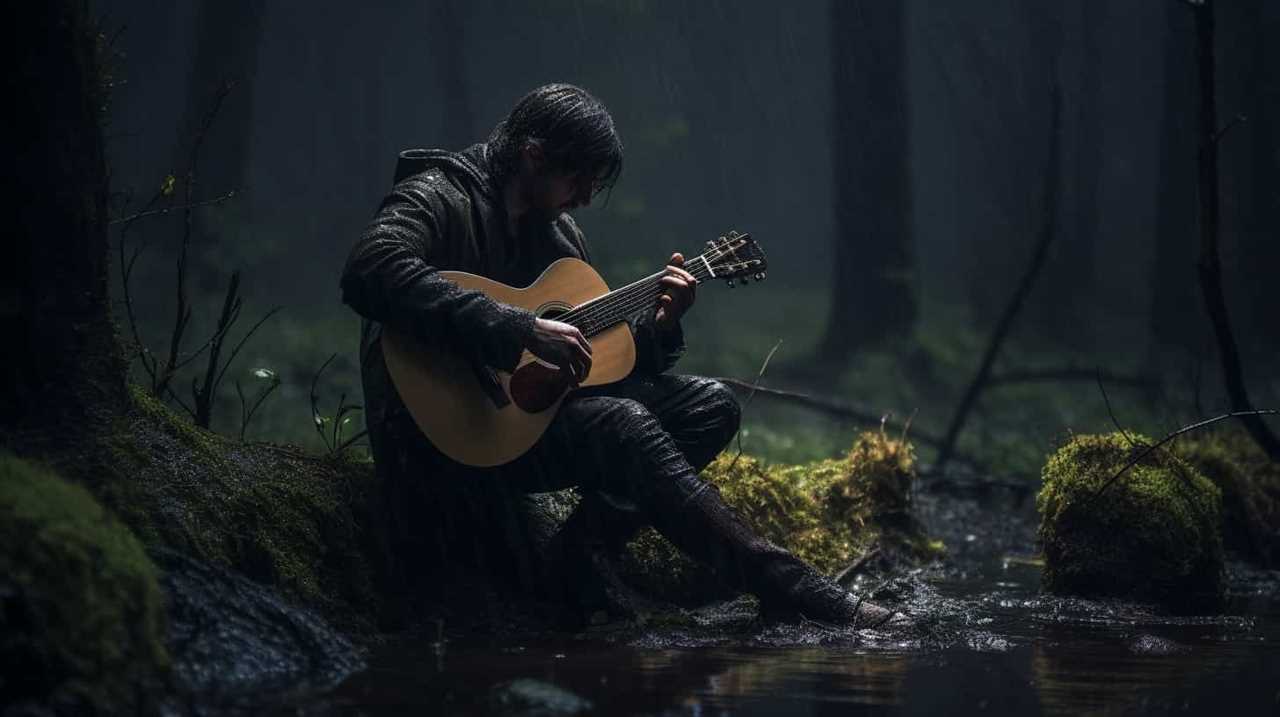
| Techniques | Effects | Emotions |
|---|---|---|
| Low-pass filter | Creates a sense of depth | Eerie, mysterious |
| High-pass filter | Adds clarity and focus | Tense, suspenseful |
| Band-pass filter | Isolates specific frequencies | Ethereal, dreamy |
| Notch filter | Removes unwanted frequencies | Unsettling, eerie |
| Resonant filter | Enhances specific frequencies | Hypnotic, mesmerizing |
Evolving Tonal Textures
By experimenting with different filter cutoff techniques, we can evolve our tonal textures and create a dynamic and immersive dark ambient synthesizer music experience. Here are four ways to explore filter cutoff techniques and take your tonal textures to the next level:
-
Gradual Opening: Slowly increase the filter cutoff frequency to introduce new harmonics and gradually transform the texture, creating a sense of anticipation and suspense.
-
Abrupt Closing: Suddenly lower the filter cutoff frequency to remove higher frequencies, resulting in a darker and more mysterious tone that can evoke a feeling of unease.
-
Sweeping Movement: Modulate the filter cutoff frequency over time, creating a sweeping motion that adds movement and depth to the tonal textures, enhancing the overall atmospheric quality of the music.
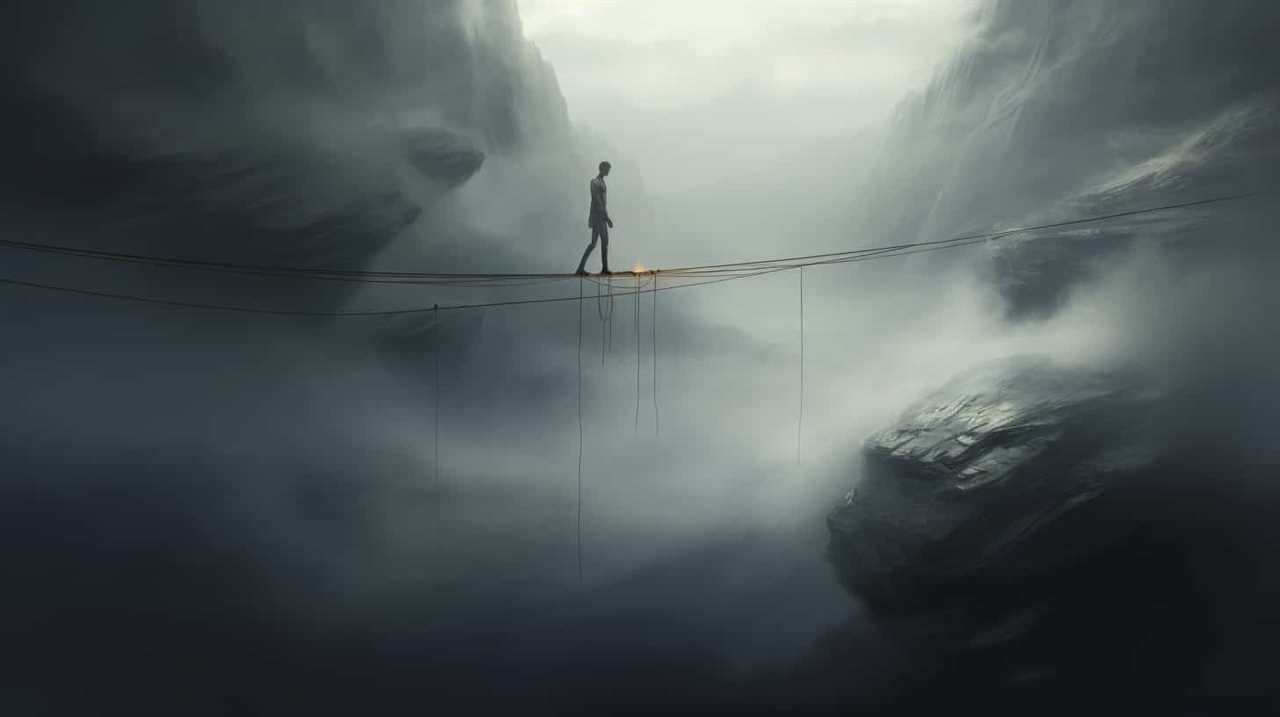
-
Randomizing Variations: Experiment with random variations in the filter cutoff frequency to add unpredictability and unpredictability, creating an organic and evolving soundscape that keeps the listener engaged.
By exploring these filter cutoff techniques, we can push the boundaries of our tonal textures and create captivating dark ambient synthesizer music.
However, there’s another technique that can further enhance our sonic palette: applying resonance for added depth.
Applying Resonance for Added Depth
Sometimes, we use resonance to add depth to our dark ambient synthesizer music. By applying resonance, we can create a rich and immersive sonic experience for our listeners. Resonance allows us to enhance specific frequencies, amplifying their impact and creating a sense of space within our compositions.
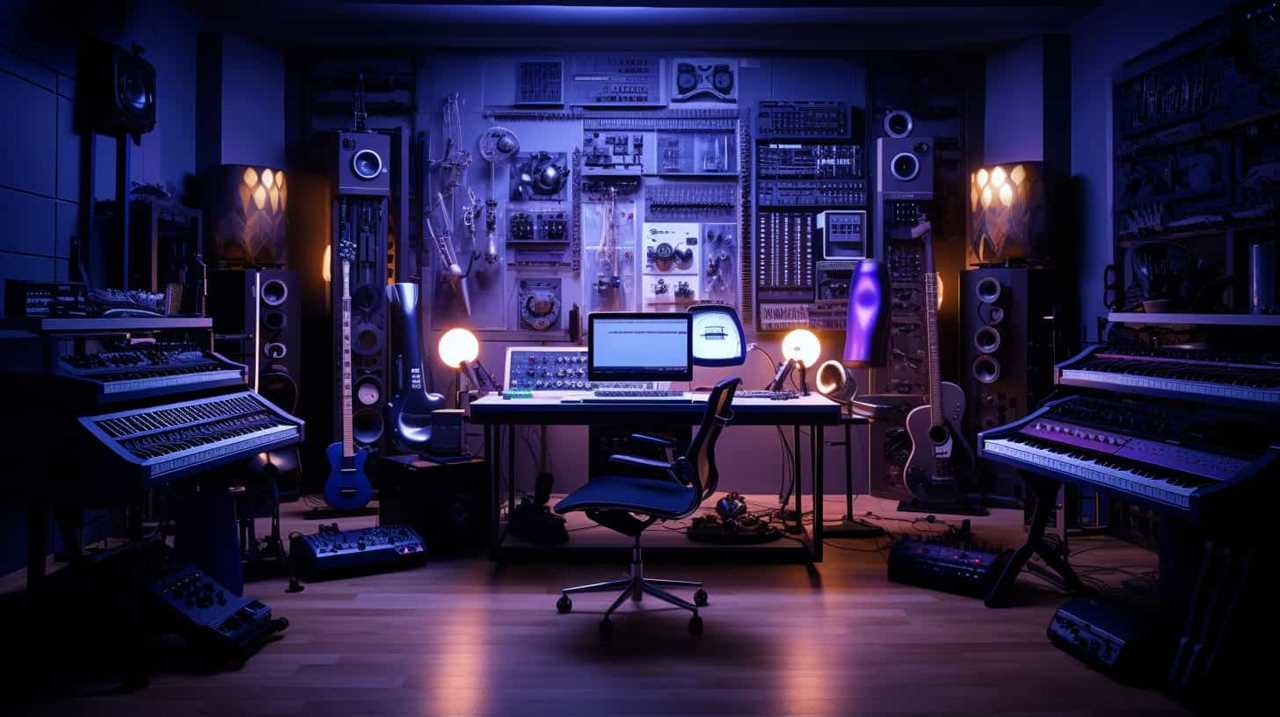
When exploring LFO modulation techniques, we can further manipulate resonance, adding movement and texture to our sounds. However, resonance is just one aspect of creating haunting tones; let’s now delve into the art of modulating pitch.
Modulating Pitch for Haunting Tones
When it comes to creating haunting tones in dark ambient synthesizer music, one of the most effective techniques is pitch modulation.
By modulating the pitch of the synthesizer, we can create eerie soundscapes that evoke a sense of unease and mystery.
This modulation can be achieved through various methods, such as using LFOs, envelope generators, or even manual manipulation of the pitch wheel.
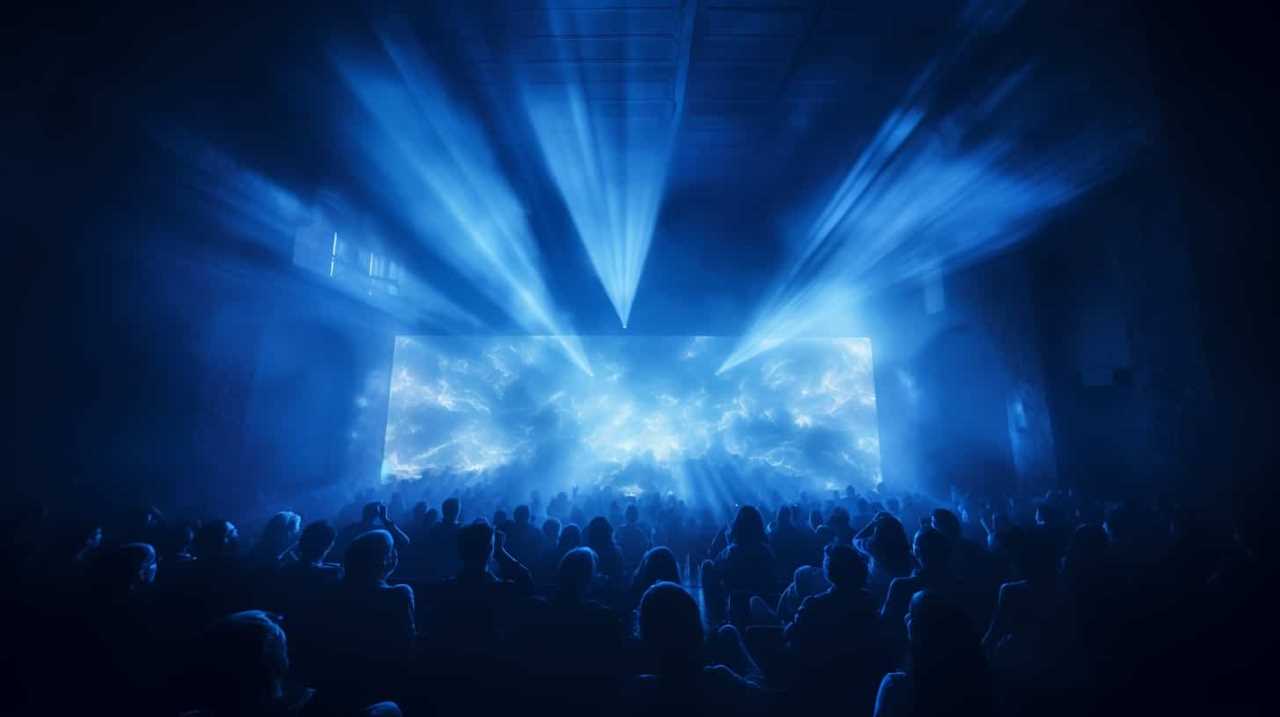
These techniques allow us to explore the depths of darkness and craft unique sonic experiences that transport listeners to otherworldly realms.
Pitch Modulation Techniques
As we delve into the realm of pitch modulation techniques, we can create haunting tones that evoke a sense of darkness and unease in our dark ambient synthesizer compositions. Here are four innovative ways to achieve these haunting tones:
-
Waveform Manipulation: Experiment with manipulating the shape and characteristics of your synth’s waveform. By altering the waveform, you can introduce subtle variations in pitch that add an eerie and unsettling quality to your music.
-
Filter Modulation: Utilize filter modulation to create dynamic changes in pitch. By modulating the filter cutoff frequency, you can create sweeping movements in pitch that evoke a sense of unease and tension in your compositions.
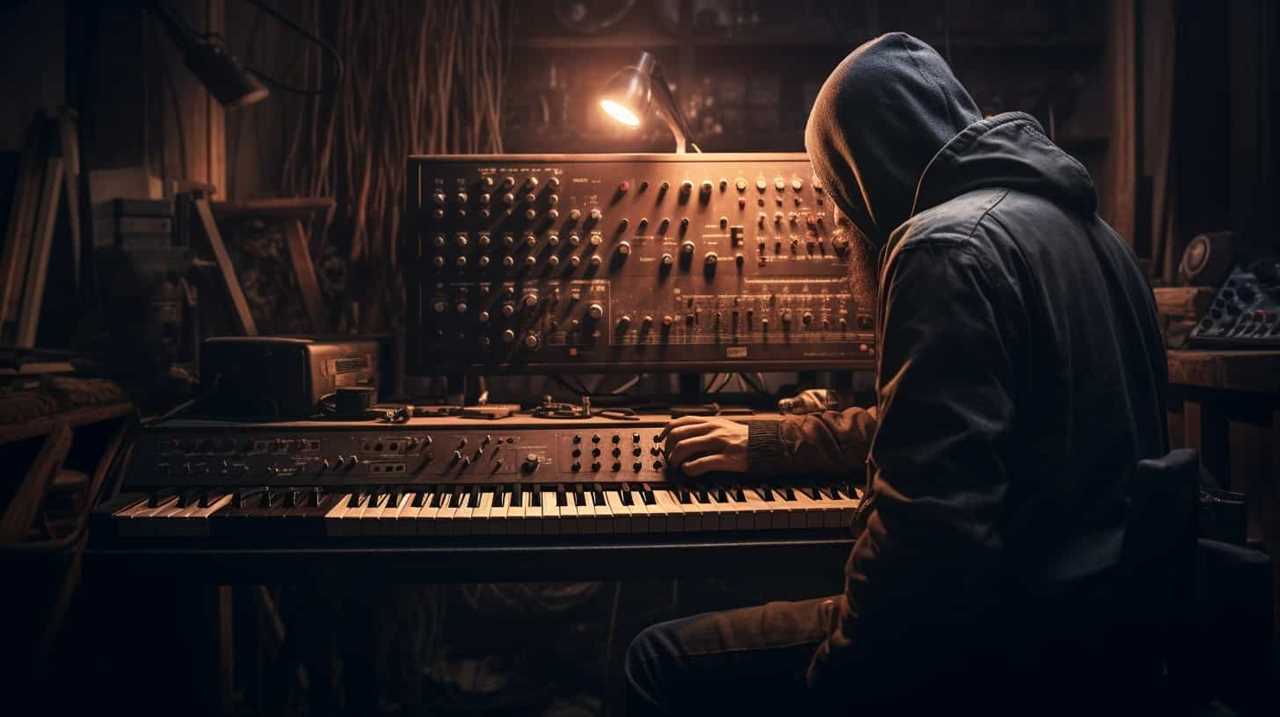
-
LFO Modulation: Harness the power of low-frequency oscillators (LFOs) to modulate the pitch of your synthesizer. By assigning an LFO to control the pitch parameter, you can create subtle or drastic pitch fluctuations that enhance the haunting atmosphere of your music.
-
Pitch Bend and Glide: Explore the expressive possibilities of pitch bend and glide techniques. By bending and gliding between notes, you can create unsettling and ghostly melodies that give your dark ambient compositions a haunting edge.
Creating Eerie Soundscapes
We can achieve truly haunting tones by skillfully modulating the pitch, allowing us to create eerie soundscapes in our dark ambient synthesizer music.
Manipulating ambient drones is a powerful technique to create haunting atmospheres. By gradually shifting the pitch of these drones, we can evoke a sense of unease and mystery.
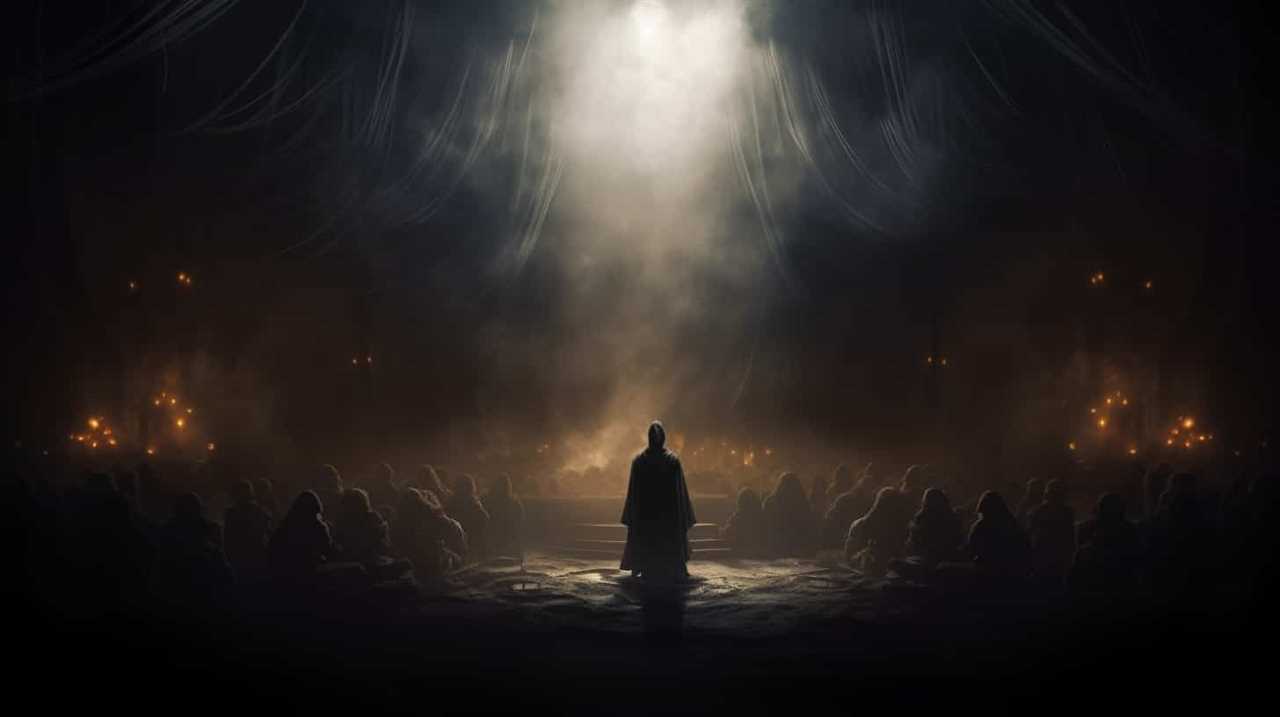
This adds depth and texture to our compositions, immersing our listeners in a world of darkness and intrigue.
Experiment with different pitch modulation techniques to unlock new sonic possibilities.
Integrating White Noise for Textural Atmosphere
By incorporating white noise into our compositions, we can create a rich and immersive textural atmosphere in our dark ambient synthesizer music. Here are four ways to utilize white noise for maximum impact:
-
Layering: Blend white noise with other sounds to add depth and complexity to your compositions.
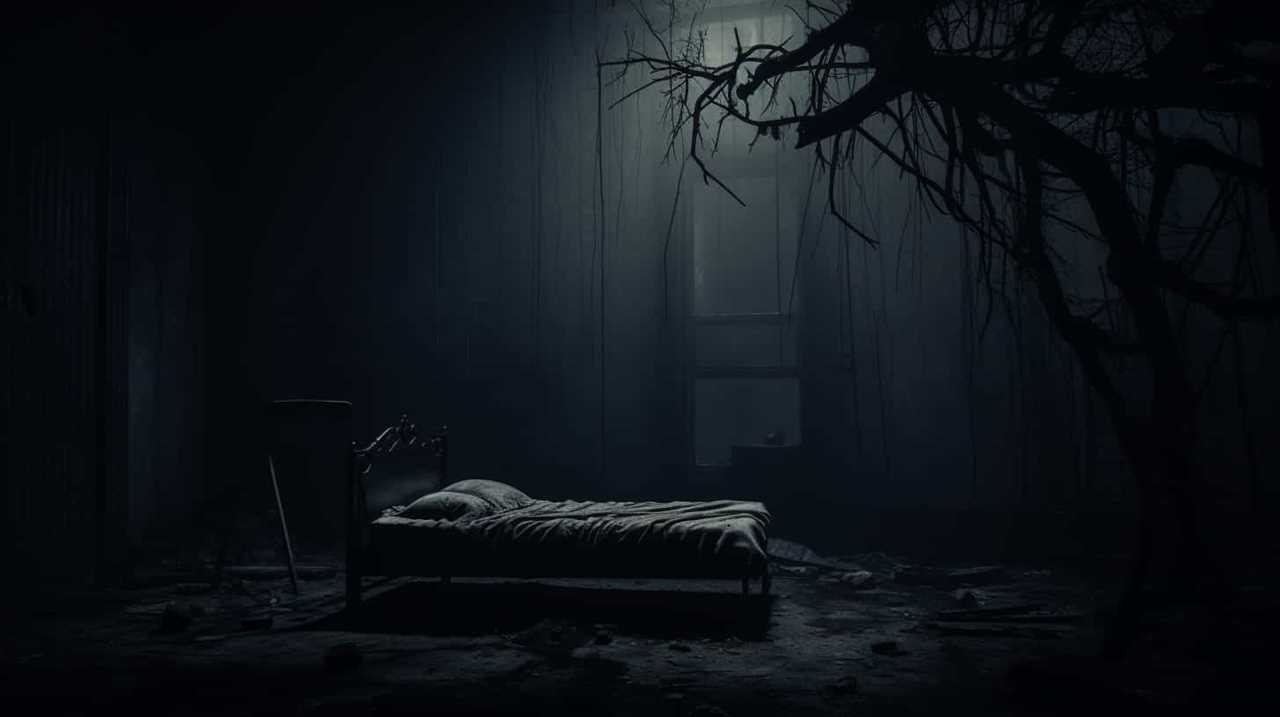
-
Modulation: Experiment with modulating the volume, pitch, and frequency of white noise to create evolving textures.
-
Filtering: Apply filters to shape the frequency spectrum of white noise, creating unique tonal characteristics.
-
Spatialization: Position white noise in the stereo field to enhance the sense of space and envelopment in your music.
Implementing field recordings for organic textures further enhances the atmospheric effects, allowing for a truly immersive sonic experience.
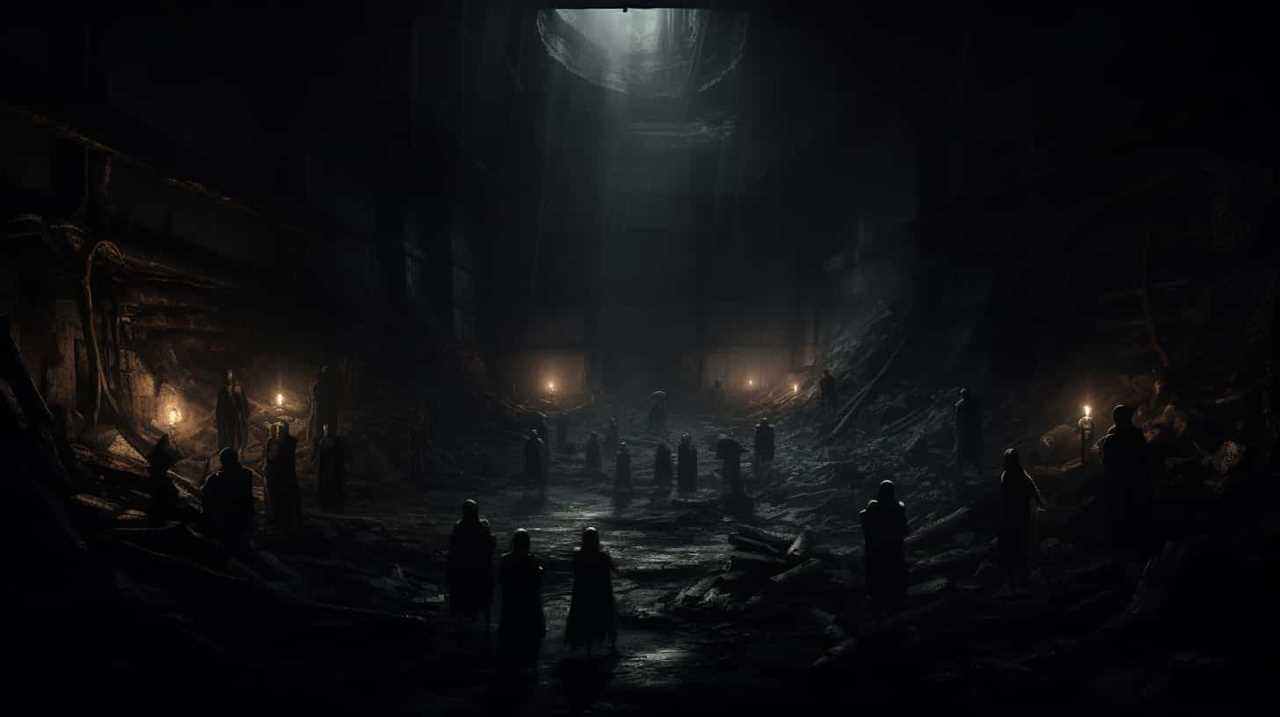
Unleashing the Power of the Arpeggiator
When it comes to creating captivating dark ambient synthesizer music, one can’t underestimate the power of the arpeggiator.
As beginners, we can explore various arpeggiator techniques to add complexity and movement to our compositions. By experimenting with creative arpeggiator patterns, we can evoke different emotions and create unique sonic textures.
Additionally, customizing arpeggiator sounds allows us to shape the timbre and character of our music, enabling us to truly unleash the potential of this powerful tool.
Arpeggiator Techniques for Beginners
Our exploration of arpeggiator techniques will unlock the full potential of this powerful tool. Here are four ways to take your arpeggiator skills to the next level:
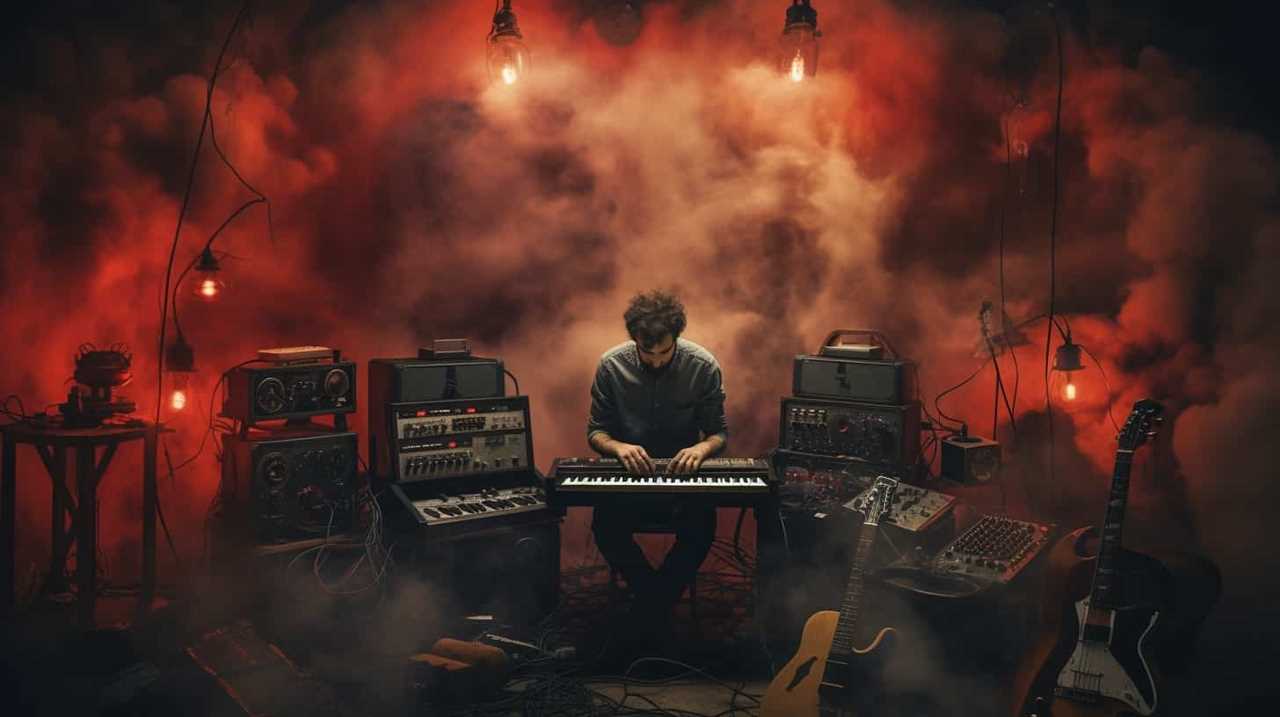
-
Utilizing rhythmic variations in arpeggiator patterns adds complexity and intrigue to your compositions. Experiment with different note values, syncopation, and time signatures to create unique rhythmic textures.
-
Incorporating arpeggiator effects for atmospheric depth can transform your soundscapes. Experiment with delay, reverb, and modulation effects to create ethereal and otherworldly atmospheres.
-
Experiment with different arpeggiator modes and settings to create a range of musical textures. Try out different patterns, octaves, and note intervals to find the perfect combination for your composition.
-
Combine the arpeggiator with other synthesizer techniques, such as modulation and filtering, to create complex and evolving sounds. Use envelopes, LFOs, and filters to shape the arpeggiated notes and add movement to your music.
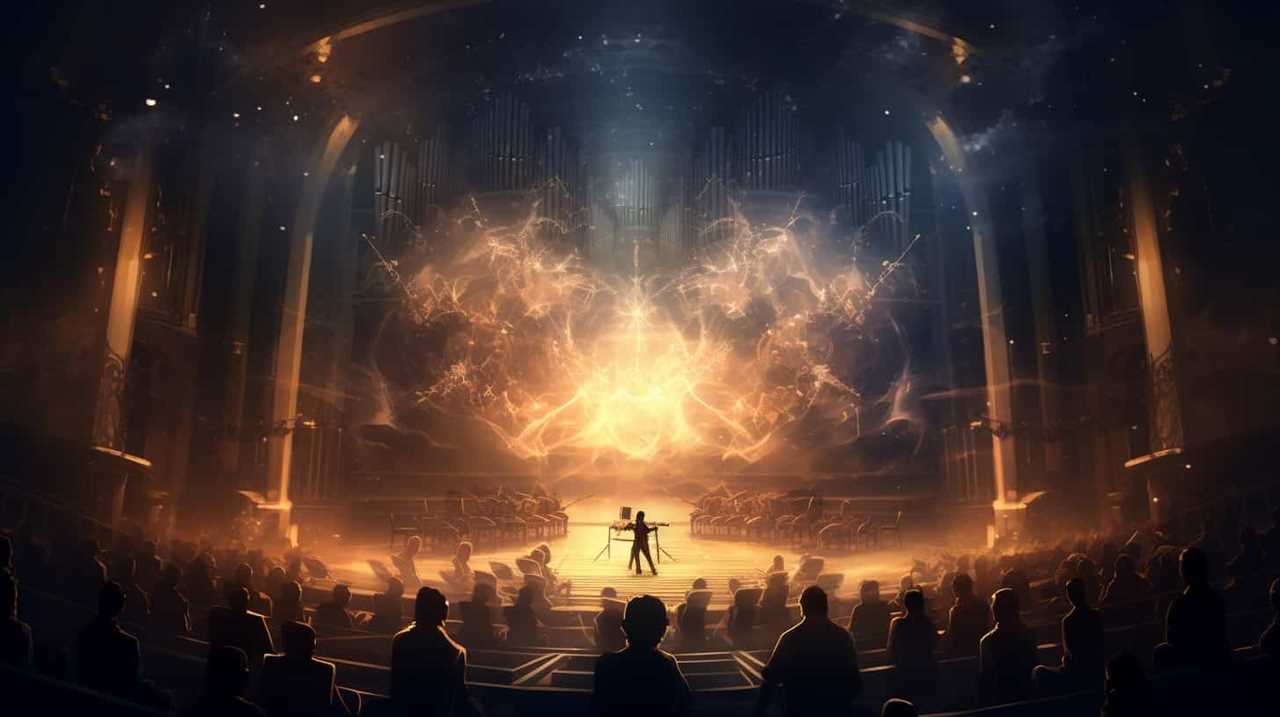
With these techniques, you can harness the power of the arpeggiator and create innovative, atmospheric, and captivating dark ambient synthesizer music.
Creative Arpeggiator Patterns
Let’s dive into the world of creative arpeggiator patterns and unleash the power of this versatile tool.
Advanced arpeggiator sequencing allows for intricate and complex patterns that can add depth and texture to your music.
By exploring unconventional arpeggiator patterns, you can push the boundaries of traditional music structures and create unique sonic landscapes.
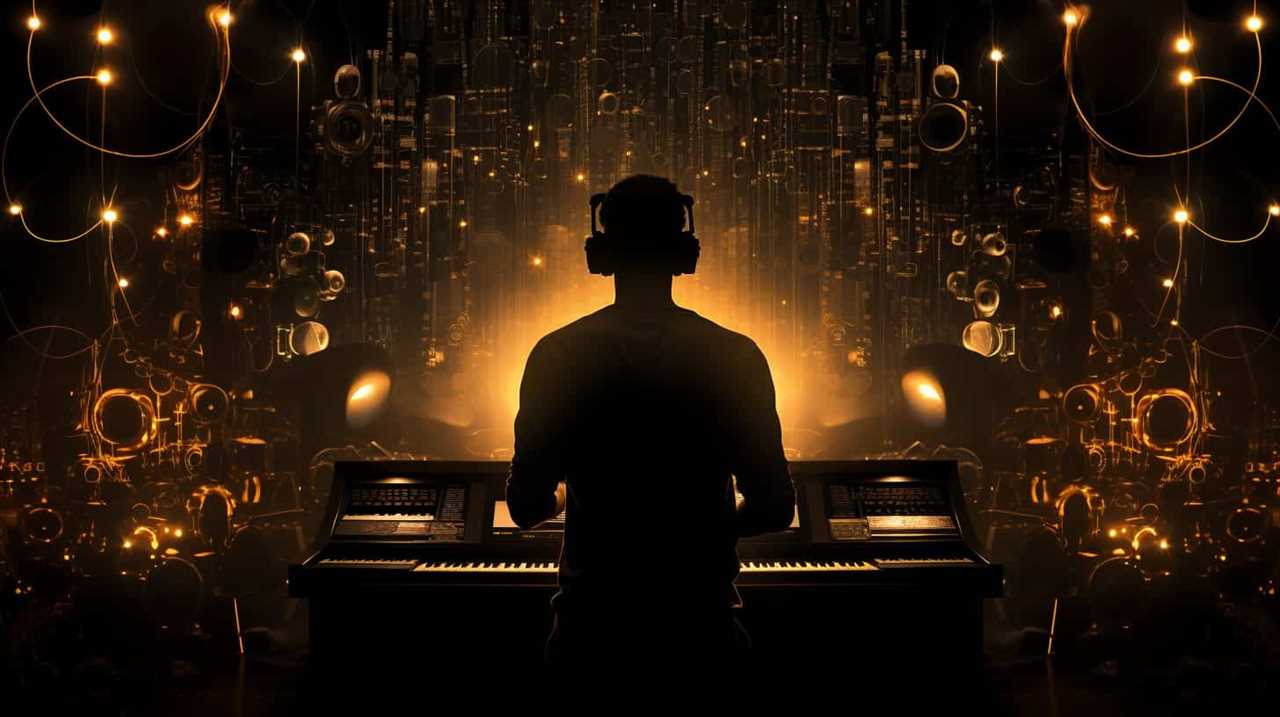
Experiment with different rhythms, note lengths, and intervals to create captivating and innovative compositions that will captivate your audience with their creativity and originality.
Customizing Arpeggiator Sounds
We can unleash the power of the arpeggiator by customizing its sounds to suit our dark ambient synthesizer music. Here are some advanced arpeggiator techniques for creating unique rhythmic patterns:
-
Experiment with different arpeggio modes, such as up, down, random, or octave jumps, to add complexity and variation to your music.
-
Adjust the arpeggiator’s speed and gate settings to control the rhythmic feel of the patterns, creating tension or a sense of urgency.
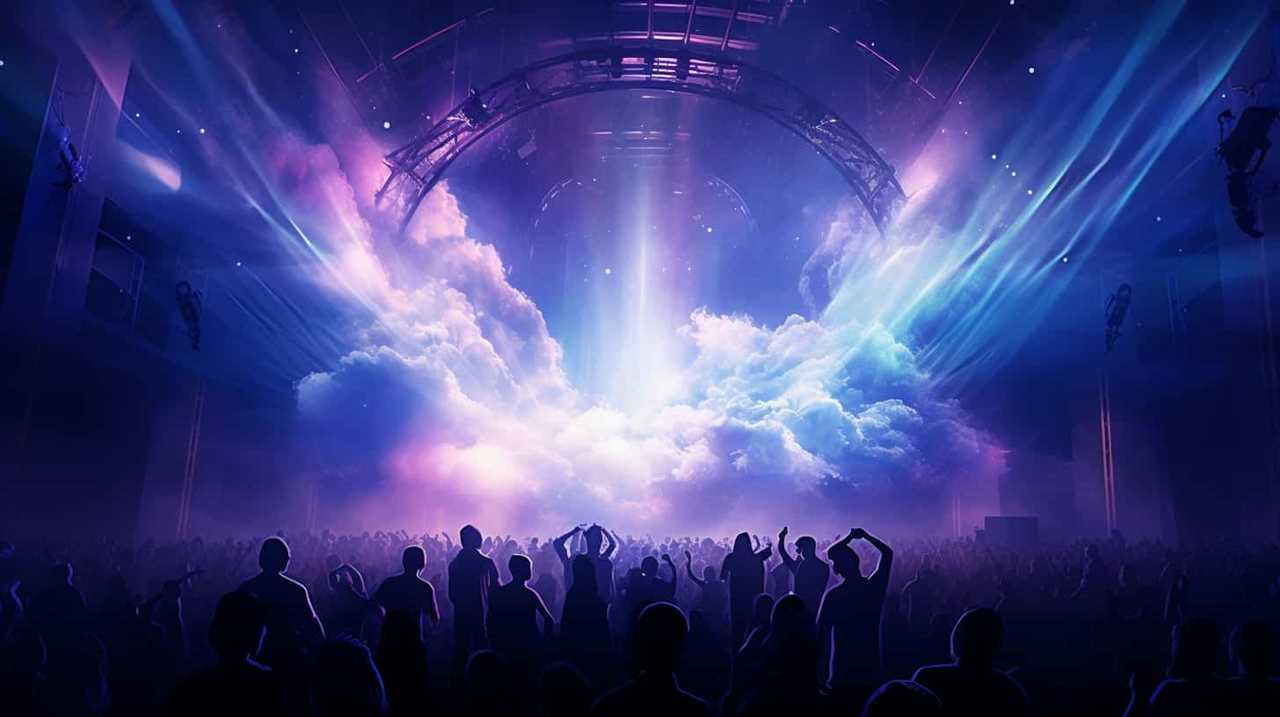
-
Use the arpeggiator’s note range and interval settings to explore different melodic possibilities and create haunting or mysterious melodies.
-
Combine the arpeggiator with other effects, such as delay or reverb, to further enhance the atmospheric quality of your dark ambient soundscapes.
Layering Synths for Complex Soundscapes
As we delve into the topic of layering synths for complex soundscapes, it’s important to understand the role of each instrument in creating a rich and immersive musical experience.
Manipulating synth parameters allows us to shape the timbre and texture of each layer, while layering effects adds depth and complexity.
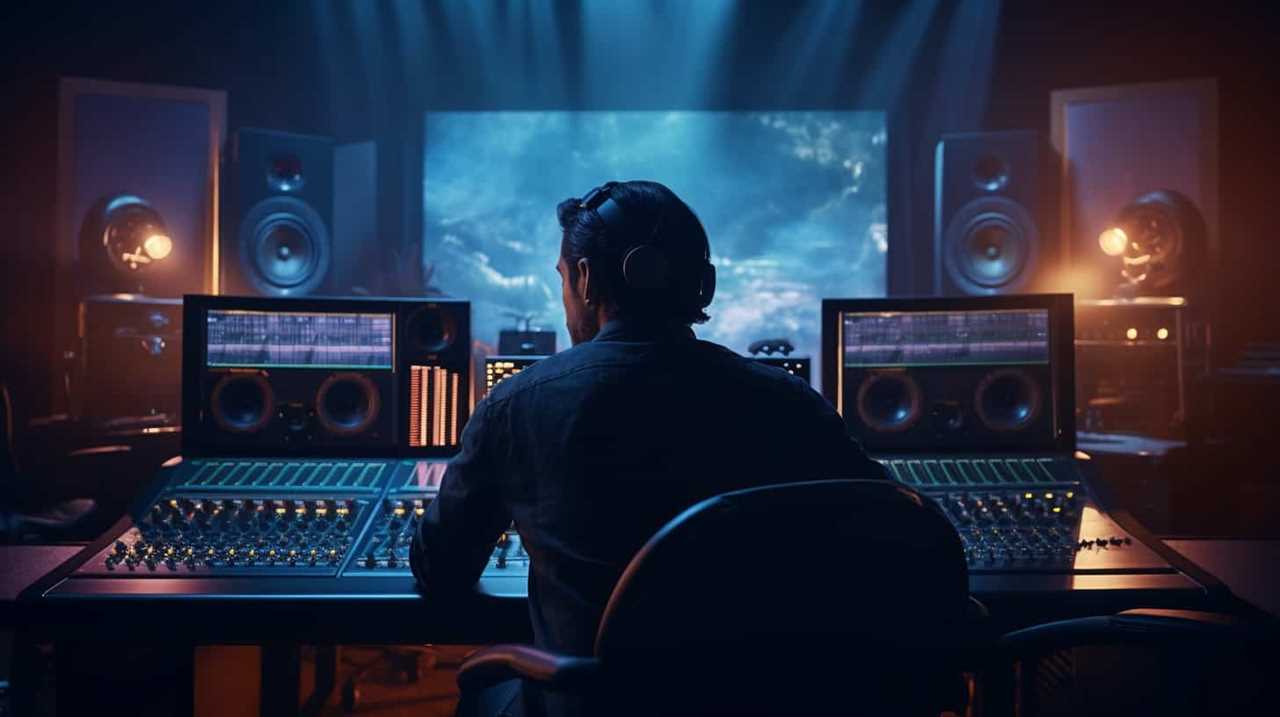
Achieving the Perfect Dark Tonality
To achieve the perfect dark tonality, we must experiment with different synthesizer settings and effects to create an eerie and haunting atmosphere. Here are four techniques to help you achieve this:
-
Manipulating reverb settings: Play around with the decay time and diffusion to create a sense of depth and spaciousness in your sound. Increase the pre-delay to add a haunting delay before the reverb kicks in.
-
Experimenting with delay effects: Use a dotted eighth note delay to create a rhythmic and hypnotic feel. Adjust the feedback and mix levels to achieve the desired intensity and atmosphere.
-
Layering multiple delays: Try using multiple delays with different time settings to create complex and evolving textures. Experiment with feedback levels and panning to add movement and depth to your sound.
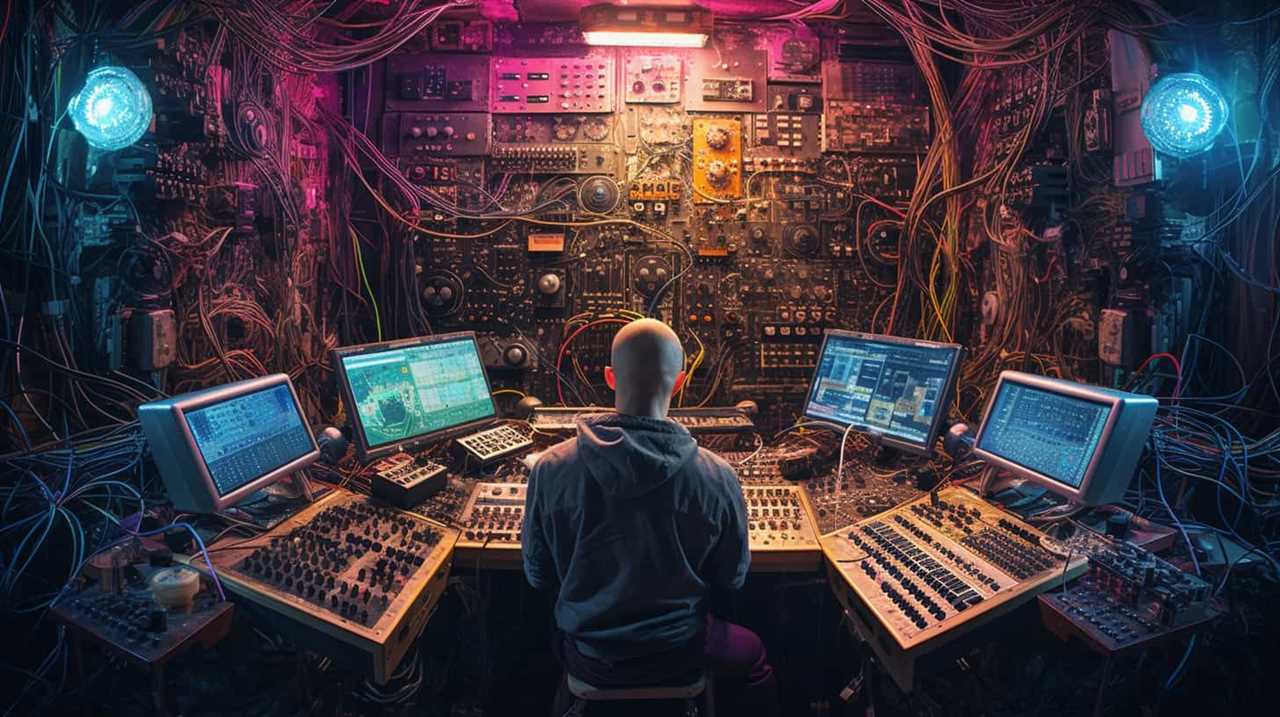
-
Adding modulation effects: Incorporate chorus, flanger, or phaser effects to add a subtle and eerie modulation to your sound. Adjust the rate and depth parameters to create a haunting and otherworldly atmosphere.
By manipulating reverb settings, experimenting with delay effects, and adding modulation effects, you can achieve the perfect dark tonality for your dark ambient synthesizer music.
Let your creativity guide you as you explore these techniques and create innovative and haunting soundscapes.
Mastering Techniques for Dark Ambient Synthesizer Music
With careful attention to detail and a deep understanding of the genre, we can achieve professional-level mastering for our dark ambient synthesizer music.
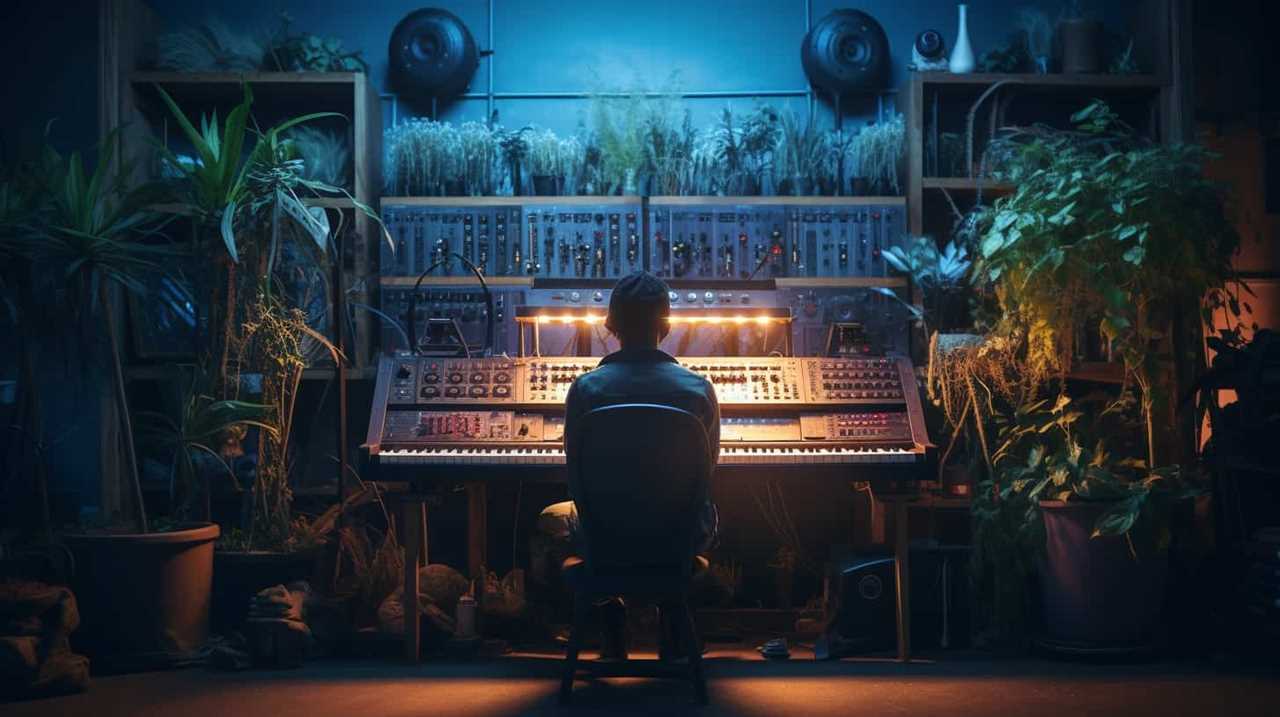
Understanding ambient influences is crucial in creating a captivating sonic landscape. By exploring atmospheric effects, we can enhance the immersive experience and evoke specific emotions in our listeners.
Experimenting with reverb, delay, and modulation can add depth and texture to our compositions, further immersing the audience in the haunting and ethereal world of dark ambient music.
Frequently Asked Questions
What Is the Best Synthesizer to Use for Dark Ambient Music?
When it comes to dark ambient music, the best synthesizer brands for creating that haunting atmosphere are Moog, Korg, and Roland. These brands offer a wide range of synthesizers that excel in producing eerie and atmospheric sounds.
In terms of top dark ambient albums, artists like Lustmord, Atrium Carceri, and Kammarheit have pushed the boundaries of the genre with their innovative use of synthesizers. Their albums serve as great examples of how to master the art of dark ambient synthesizer music.
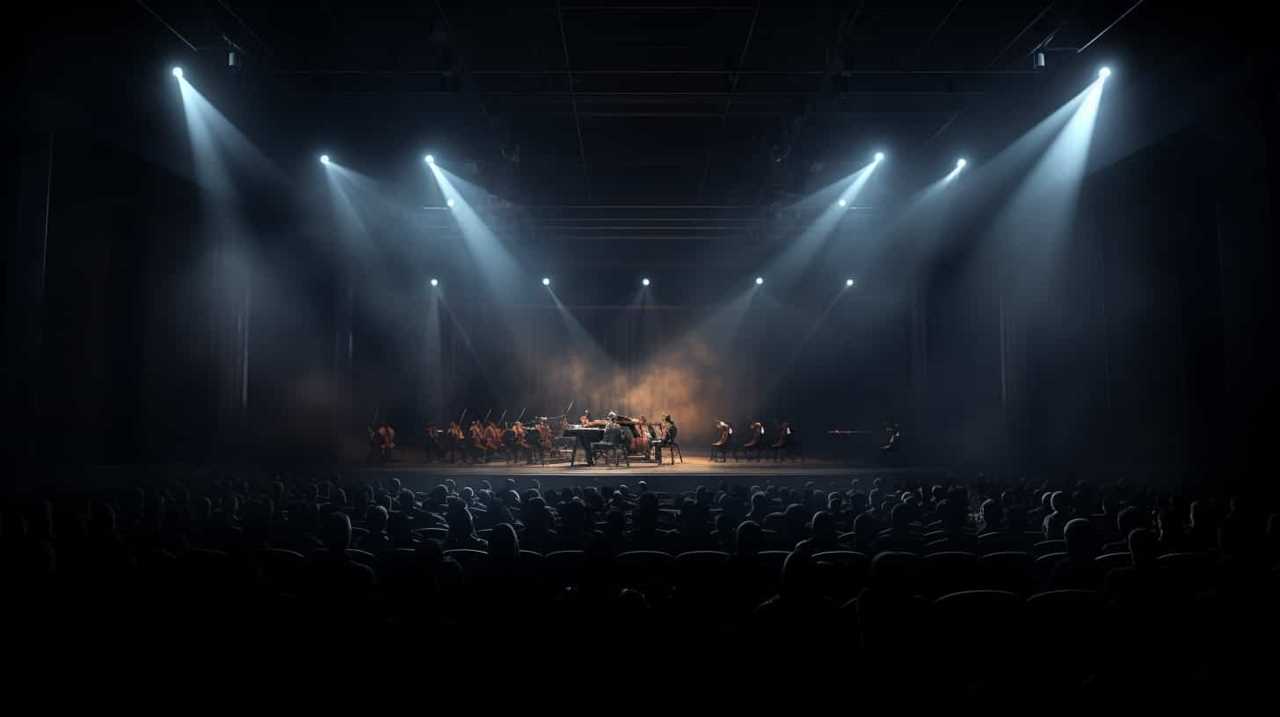
How Can I Create a Haunting Atmosphere Using Synthesizers?
Creating a haunting atmosphere using synthesizers involves several techniques.
First, we focus on creating eerie melodies by using dissonant intervals and unconventional scales.
Next, we utilize reverb and delay effects to add depth and create a sense of space. By adjusting the parameters of these effects, we can achieve a ghostly and ethereal sound.
Experimenting with different sound textures and layering multiple synthesizers can further enhance the haunting atmosphere.
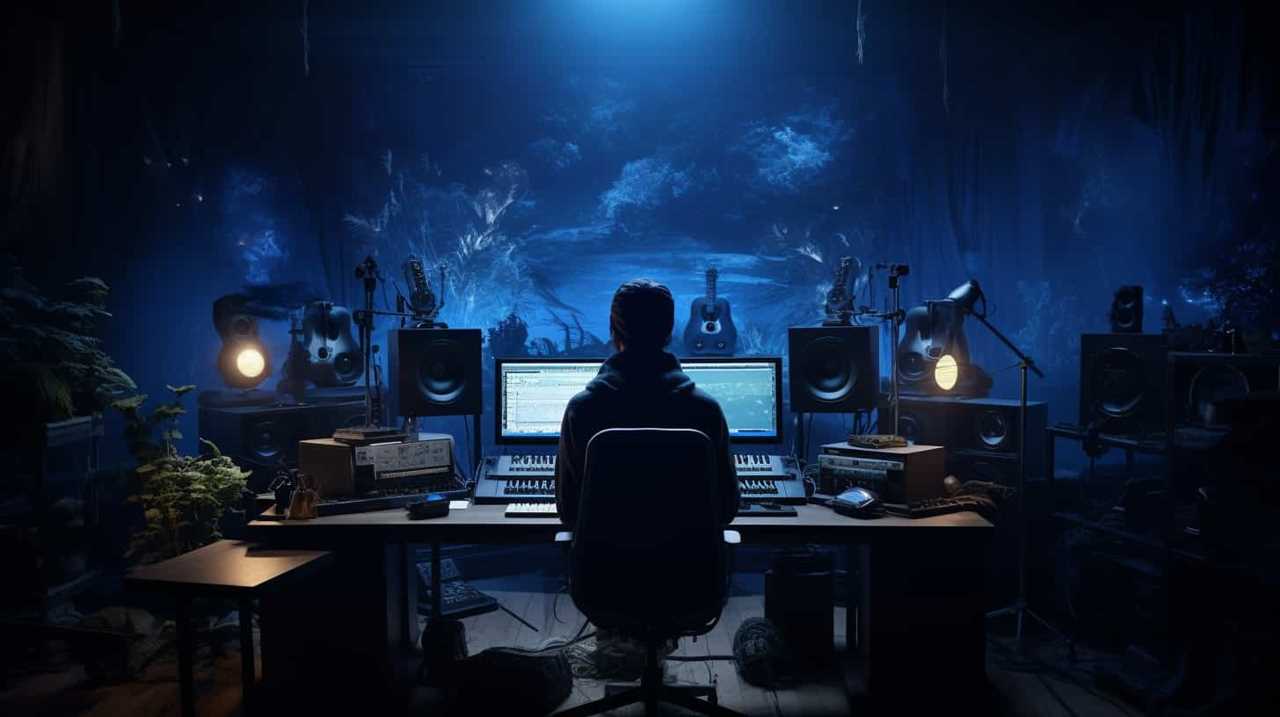
Are There Any Specific Techniques for Achieving a Dark Tonality in Synthesizer Music?
When it comes to achieving a dark tonality in synthesizer music, there are indeed specific techniques that can be utilized.
Creating tension through dissonance is one effective method that can add an eerie and haunting quality to the sound.
Additionally, utilizing reverb and delay effects can enhance the atmosphere, resulting in a more atmospheric and otherworldly vibe.
These techniques allow for innovative and experimental exploration, pushing the boundaries of dark ambient synthesizer music.
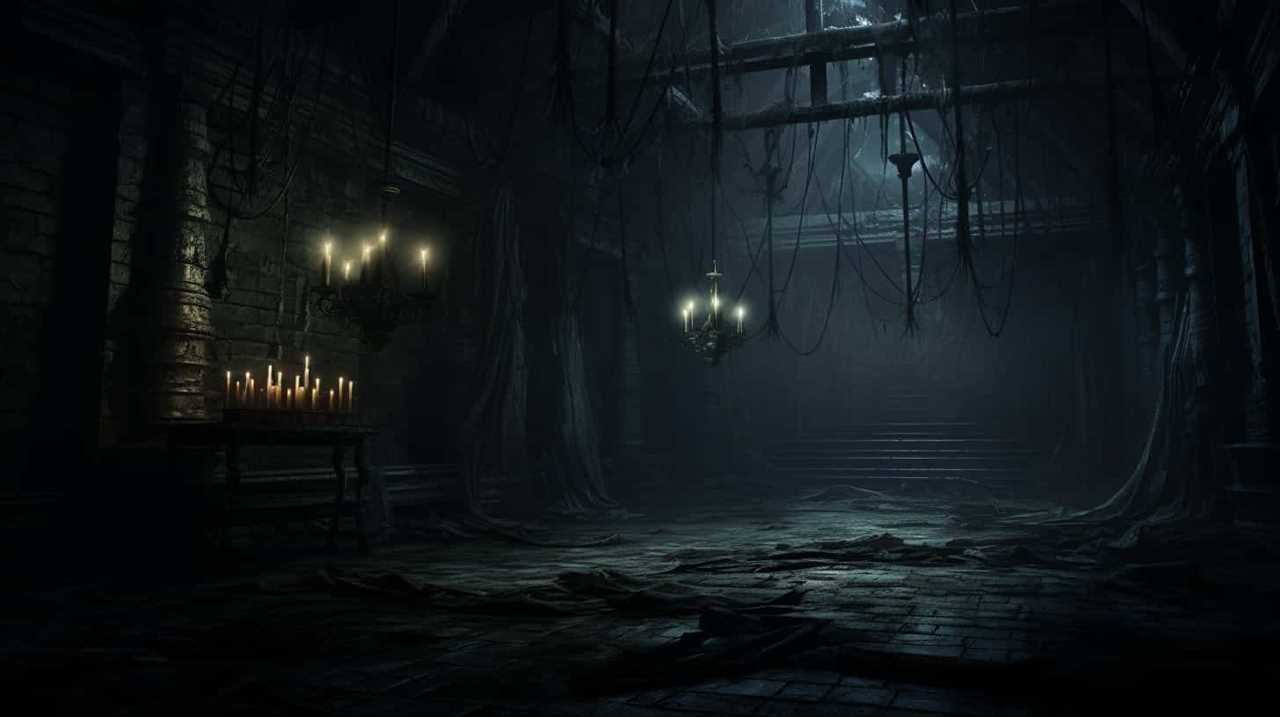
Can You Explain How to Effectively Layer Synths to Create Complex Soundscapes?
When it comes to creating complex soundscapes in dark ambient music, effective layering techniques are key. By combining multiple synths and carefully crafting their individual sounds, we can achieve a rich and immersive sonic experience.
Layering allows us to add depth and texture to our compositions, creating a sense of space and atmosphere. It also gives us the opportunity to experiment with different timbres and effects, pushing the boundaries of sound design in this genre.
What Mastering Techniques Should I Use to Enhance the Quality of My Dark Ambient Synthesizer Music?
When it comes to mastering techniques for creating depth in our dark ambient synthesizer music, we need to consider the power of effects.
By carefully selecting and applying effects such as reverb, delay, and modulation, we can enhance the darkness and atmosphere of our compositions.
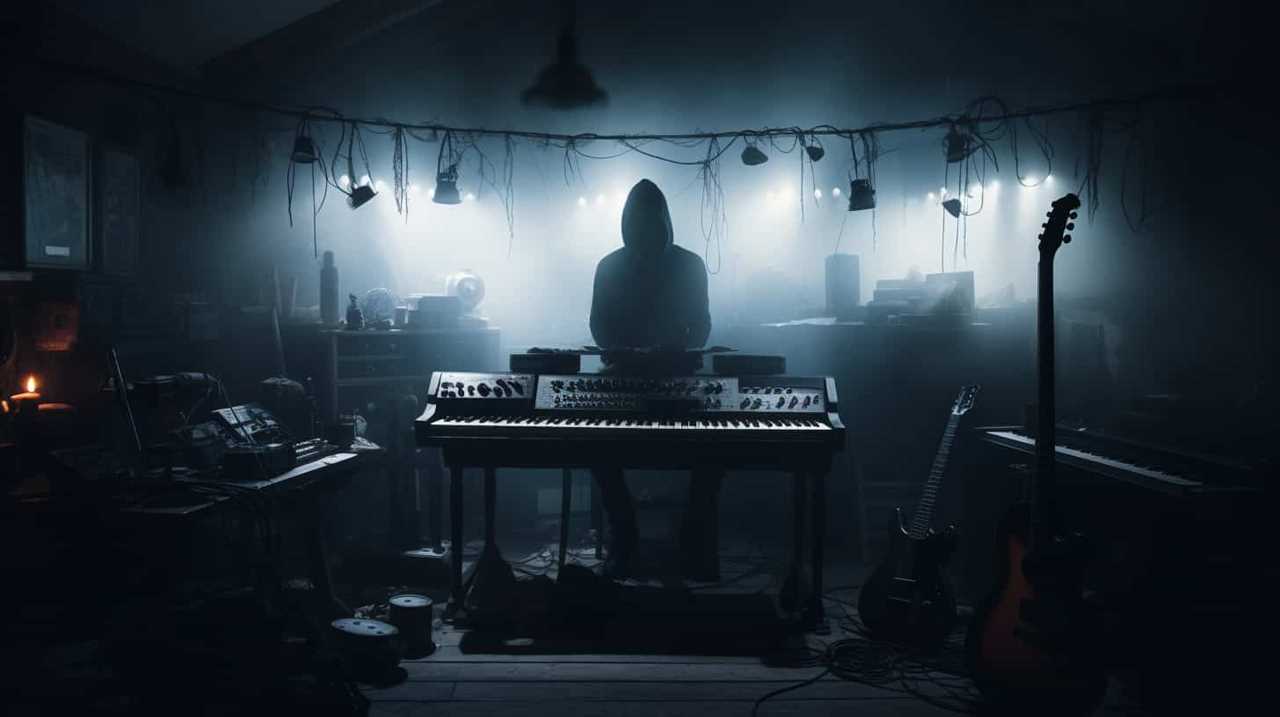
Experimenting with different settings and combinations can lead to unique and innovative sounds.
Additionally, paying attention to the overall frequency balance, dynamics, and stereo imaging during the mastering process can significantly enhance the quality of our dark ambient tracks.
Conclusion
In conclusion, mastering the art of dark ambient synthesizer music requires understanding the capabilities of synthesizers and choosing the right patches.
Manipulating waveforms, exploring filter cutoff techniques, and applying resonance can help create dark and atmospheric sounds.
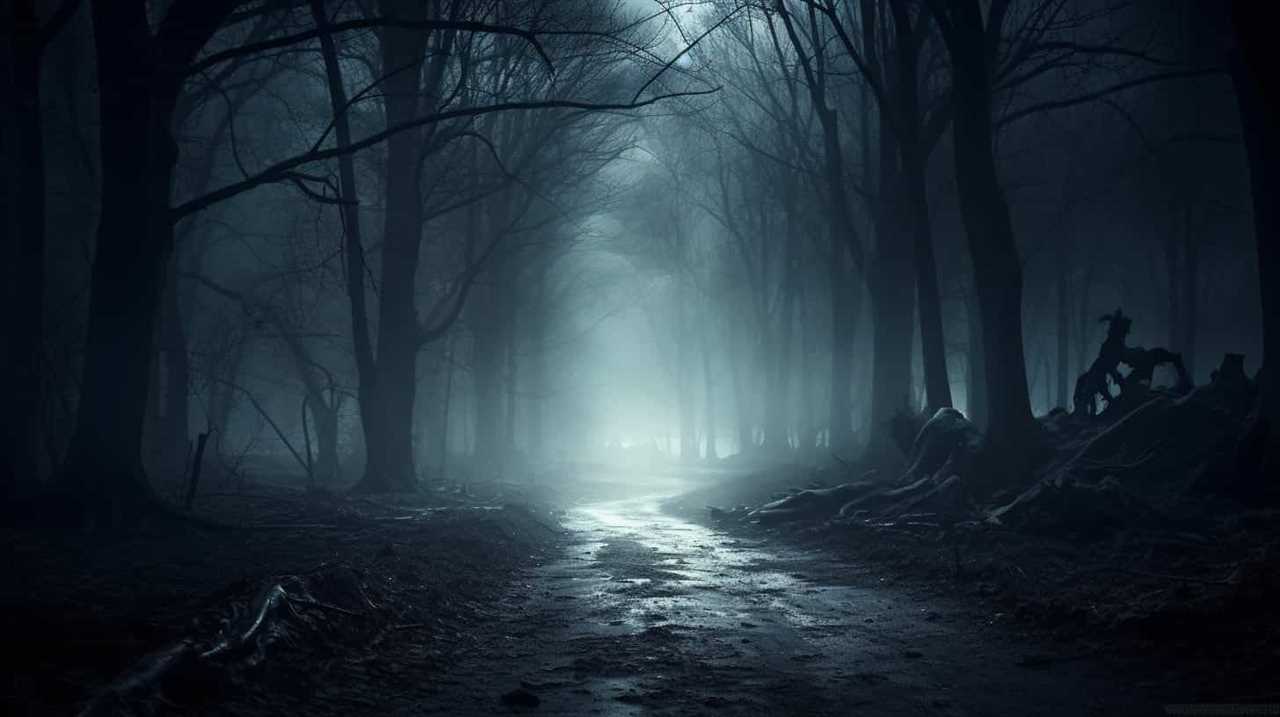
Utilizing the power of the arpeggiator and layering synths can add complexity to soundscapes.
Achieving the perfect dark tonality and employing mastering techniques will enhance the overall quality of the music.
Like a painter blending colors on a canvas, these techniques allow musicians to create immersive and haunting sonic landscapes.
-
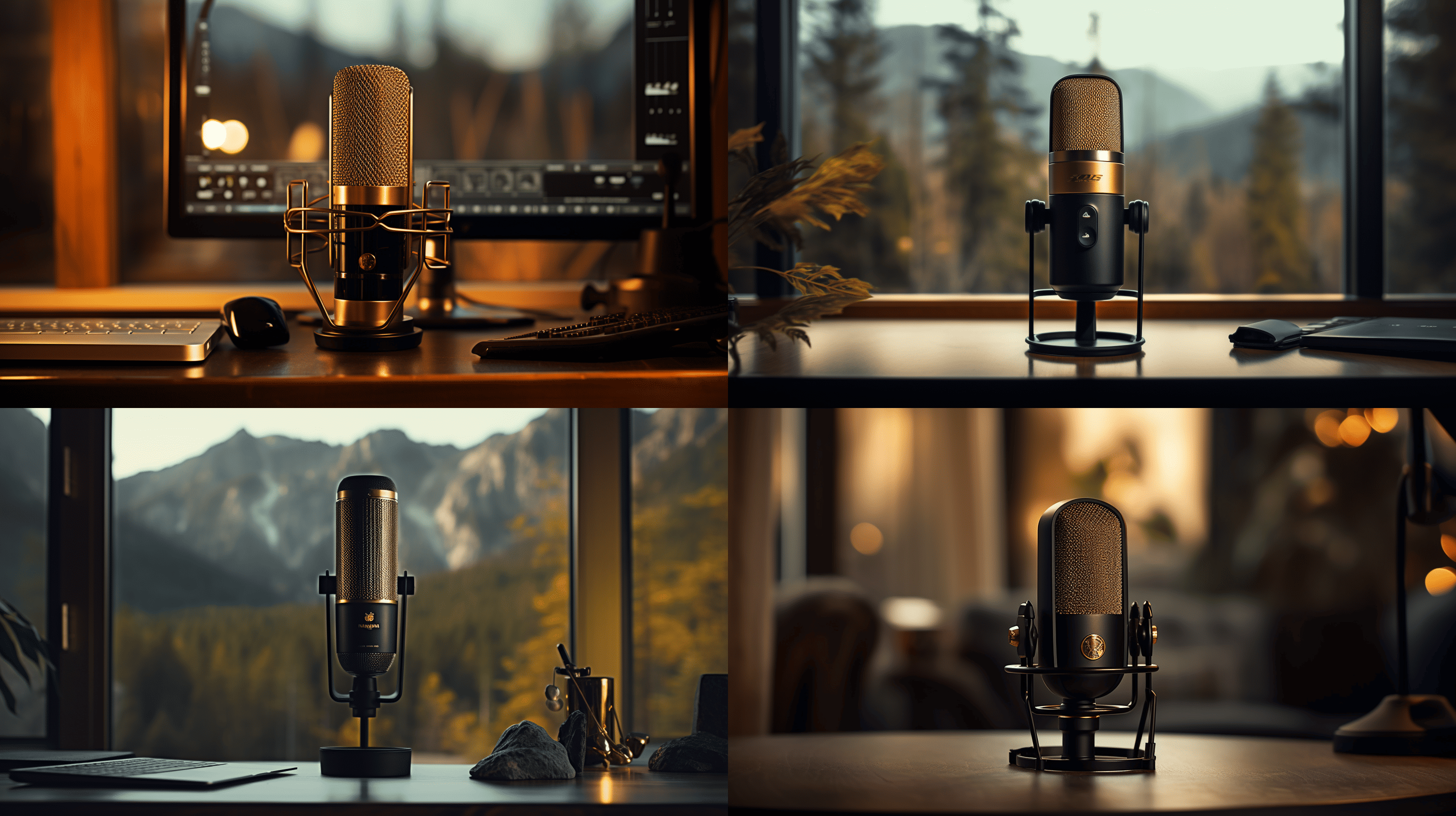
 Microphone3 weeks ago
Microphone3 weeks agoUnleash Your Inner Podcaster: Discover the Best Microphone for Crisp, Clear Audio
-

 Music Theory3 weeks ago
Music Theory3 weeks agoUnlocking Nature’s Harmony: The Power of 432 Hz Frequency in Sound & Music for Enhanced Living and Well-Being
-

 Sound Design4 weeks ago
Sound Design4 weeks agoWhat Is the Difference Between a Sound Engineer and A Sound Designer?
-

 Native Instruments Kontakt3 weeks ago
Native Instruments Kontakt3 weeks agoVOCAL AI – Animated Intelligence: The Ultimate Vocal Playground
-

 Sound Design4 weeks ago
Sound Design4 weeks agoWhy Sound Engineer
-
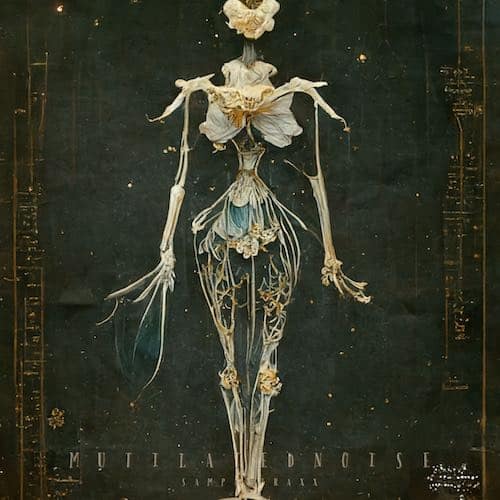
 Composing3 weeks ago
Composing3 weeks agoMUTILATED NOISE by SampleTraxx: The Next Generation Sound Collection
-

 Audio Production4 days ago
Audio Production4 days agoUnleashing Sound Therapy: Incorporating Acoustic Design in a Wellness Centre
-

 Expert Guides4 weeks ago
Expert Guides4 weeks agoHow Do You Become a Sound Designer















